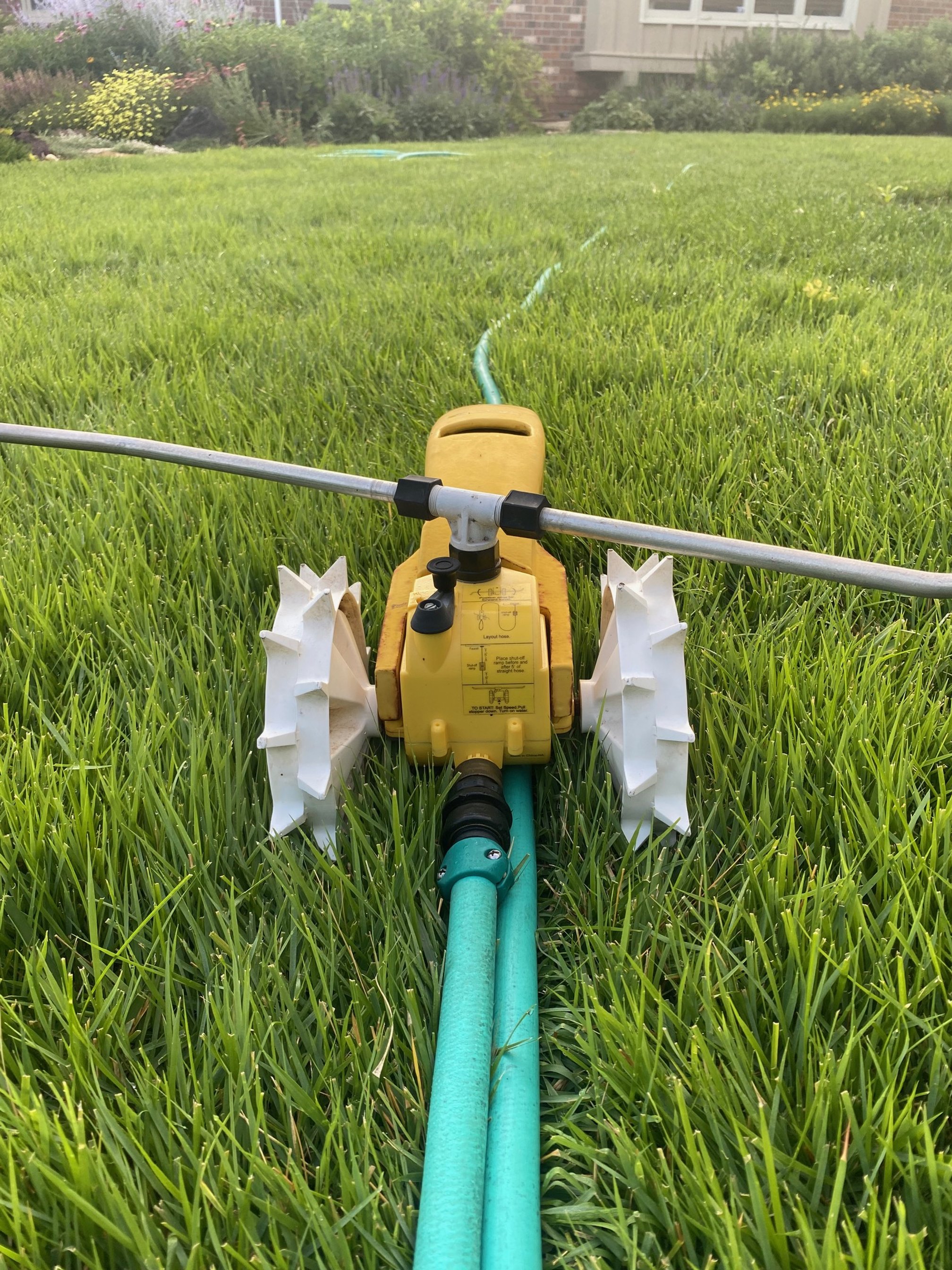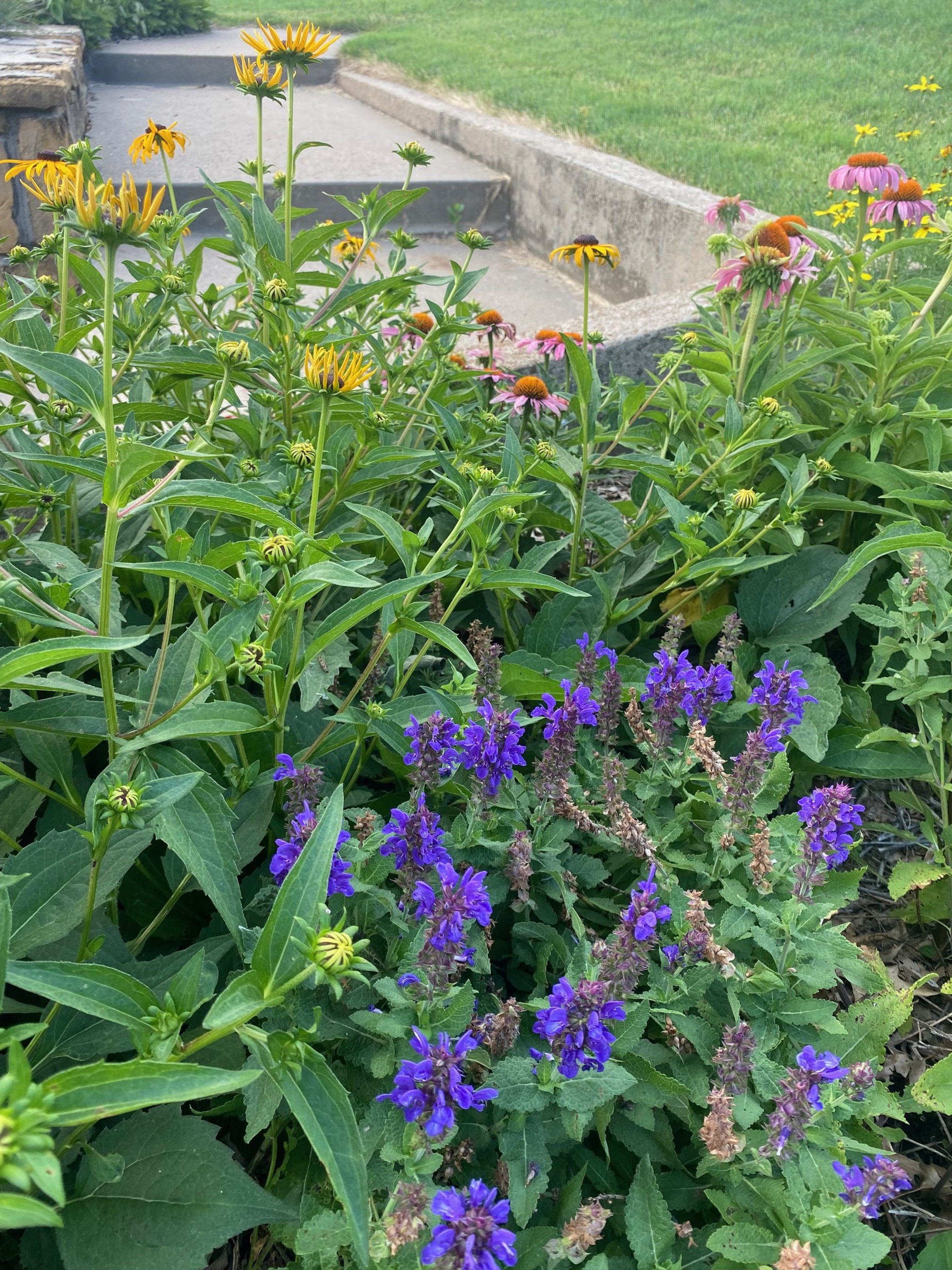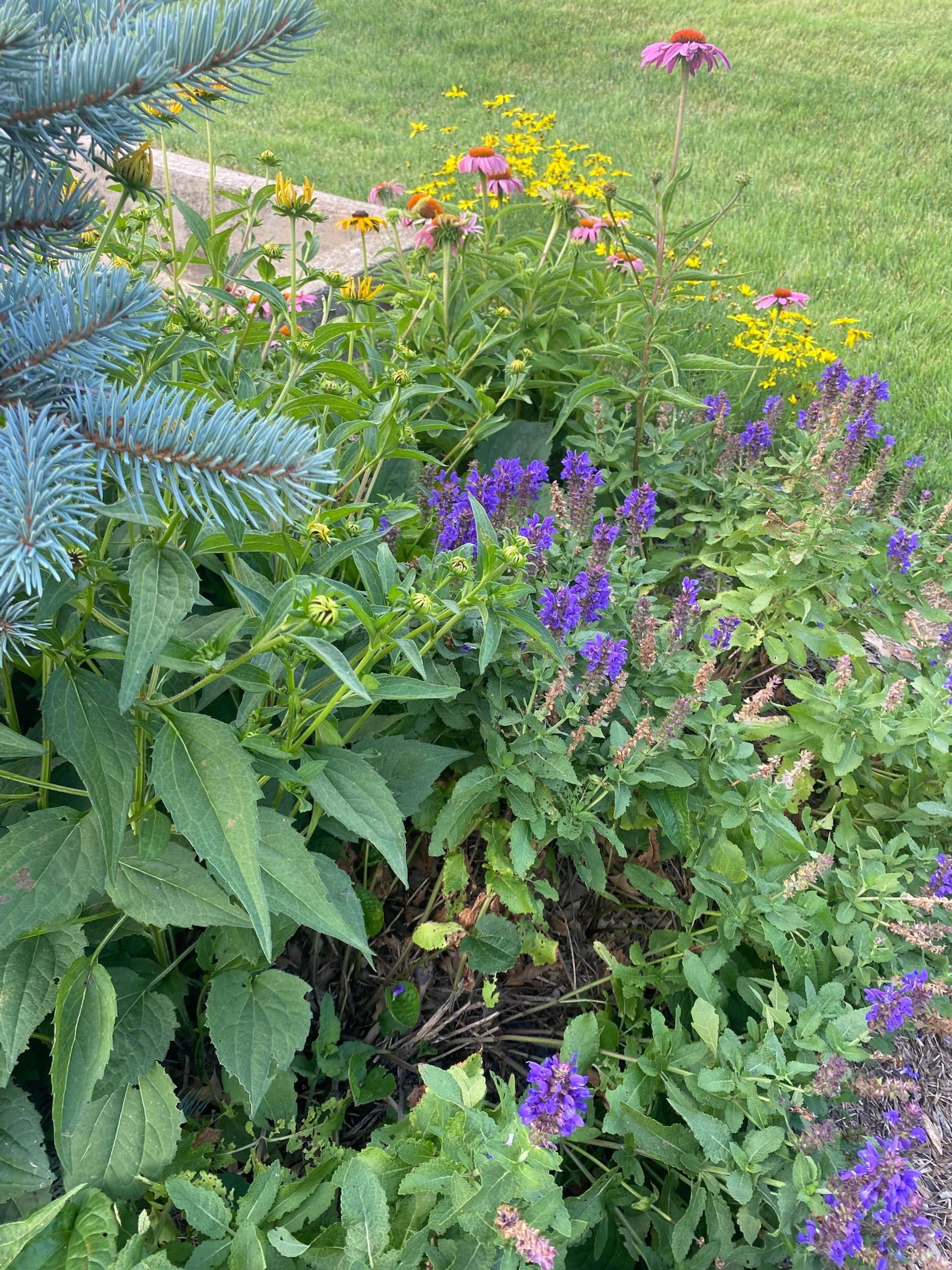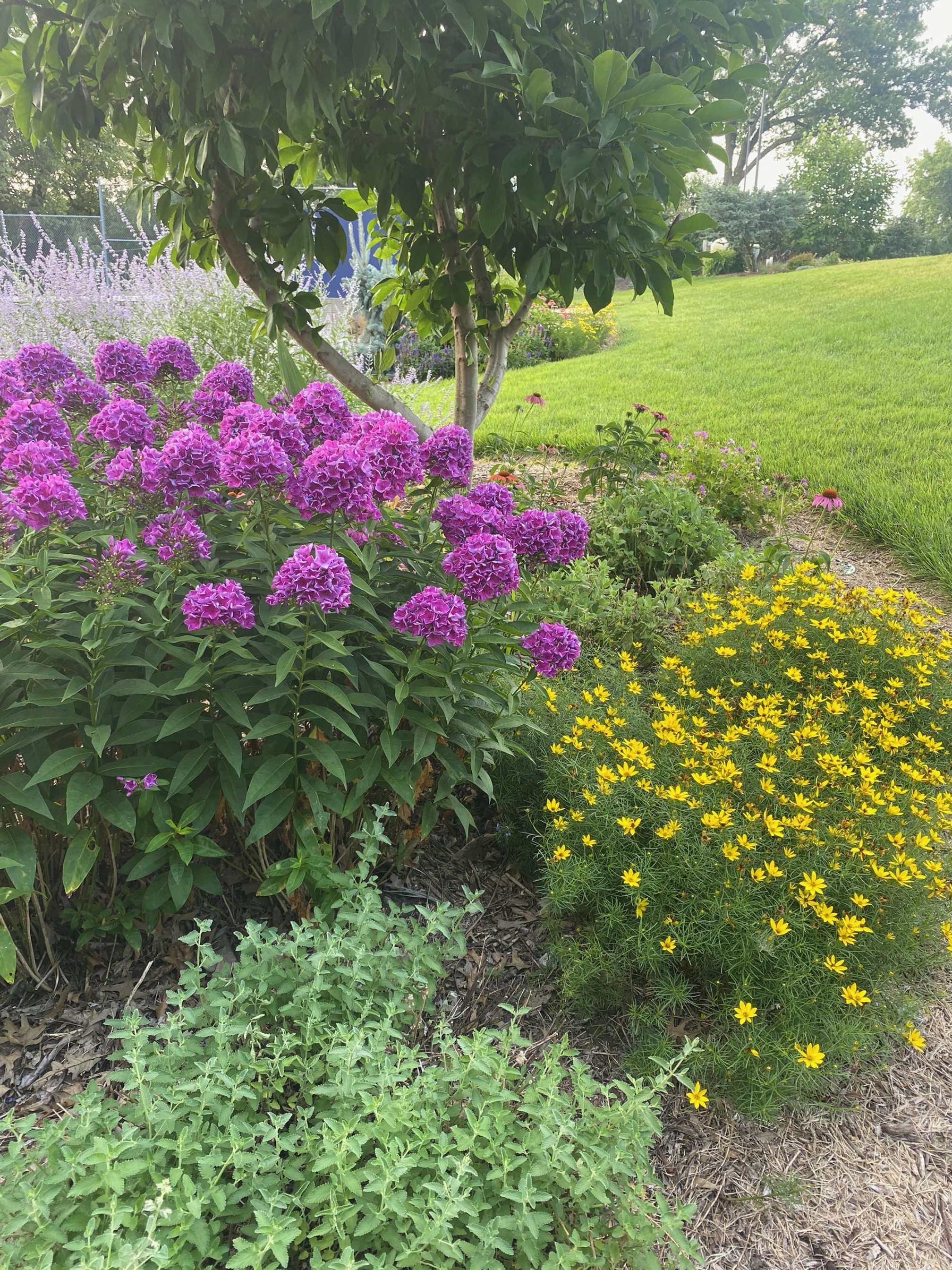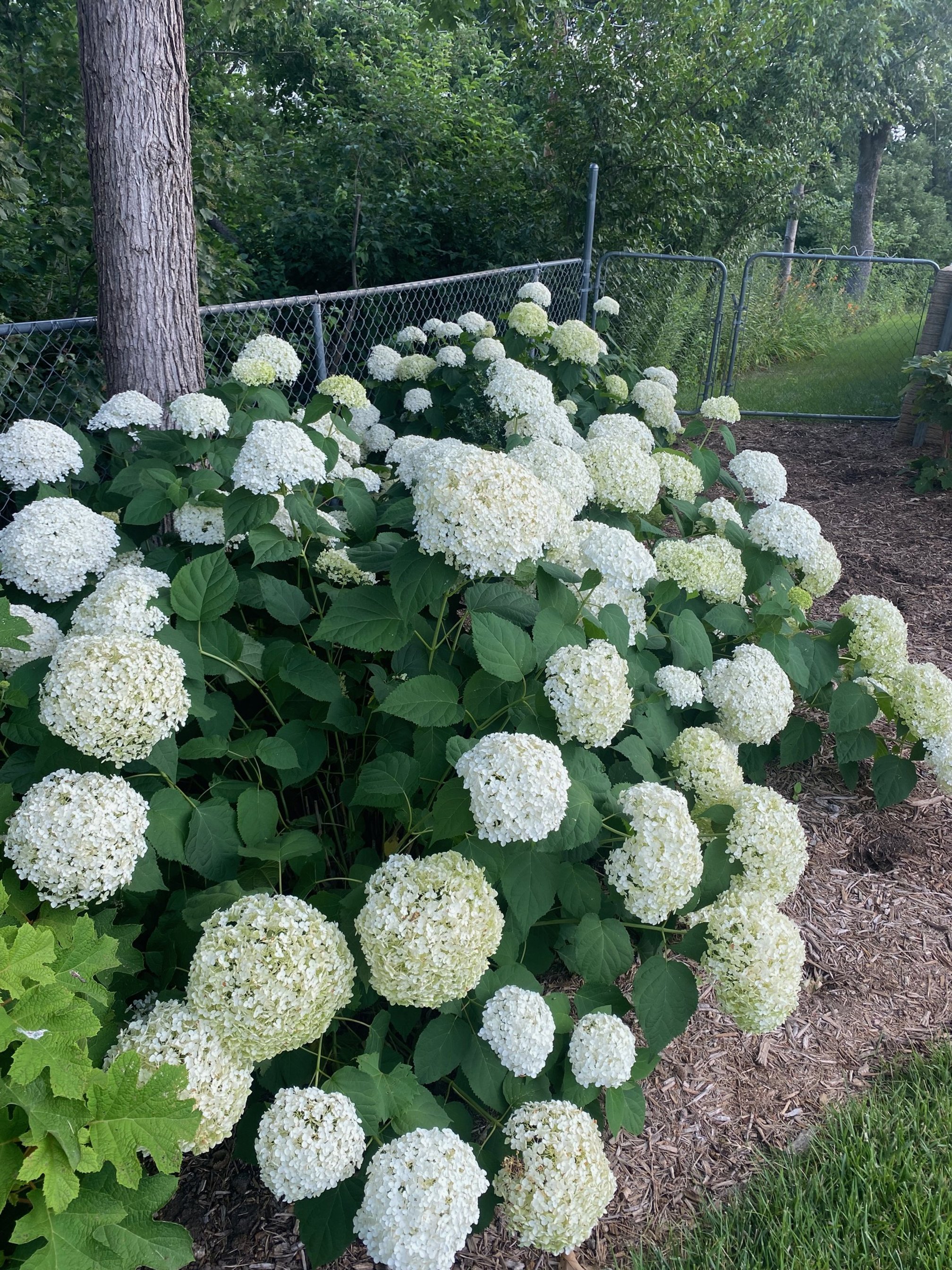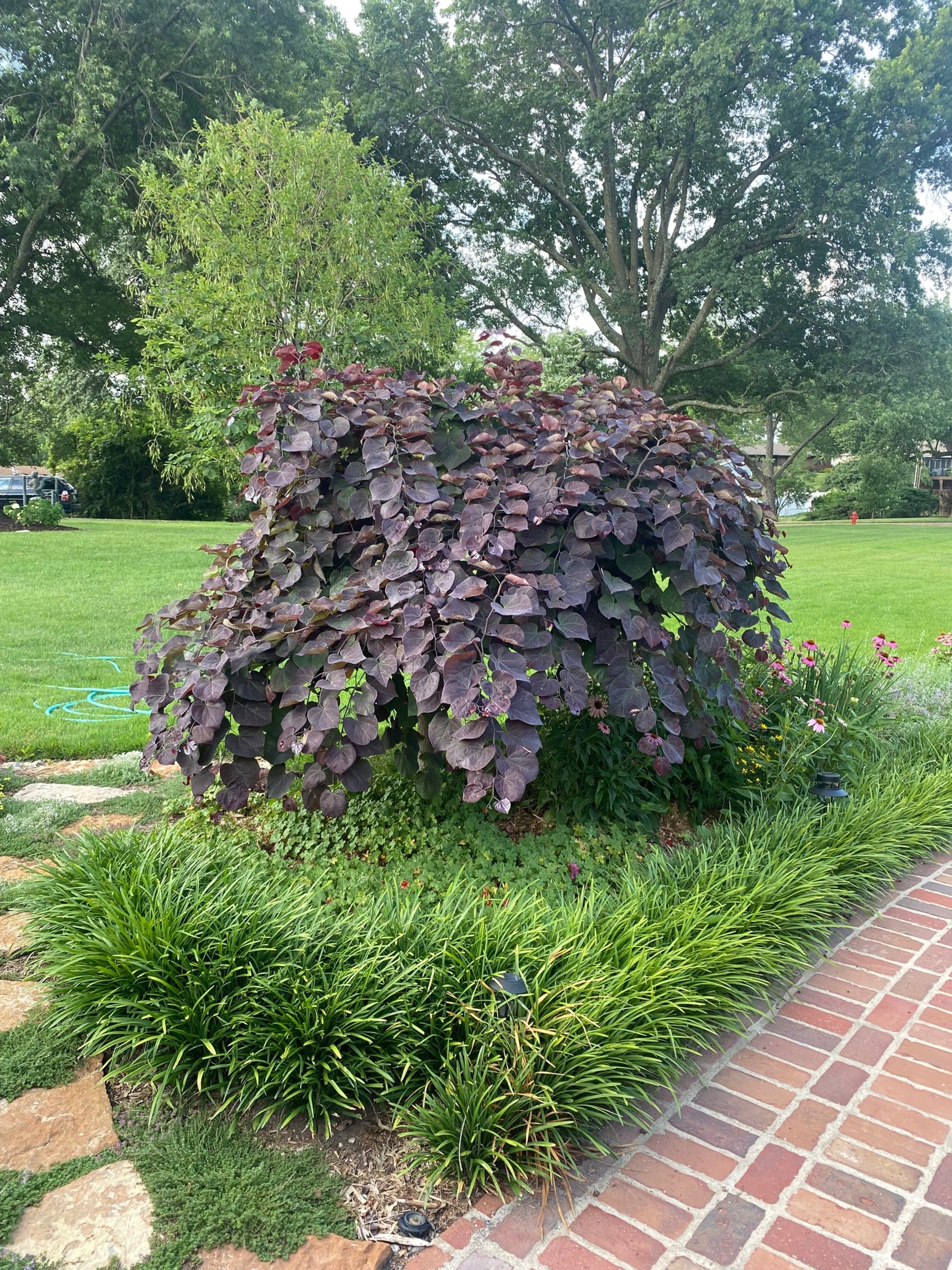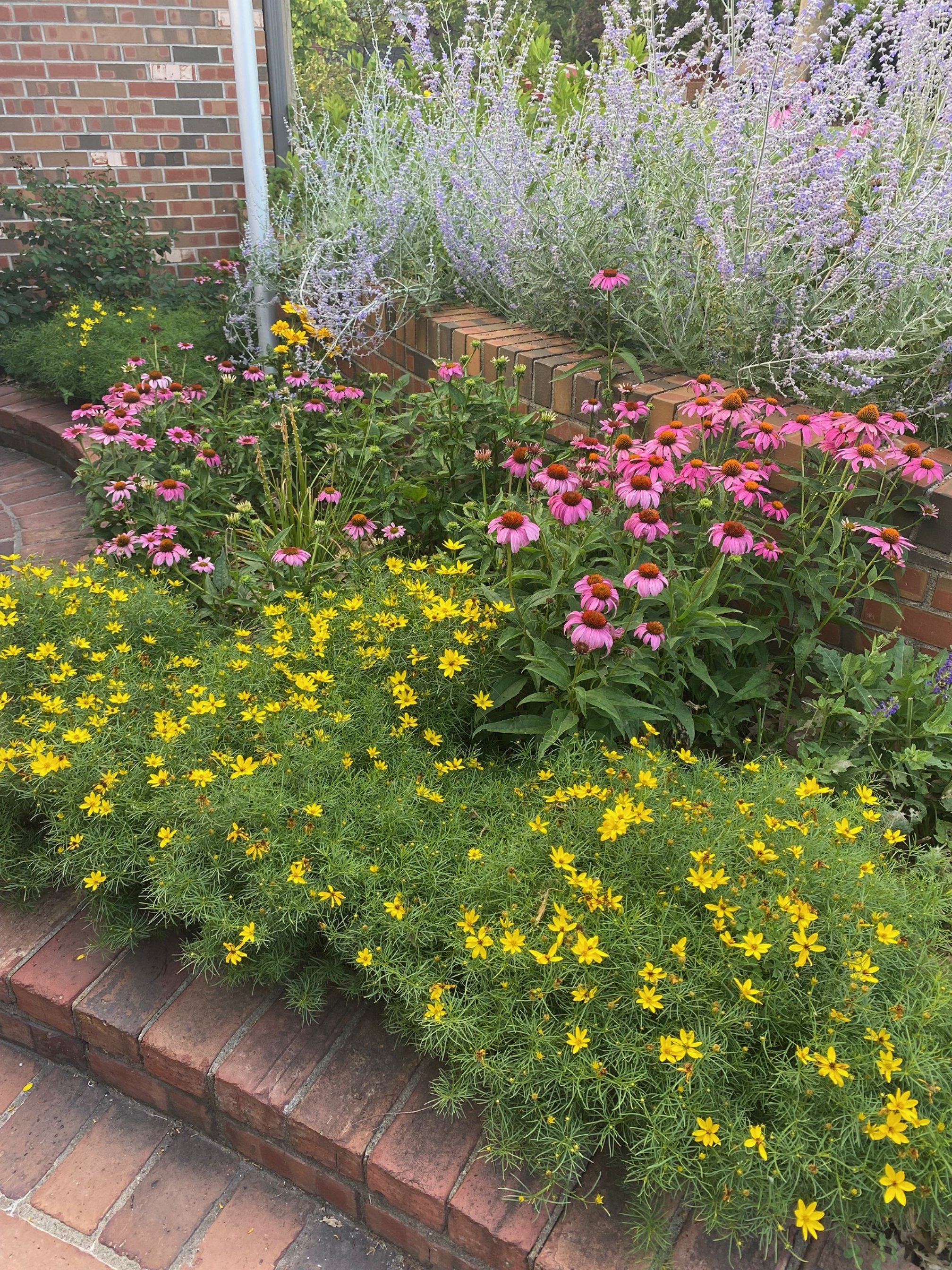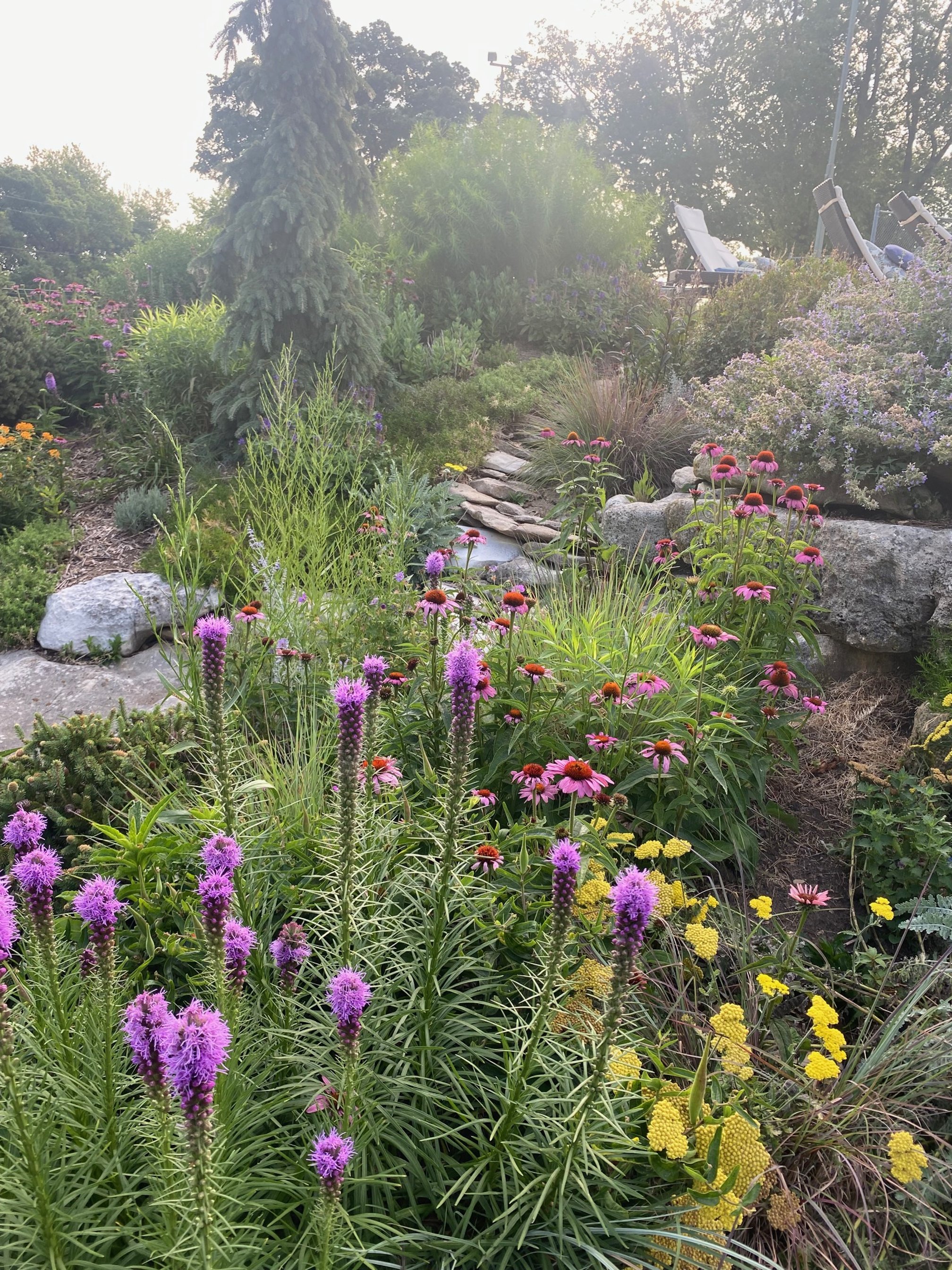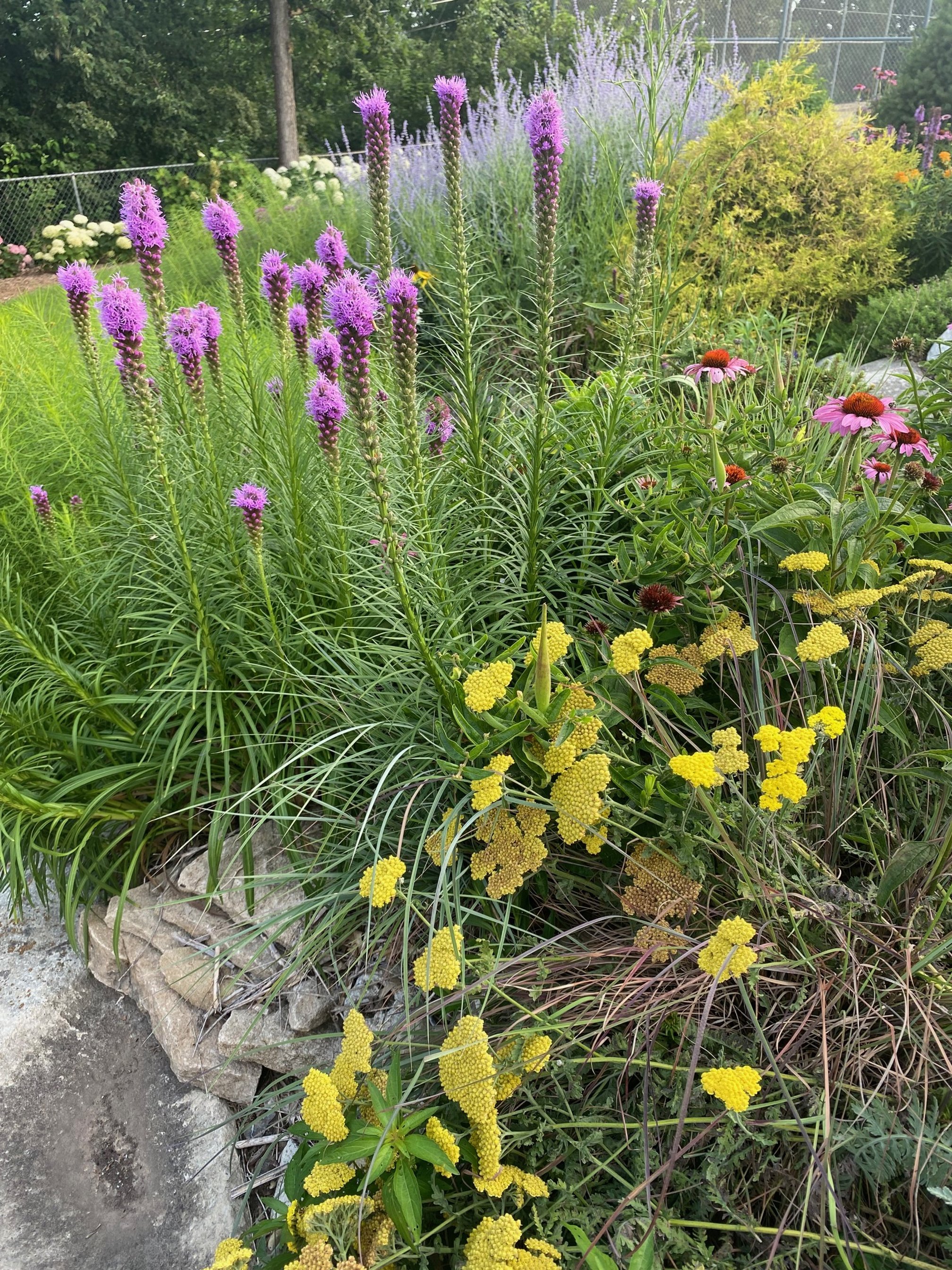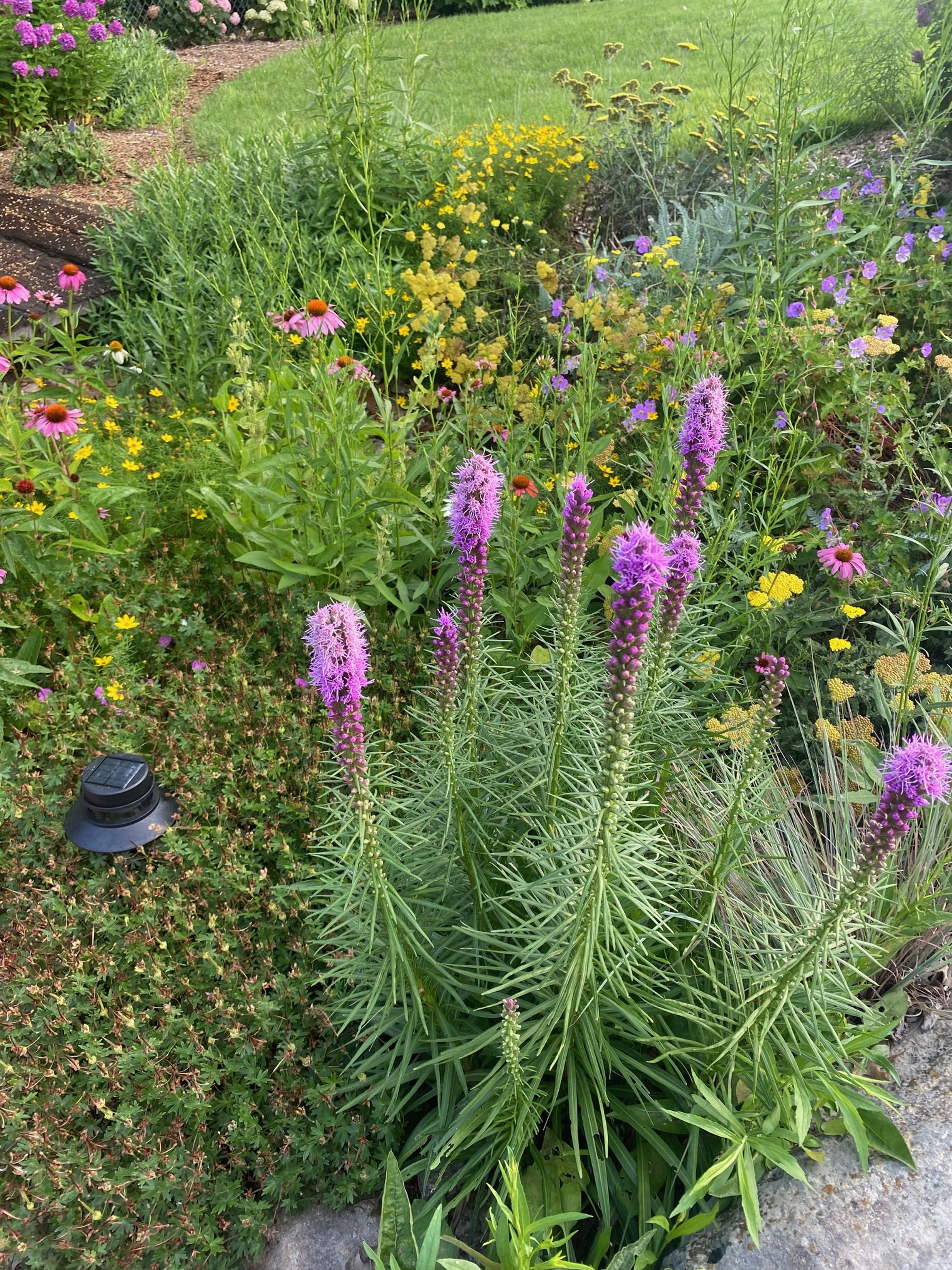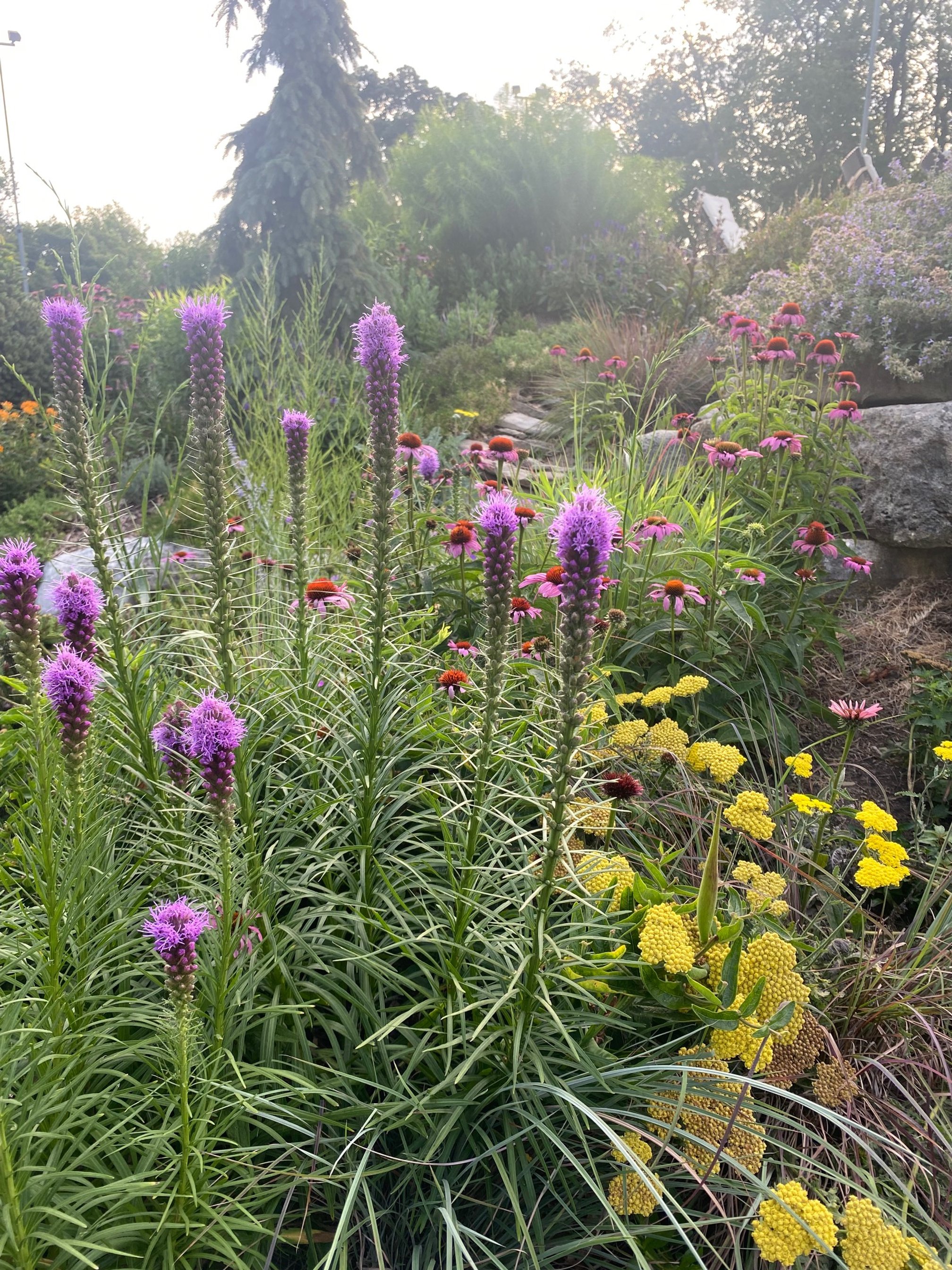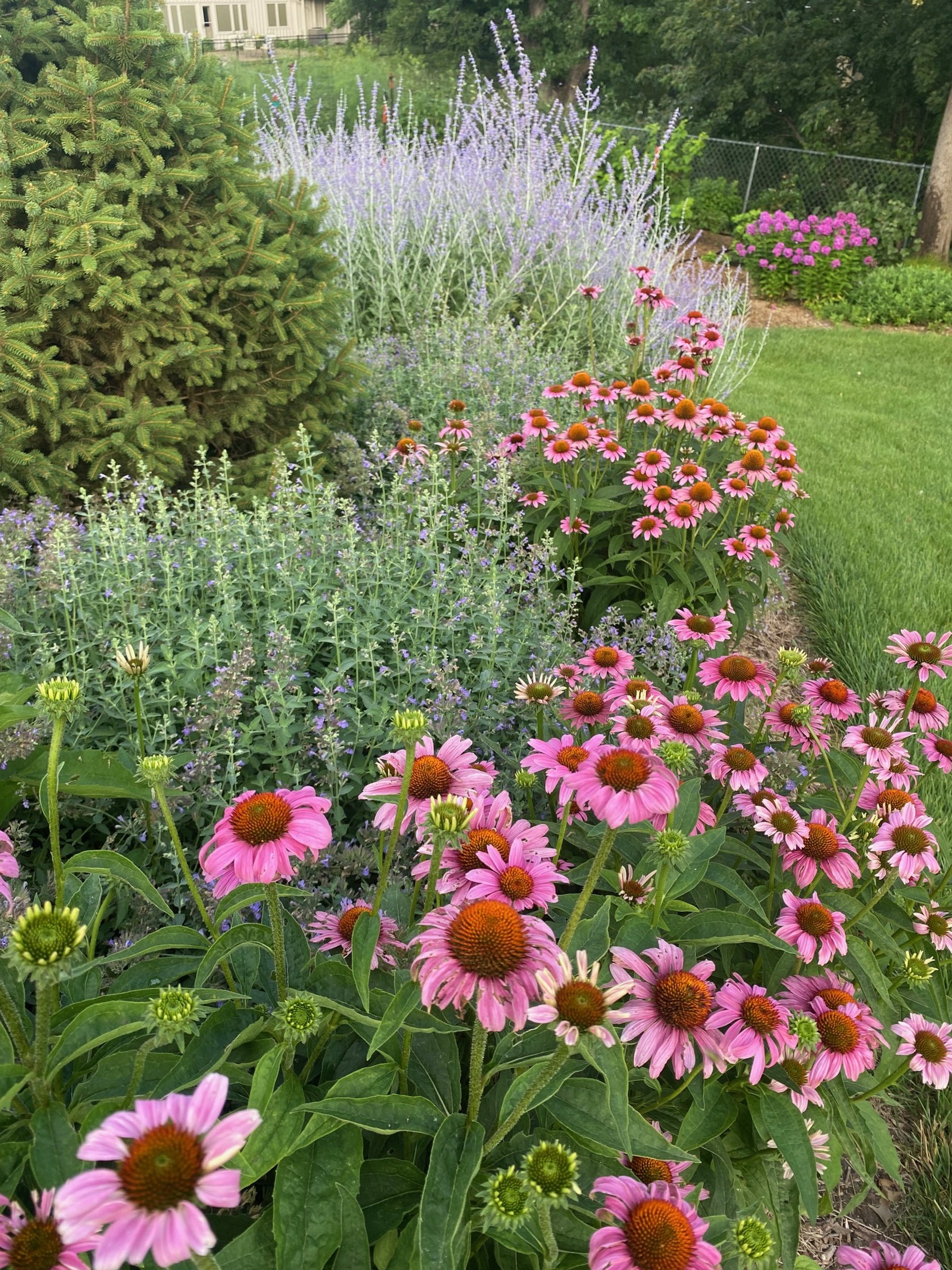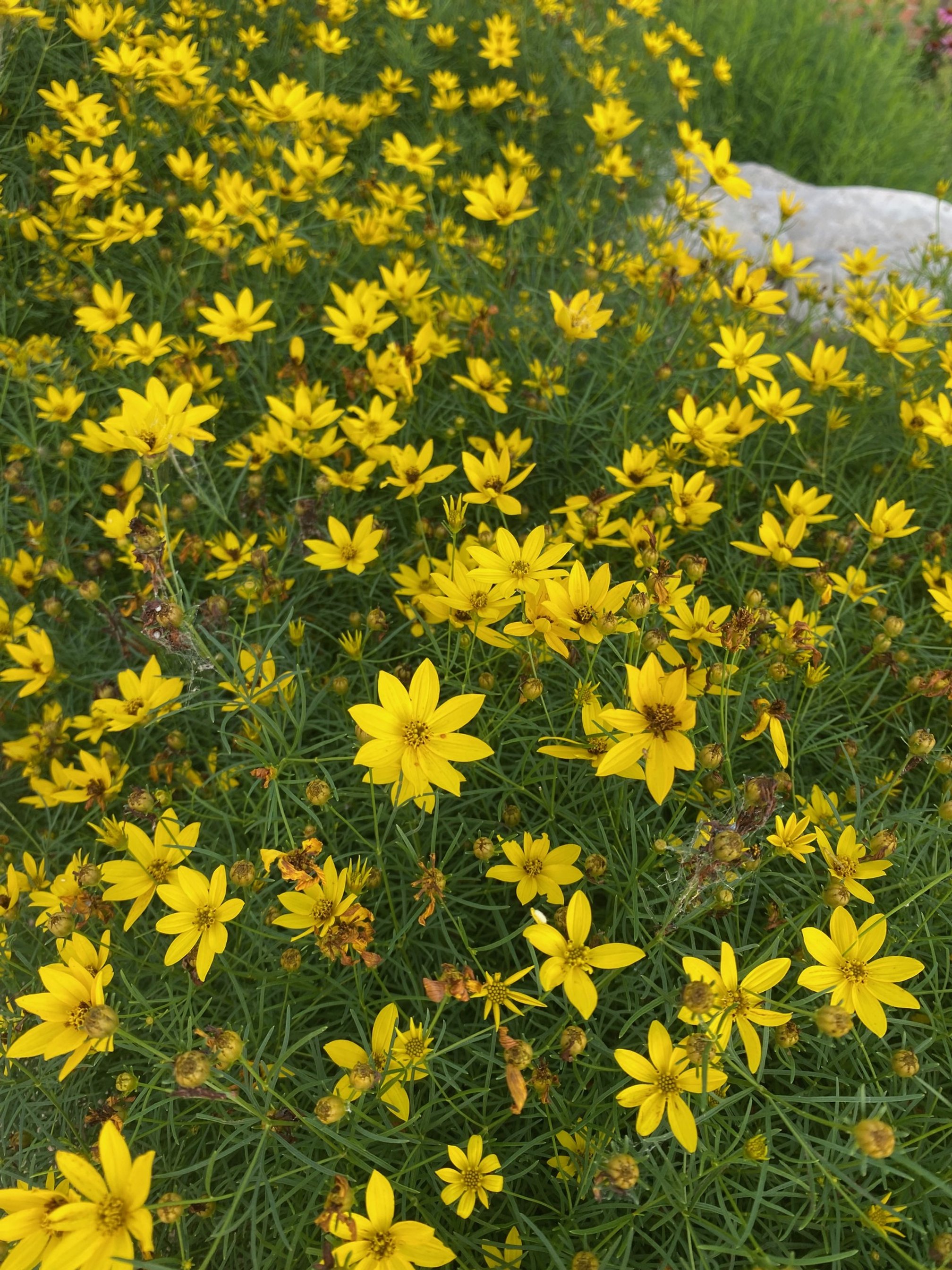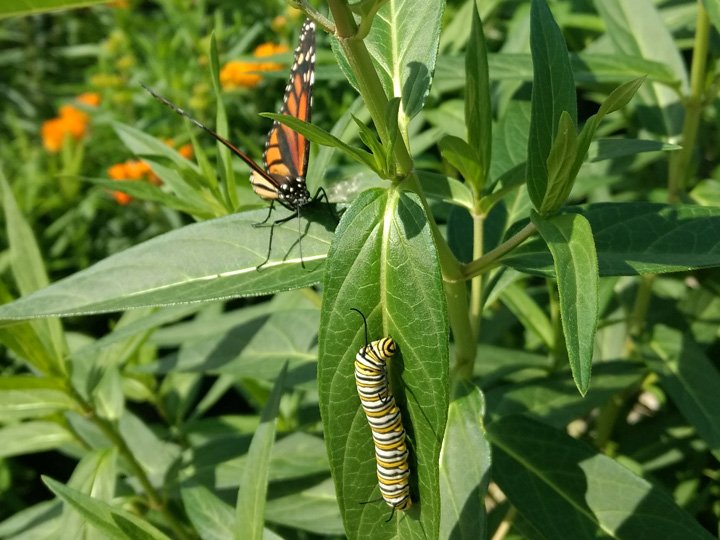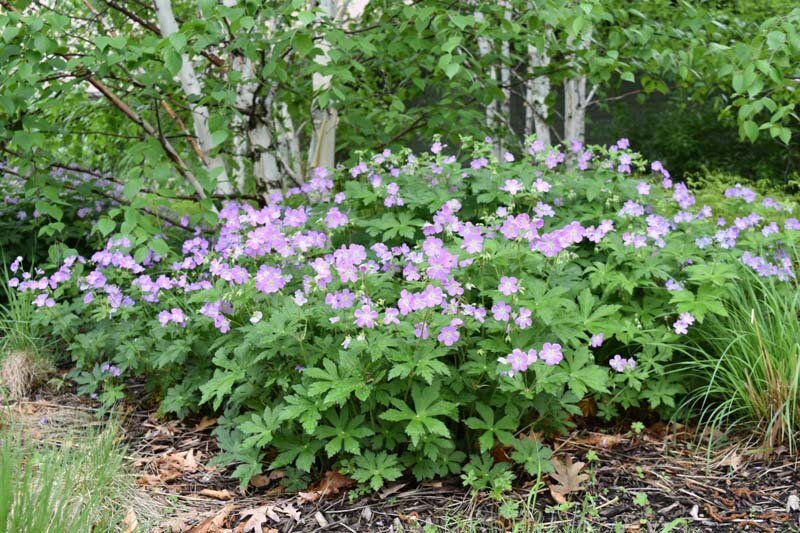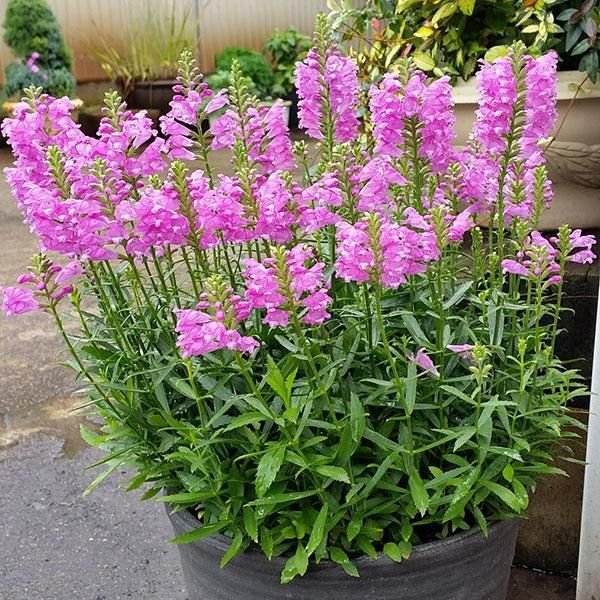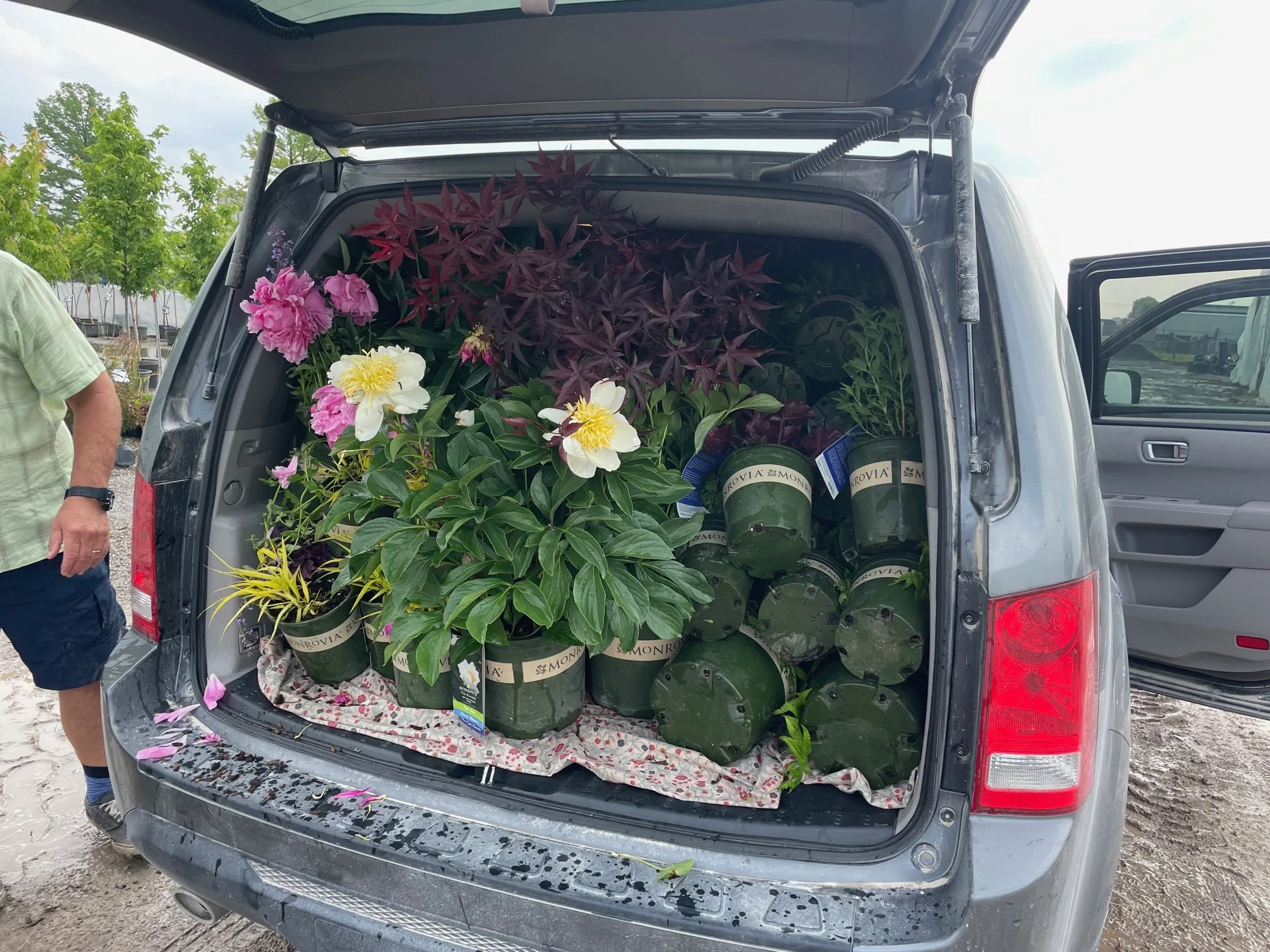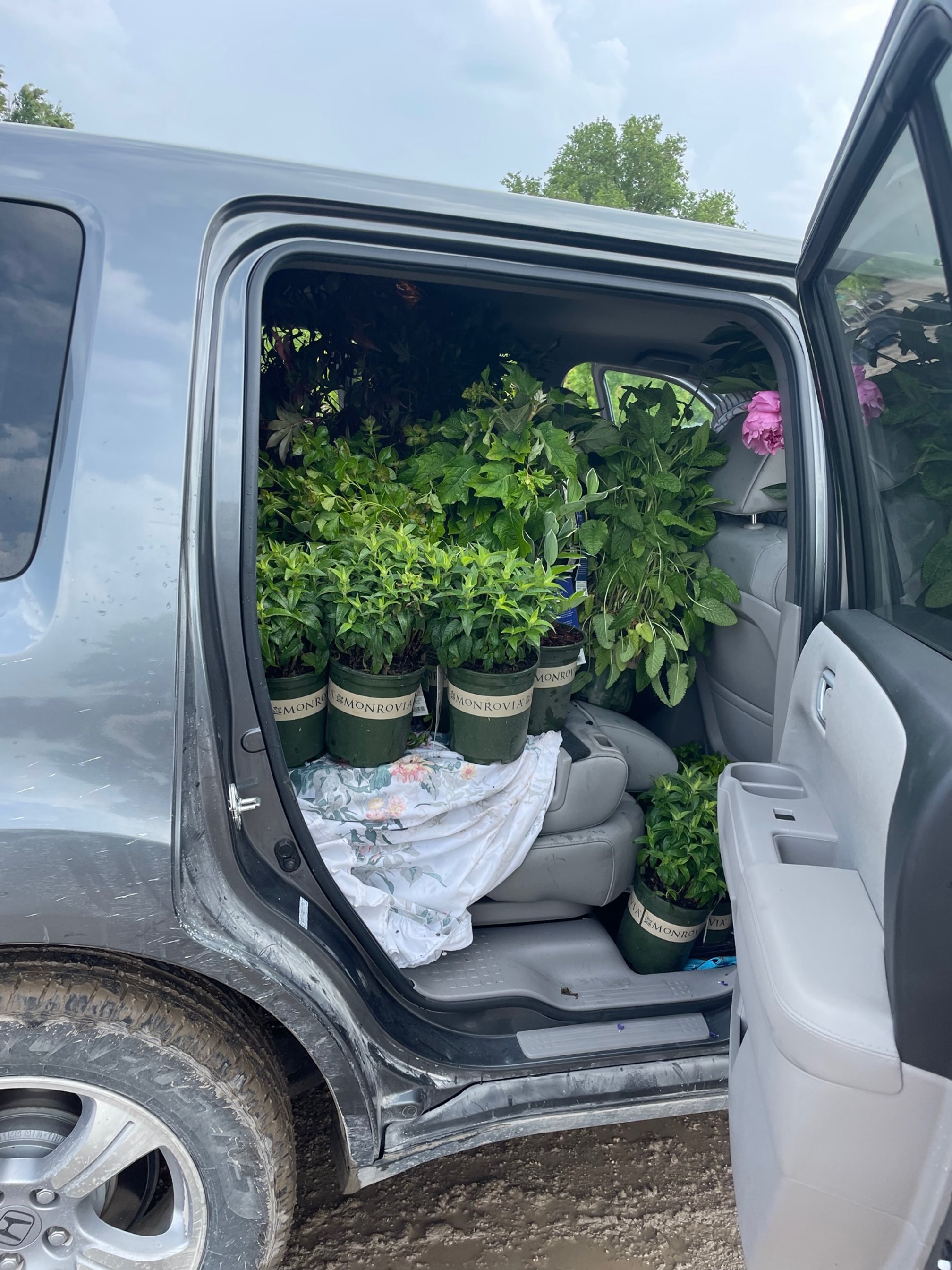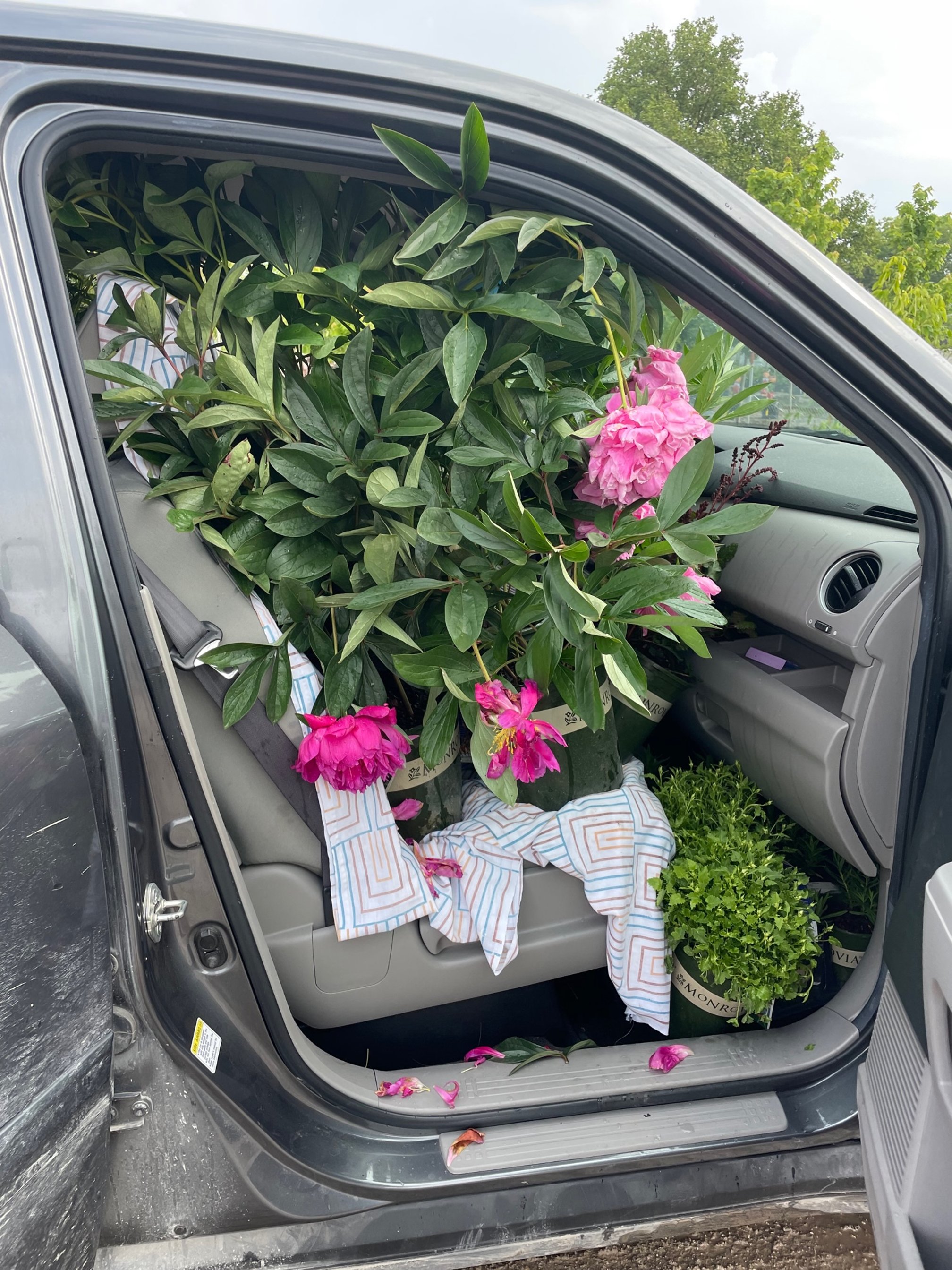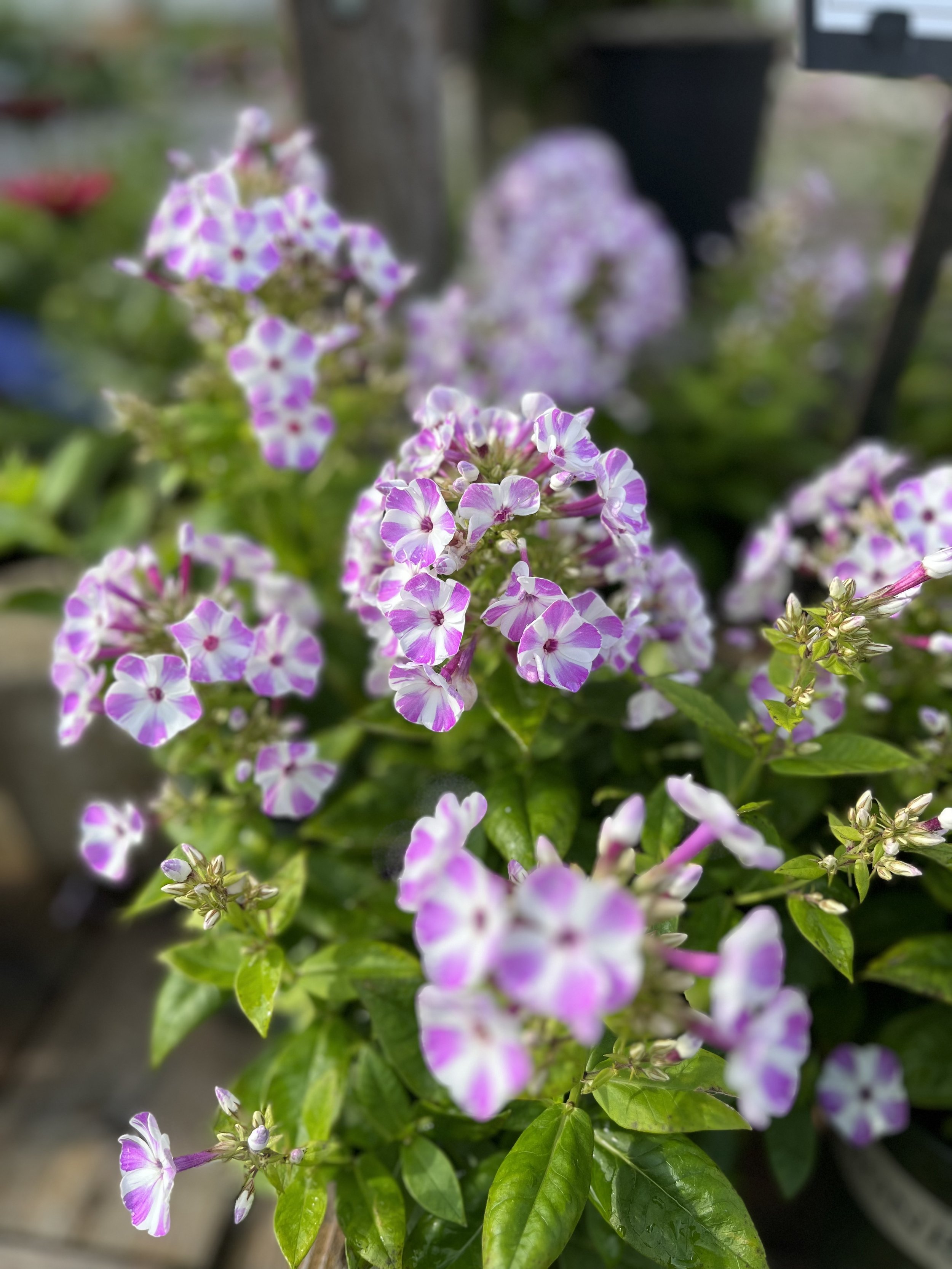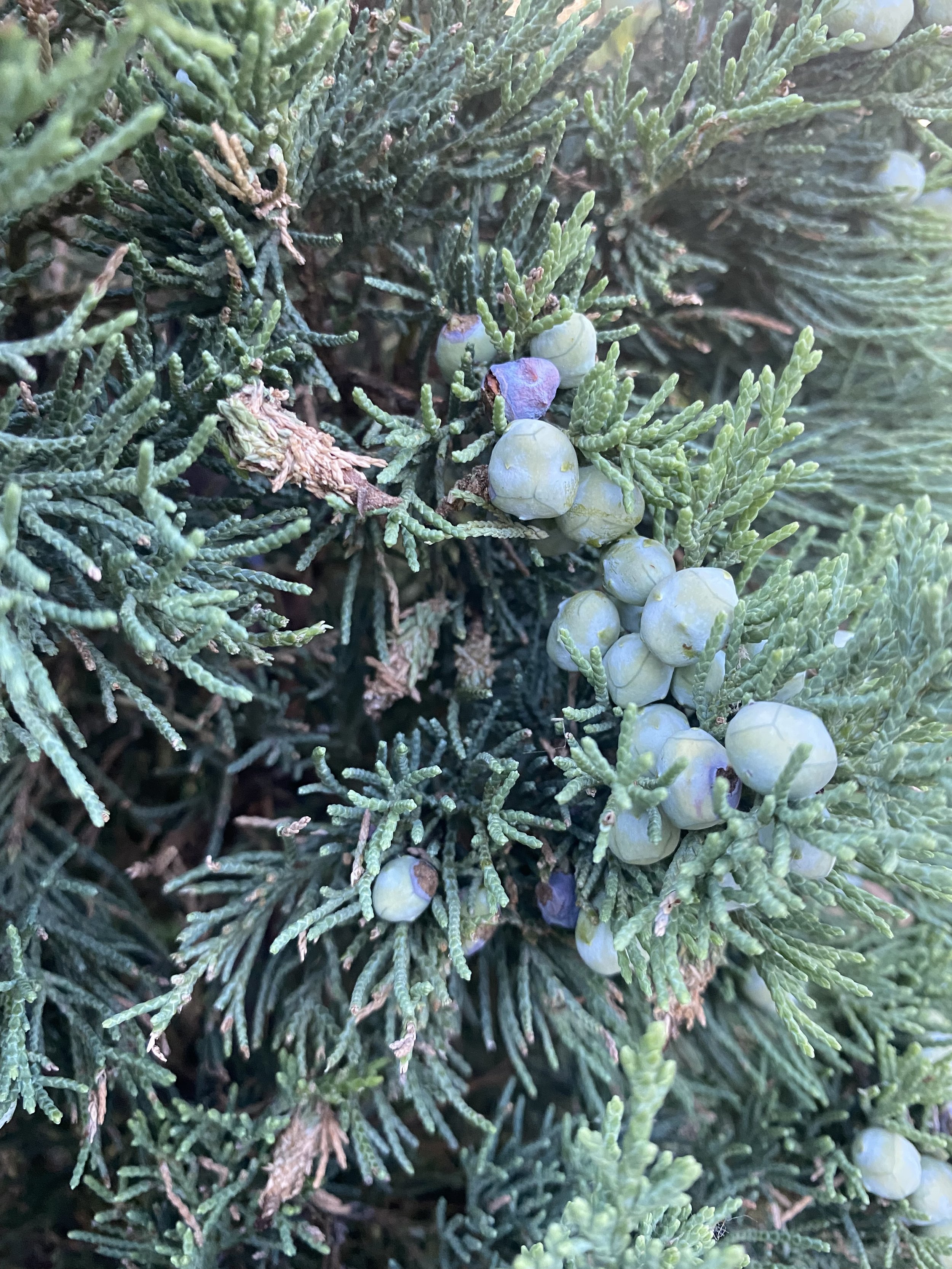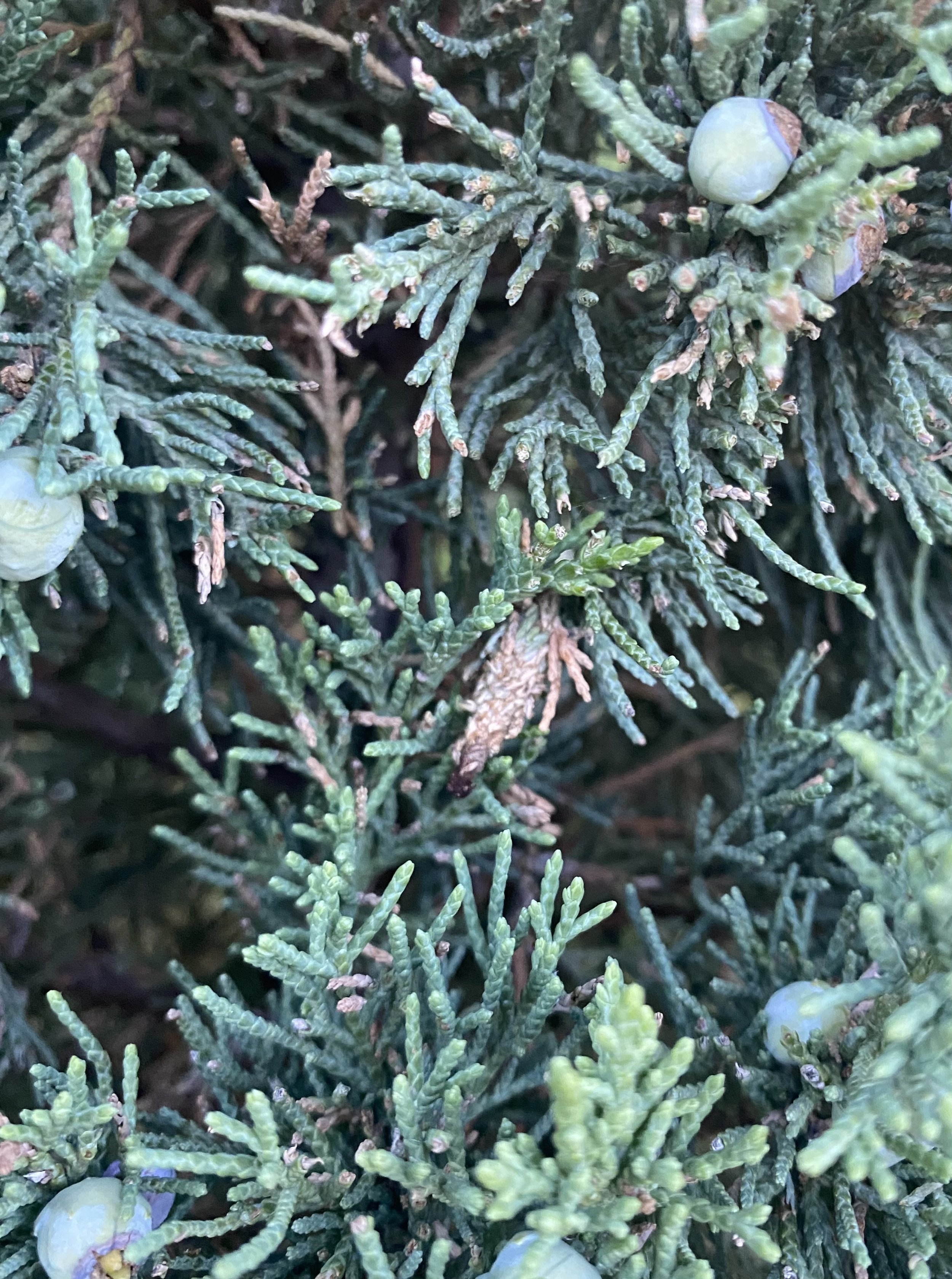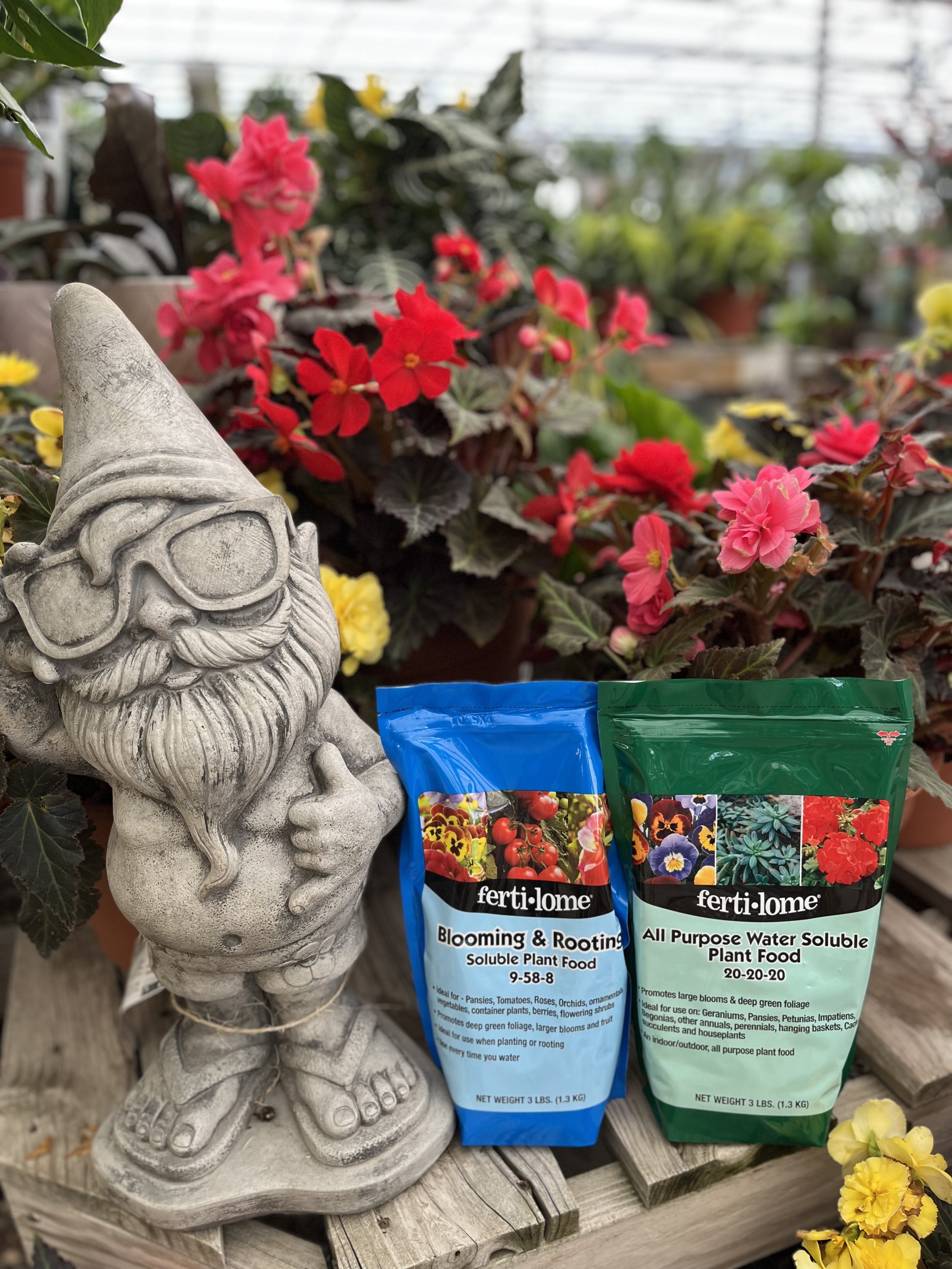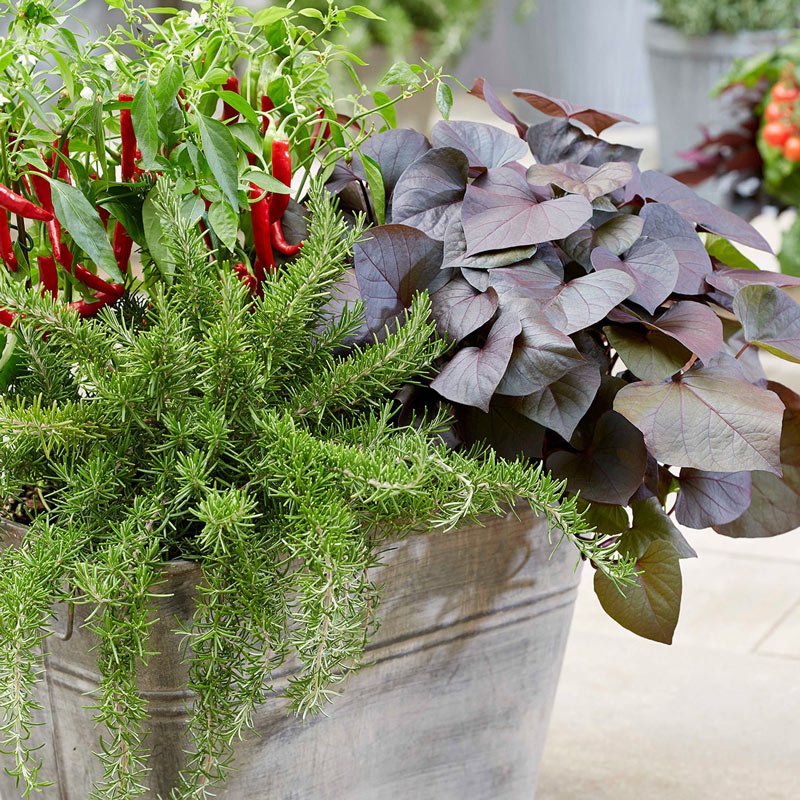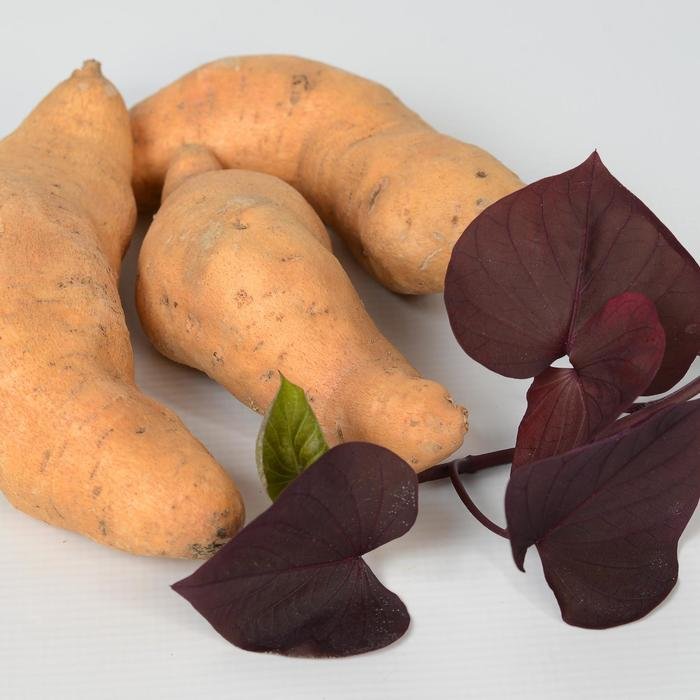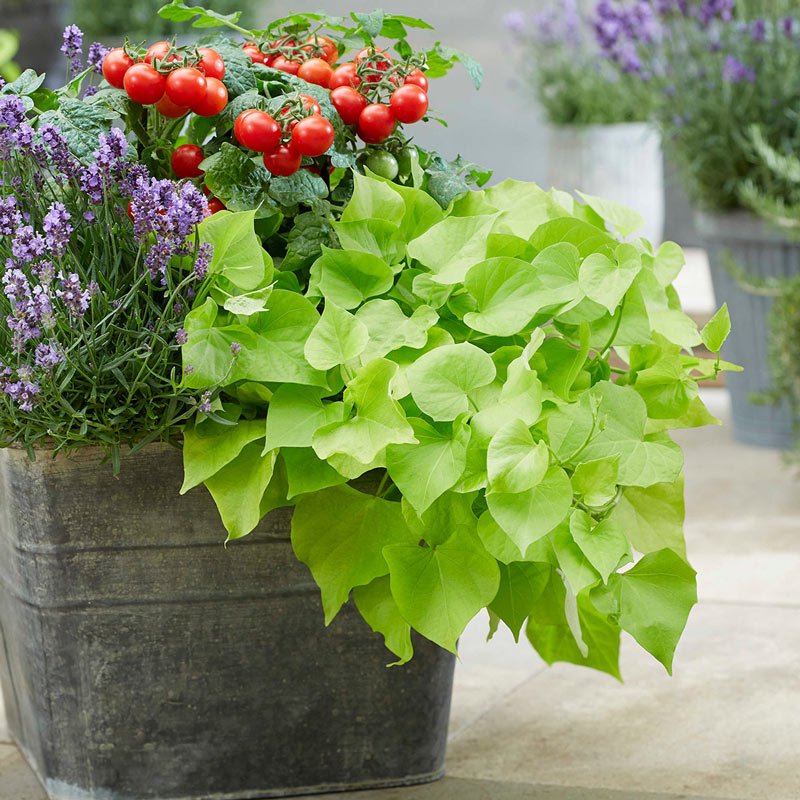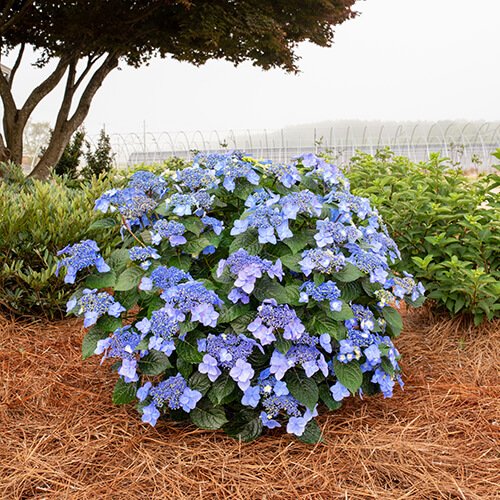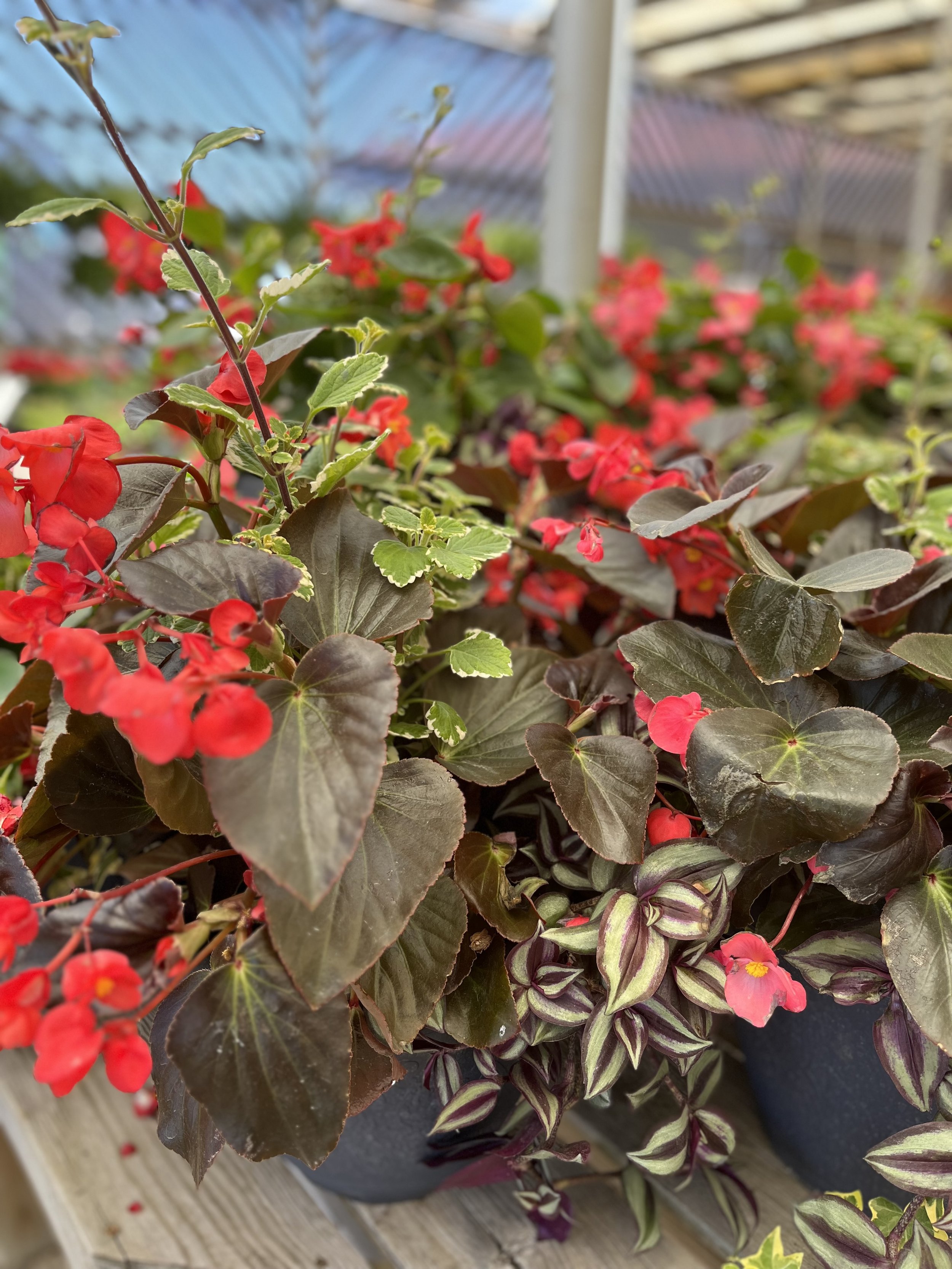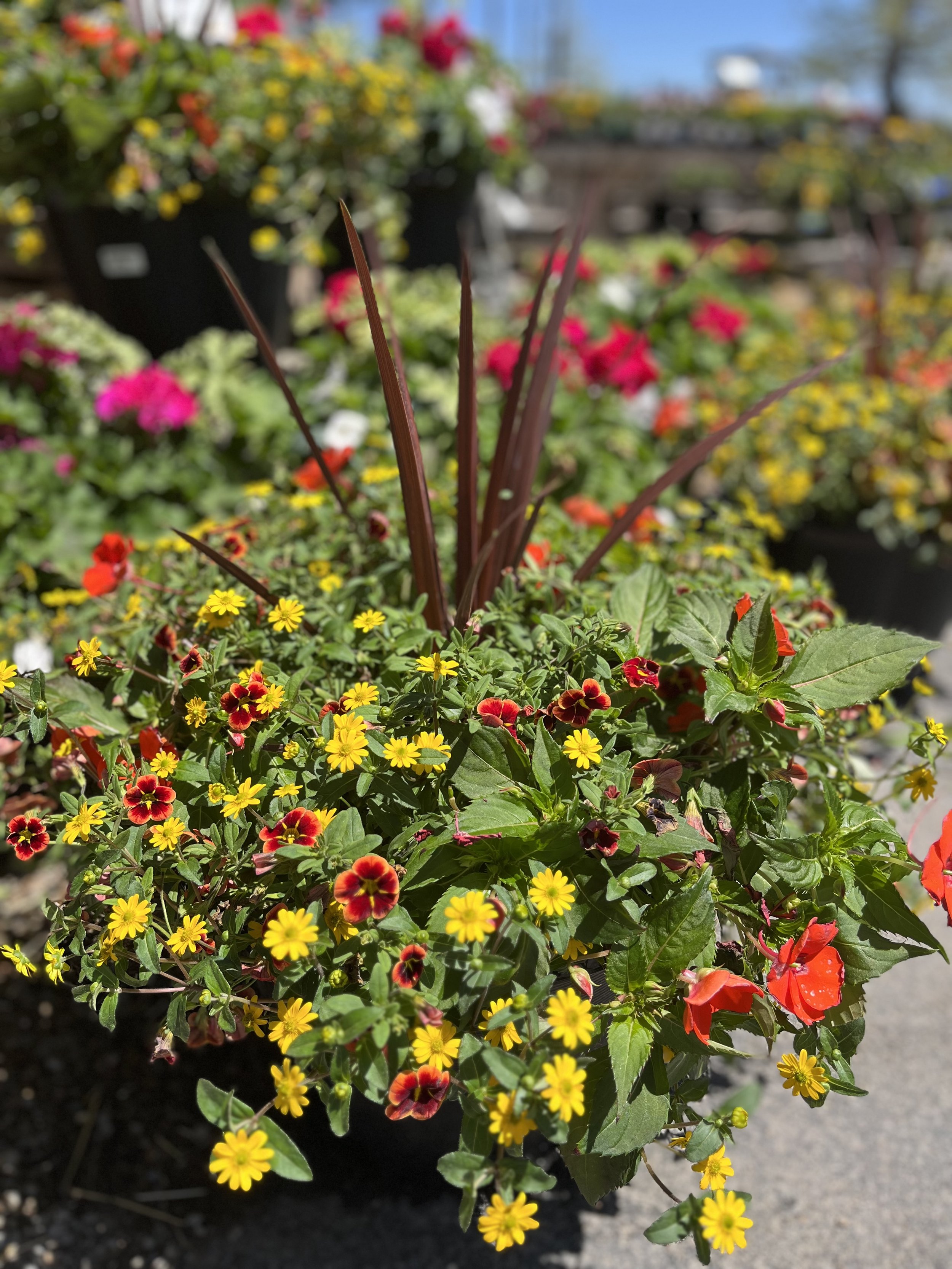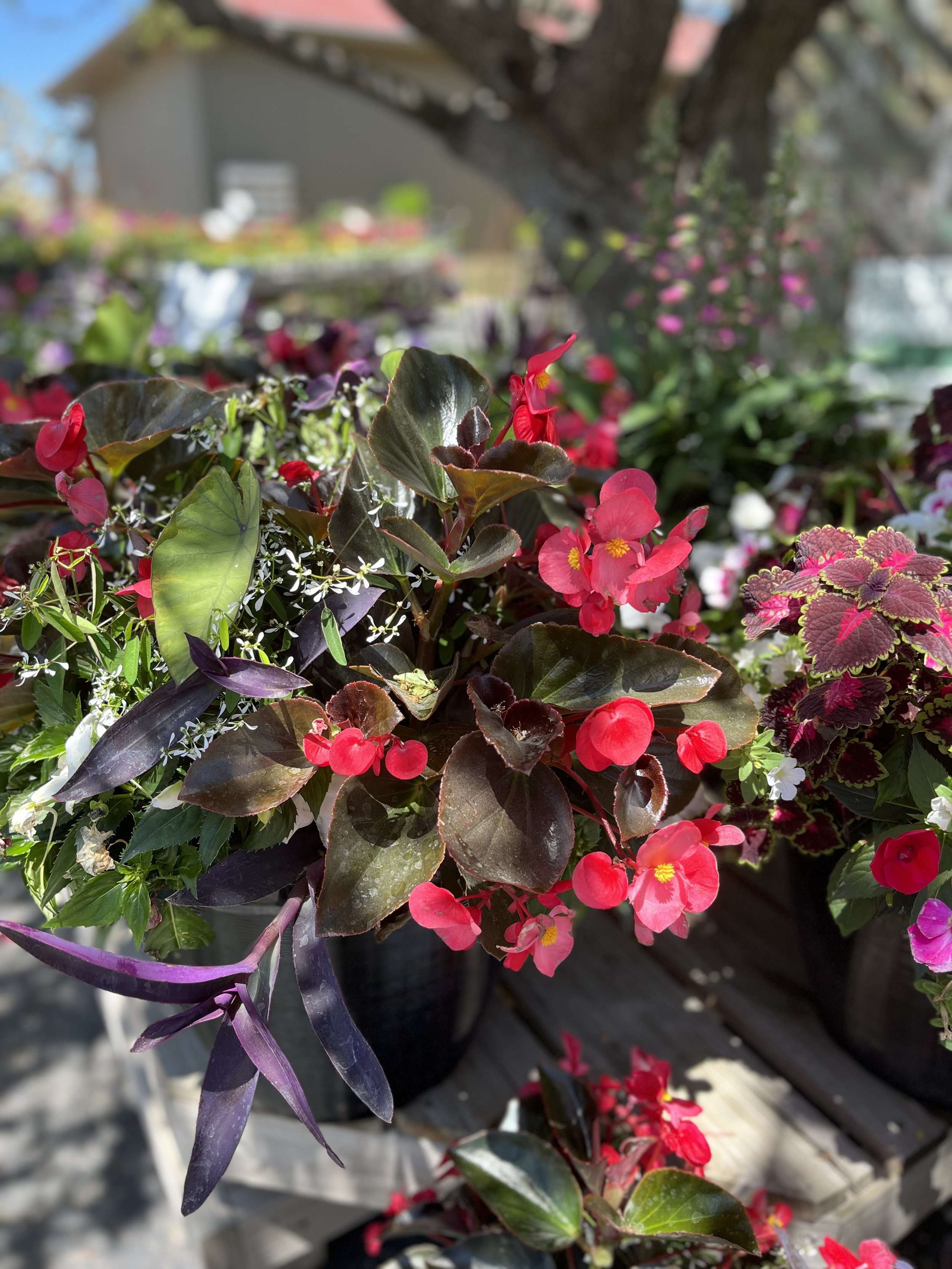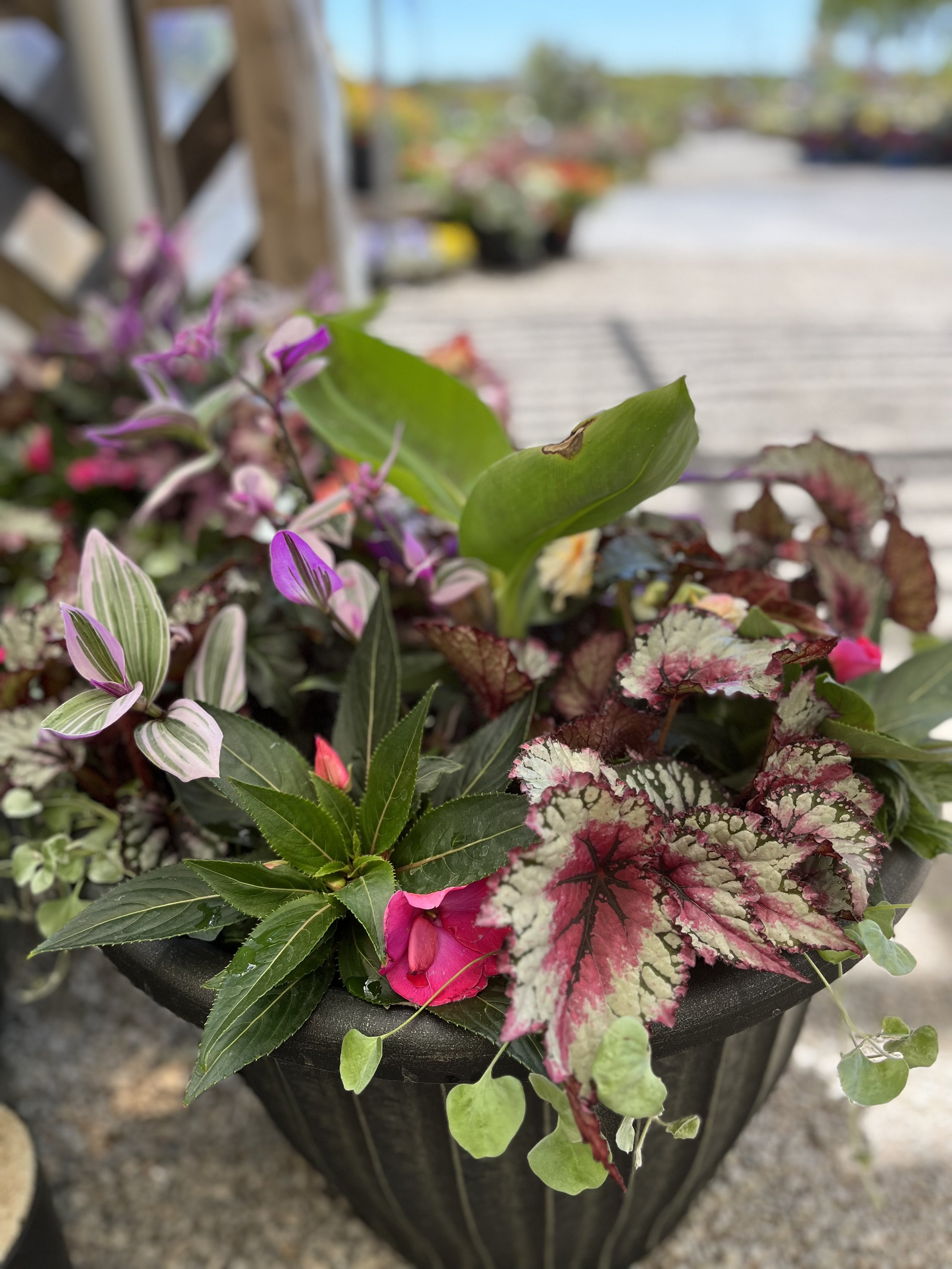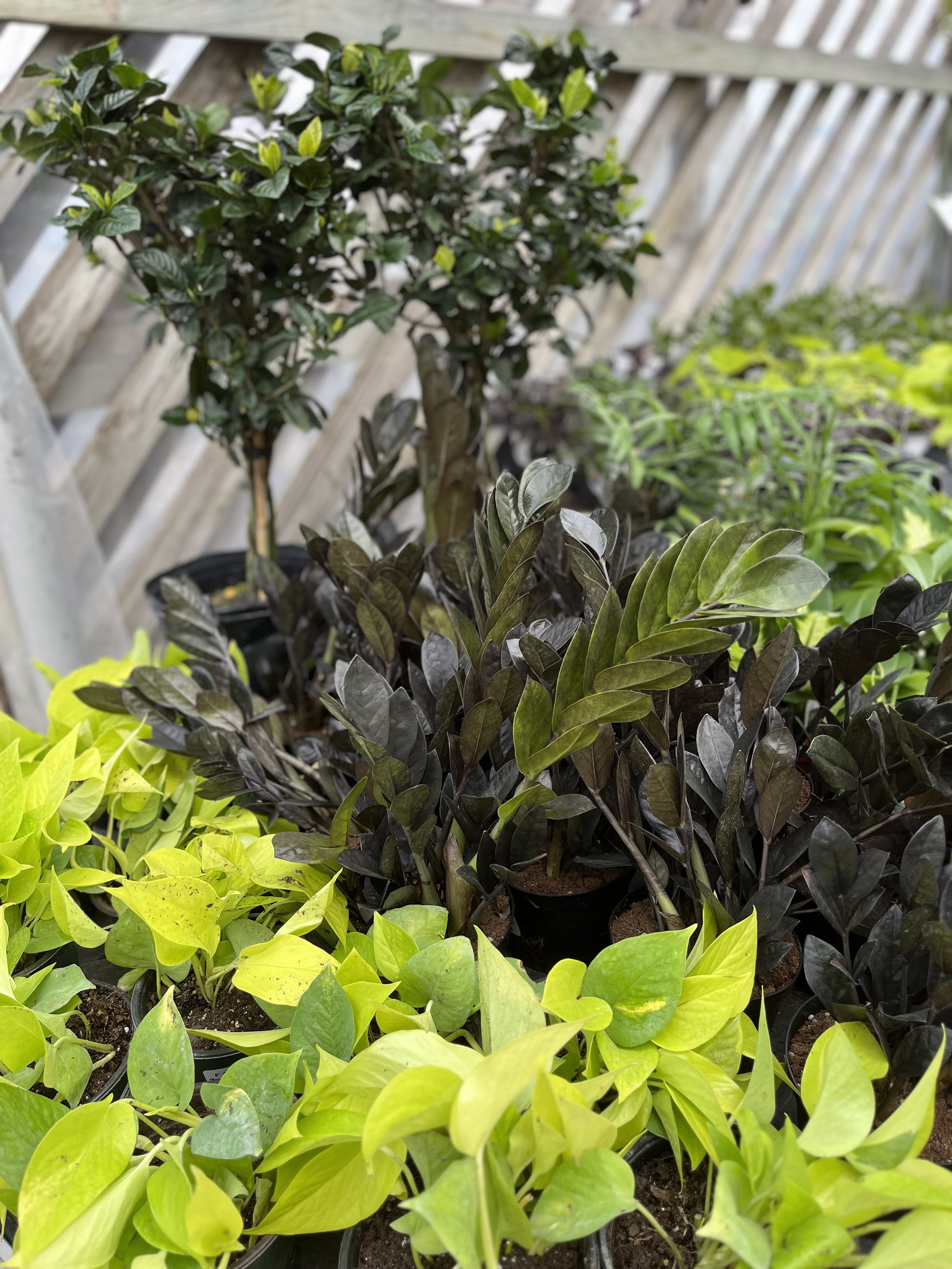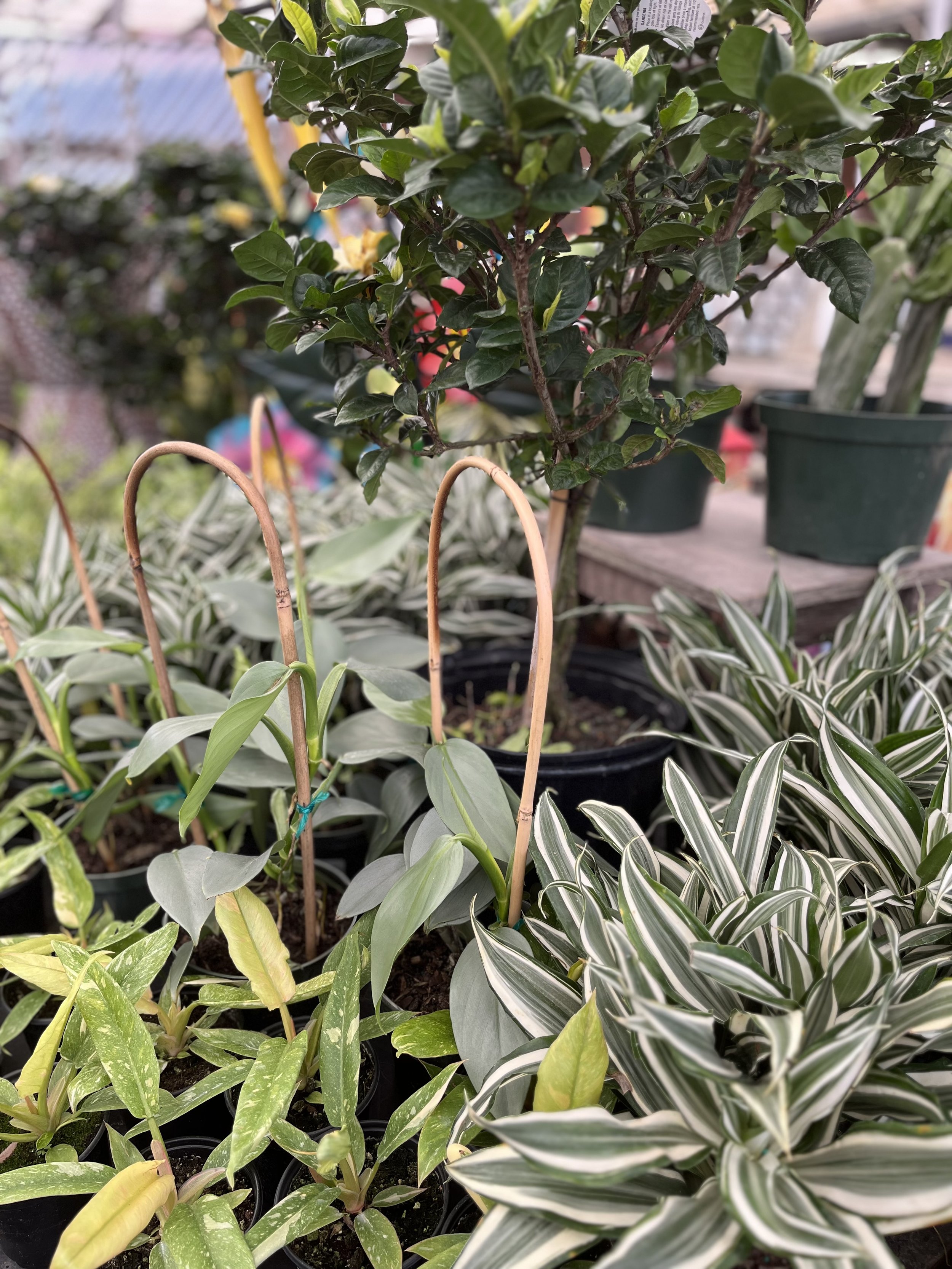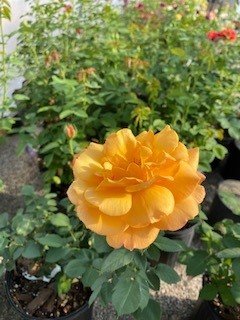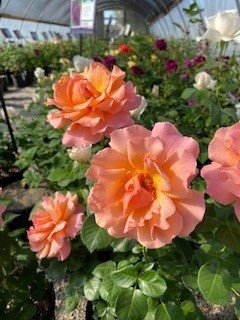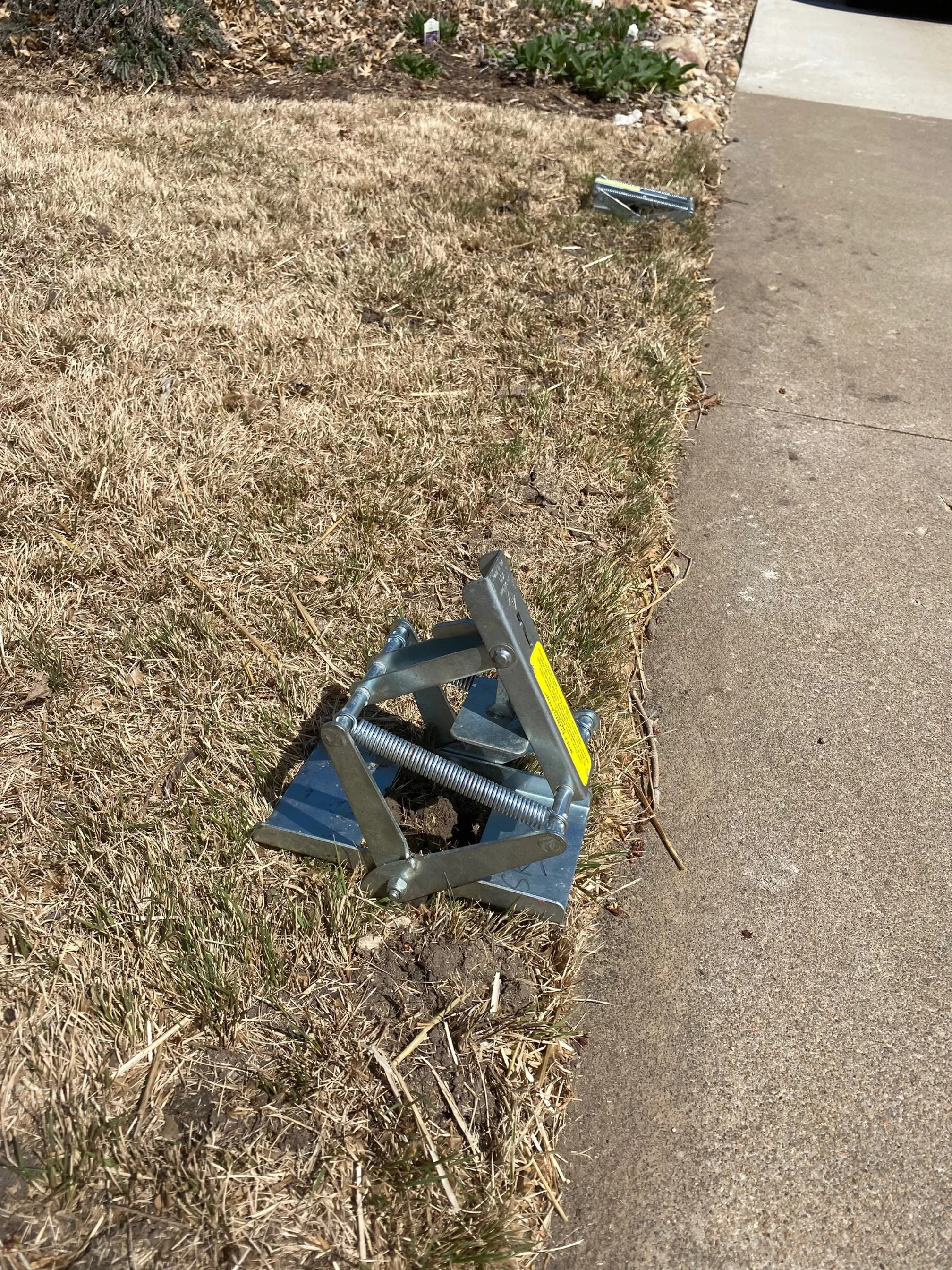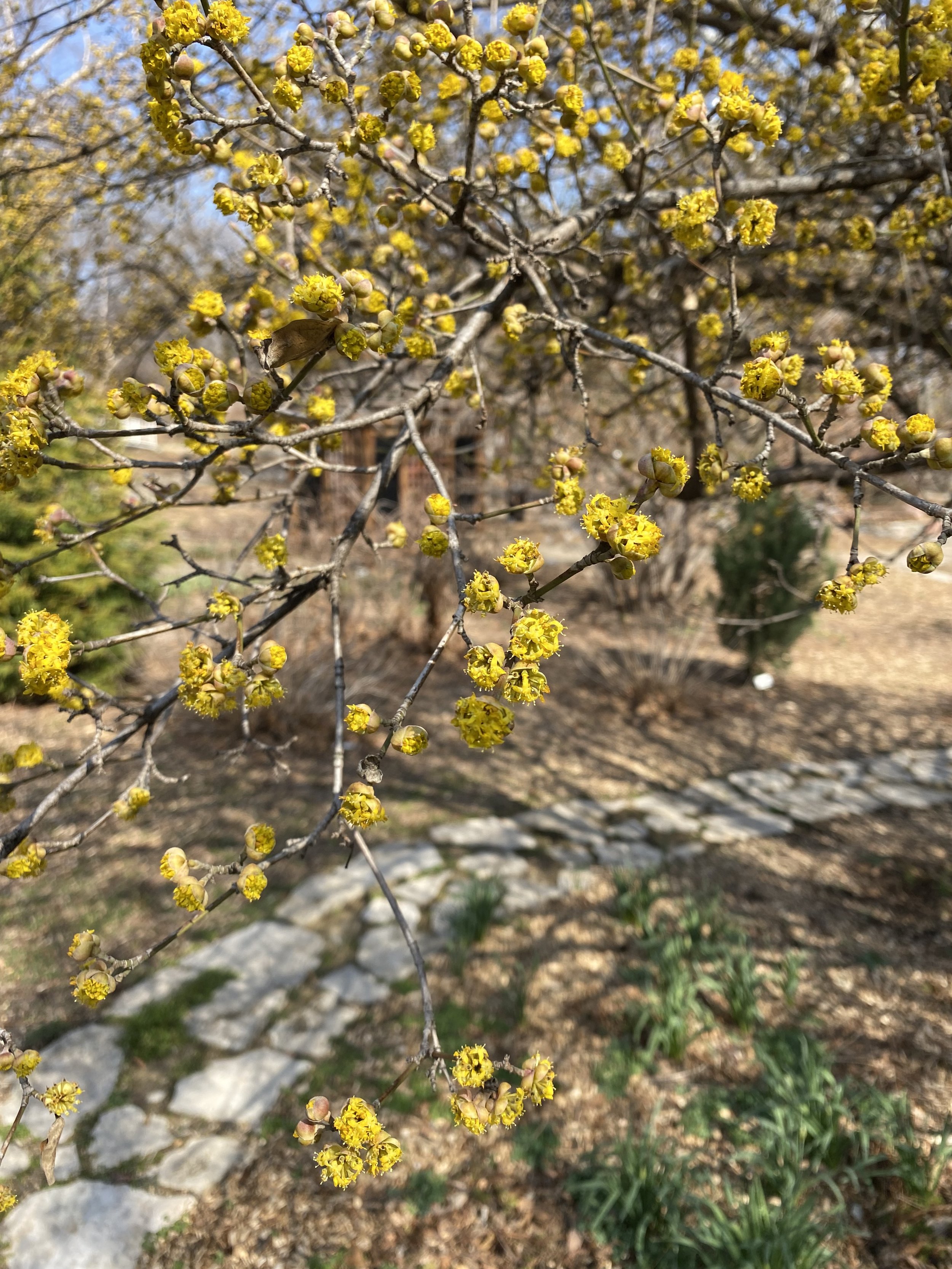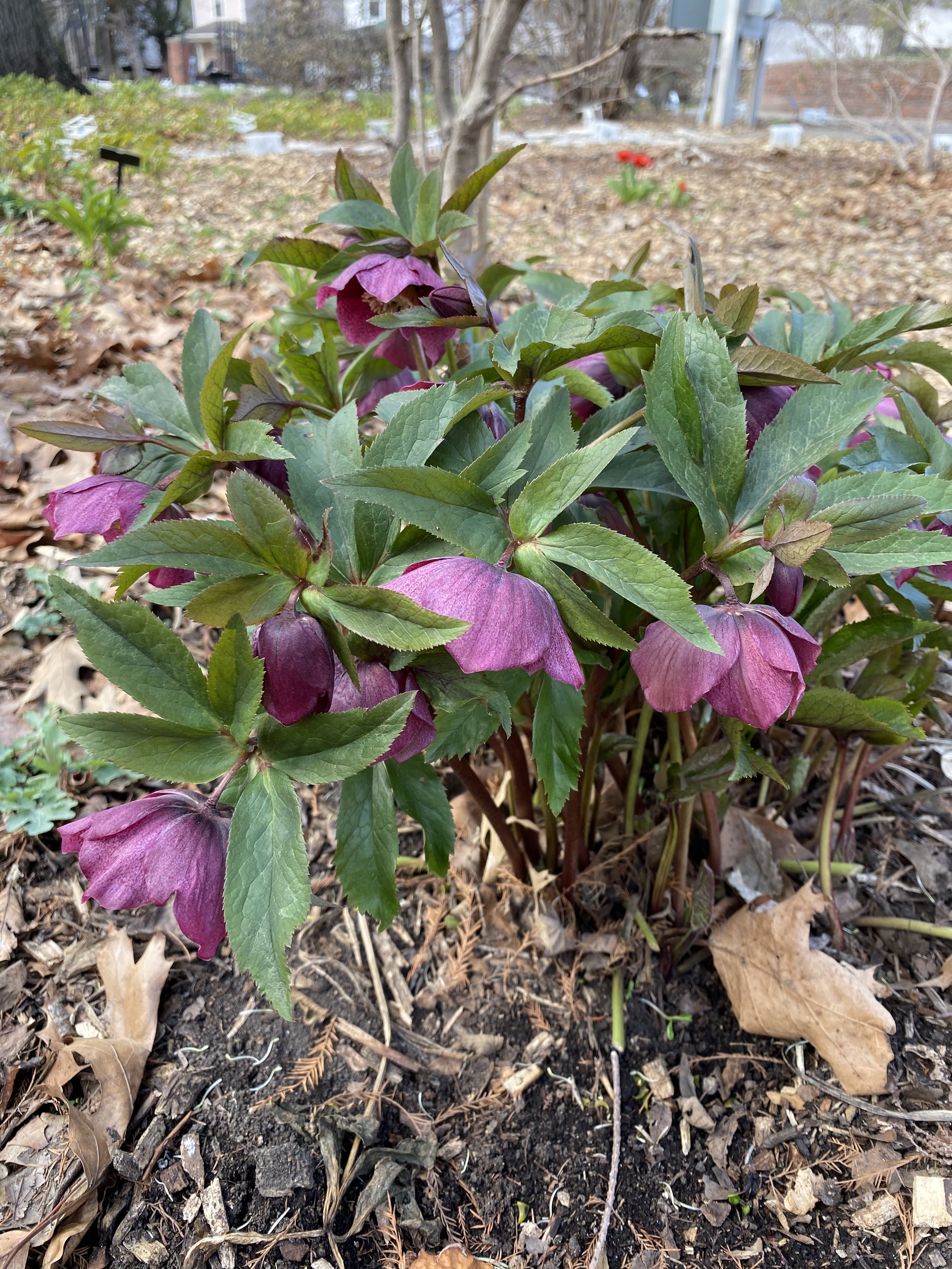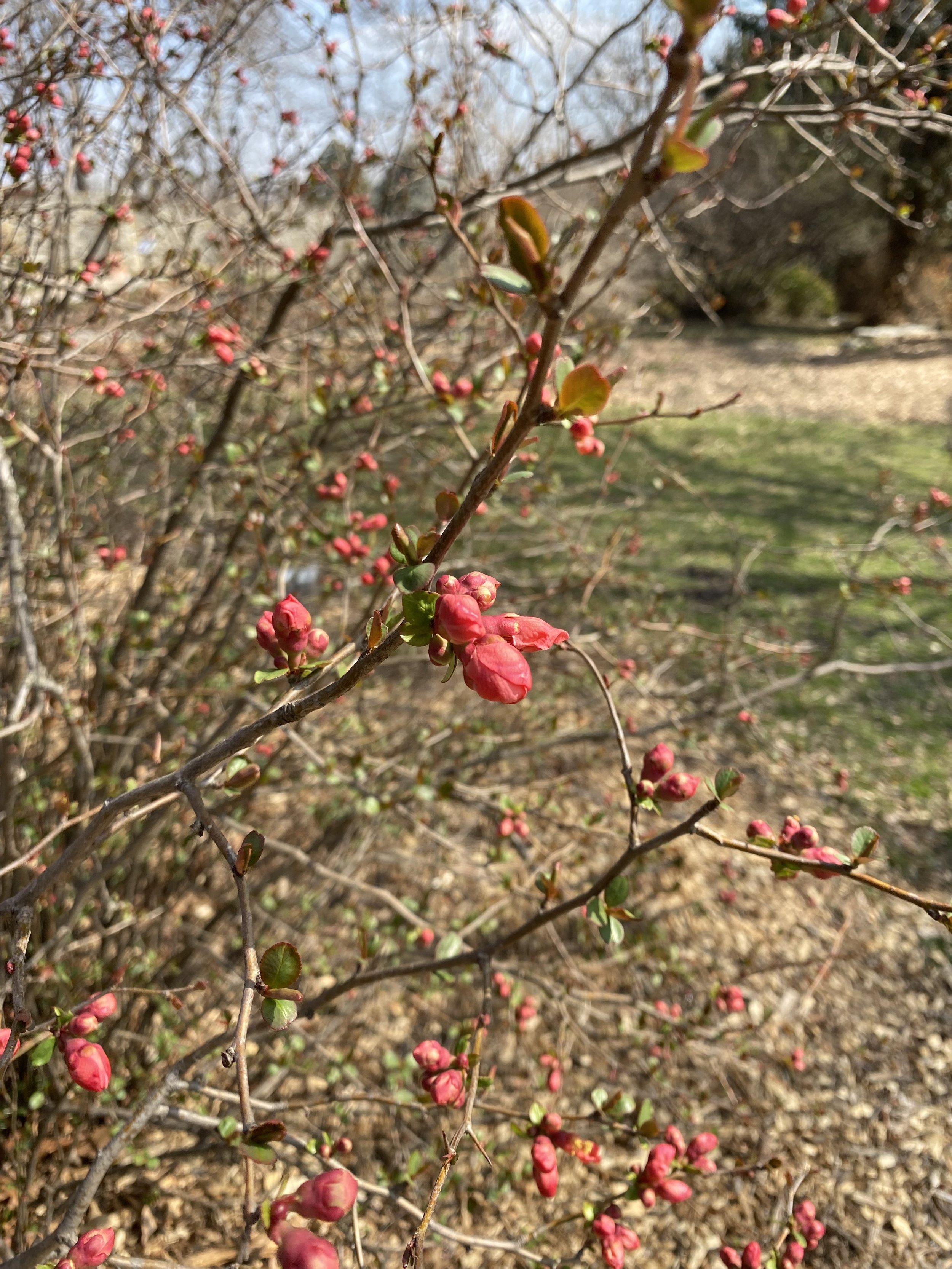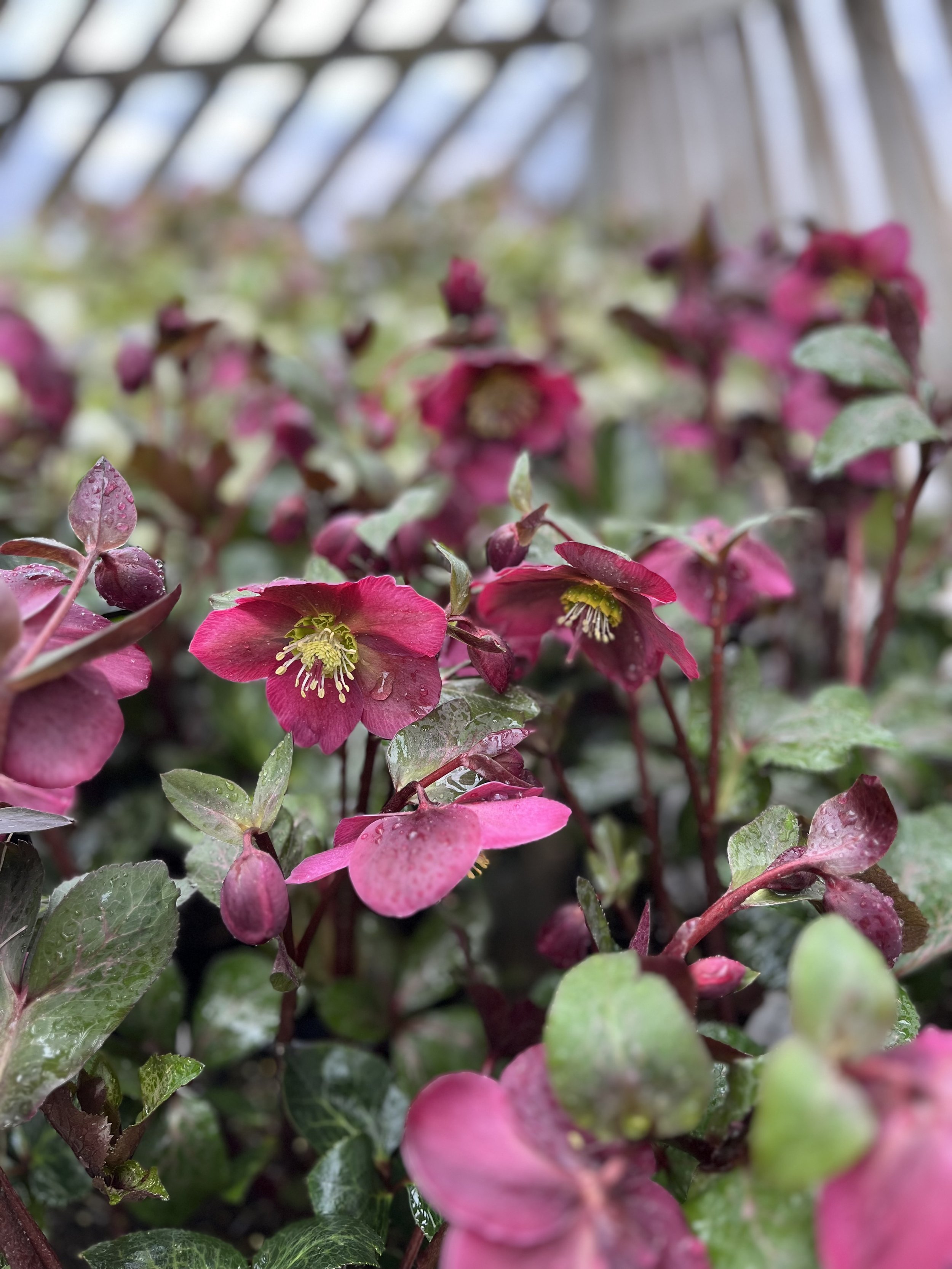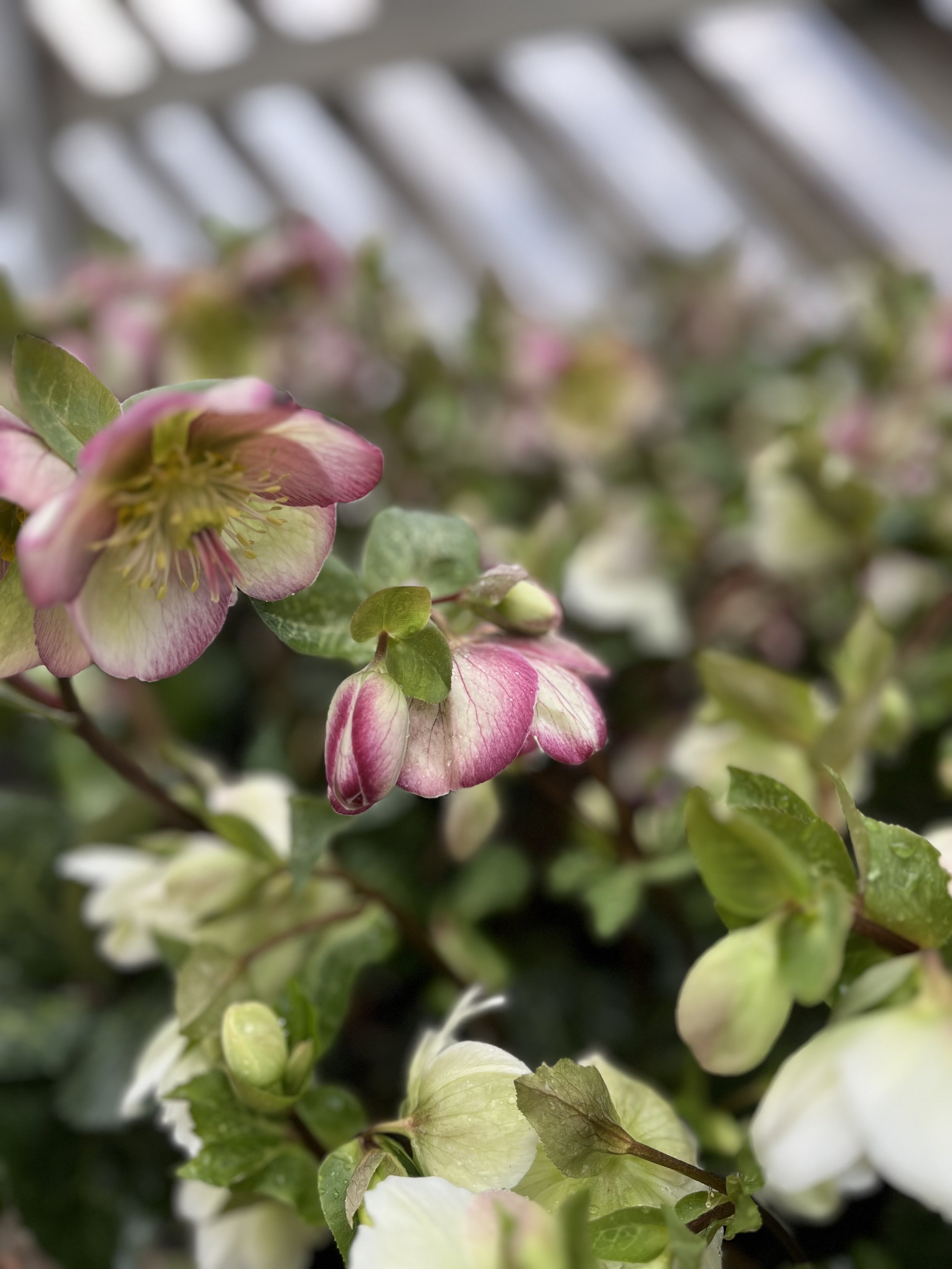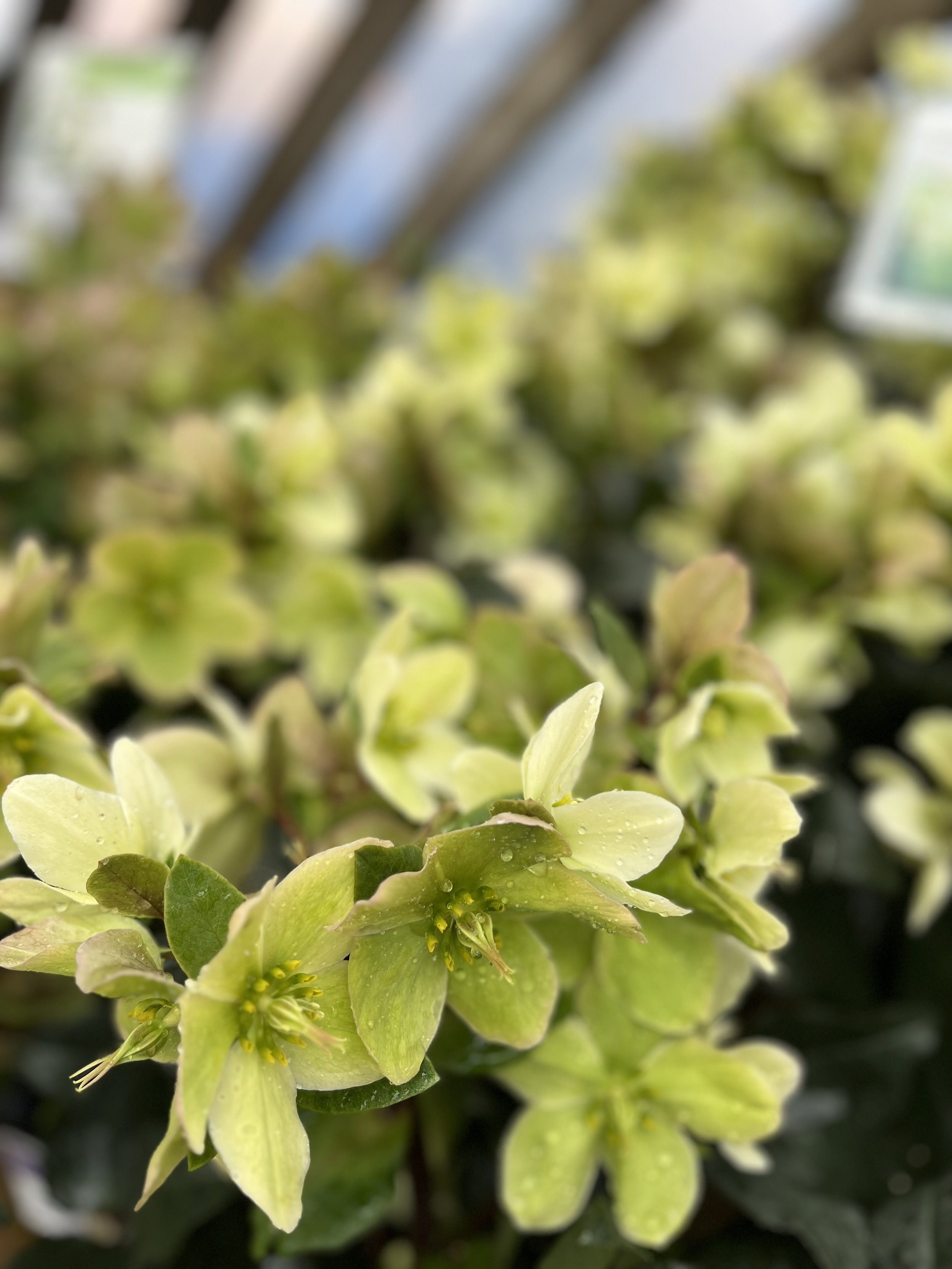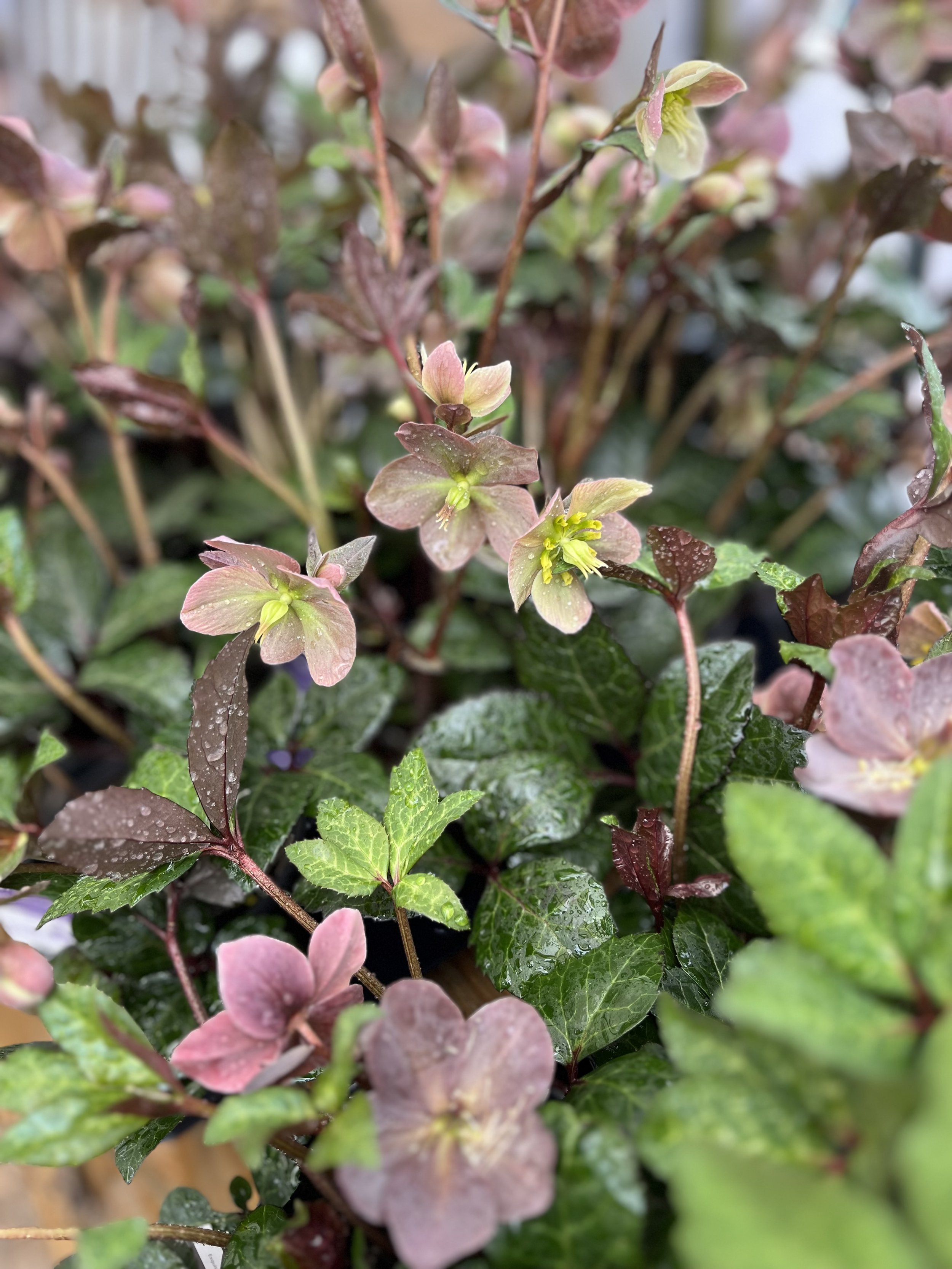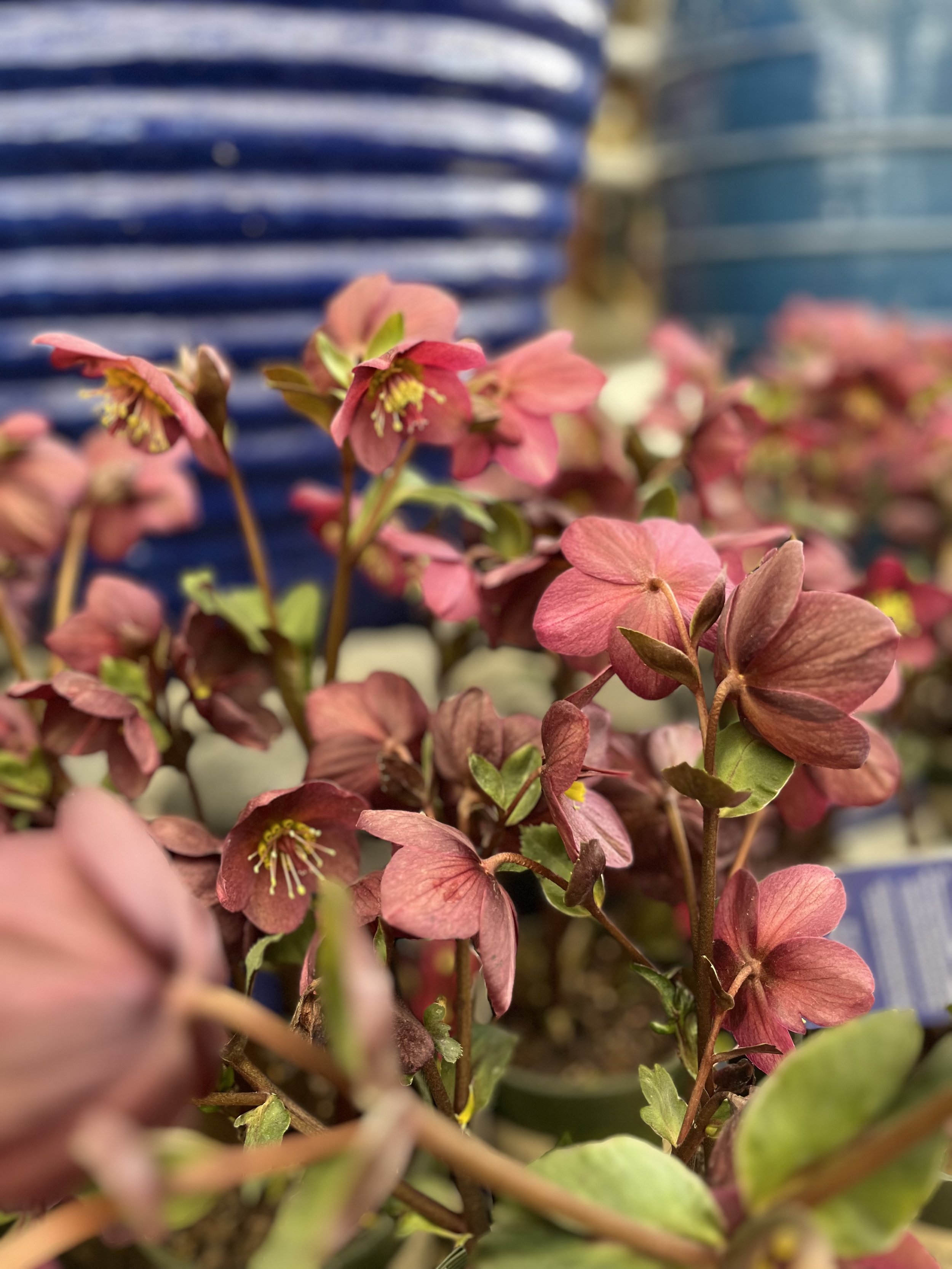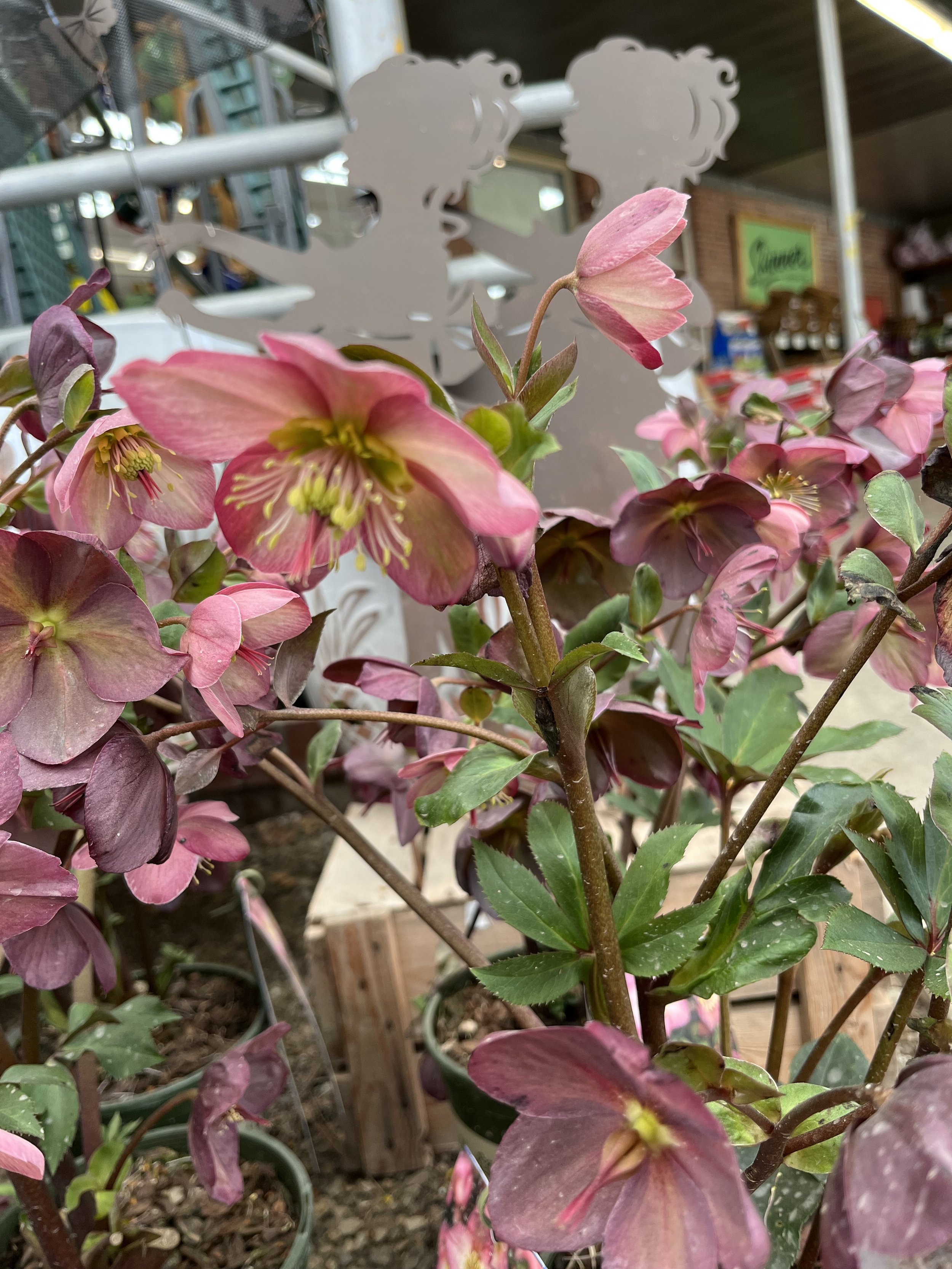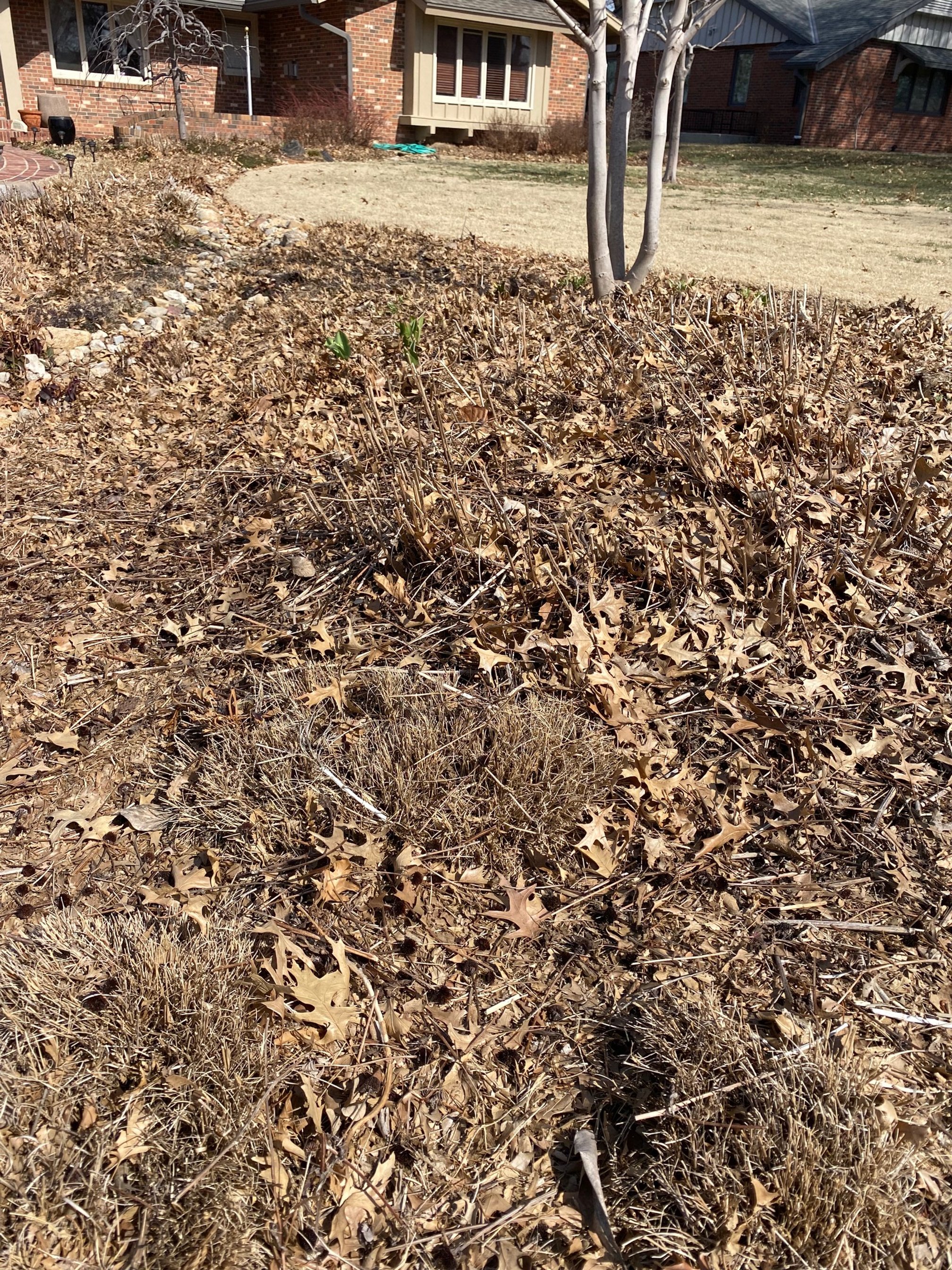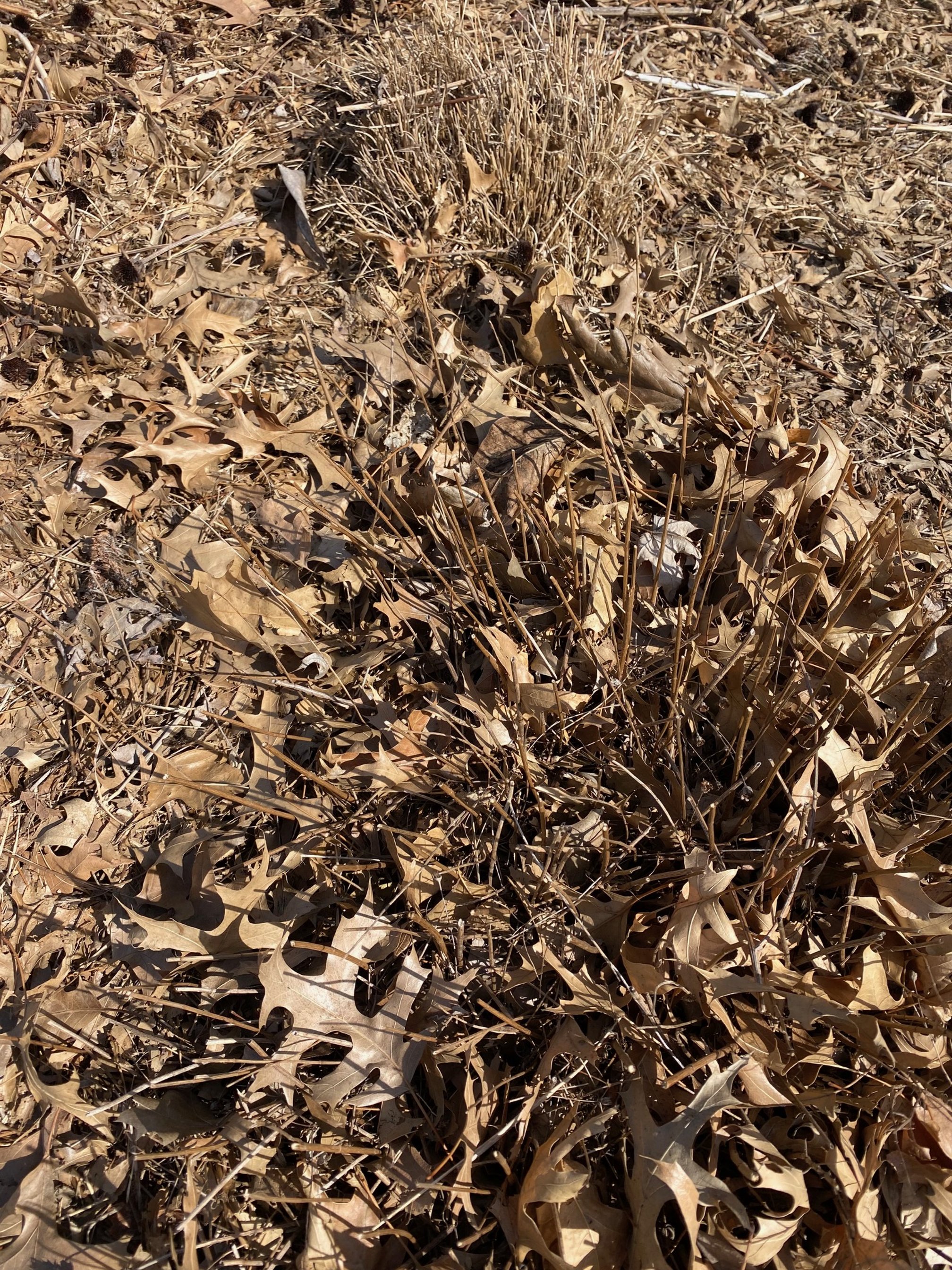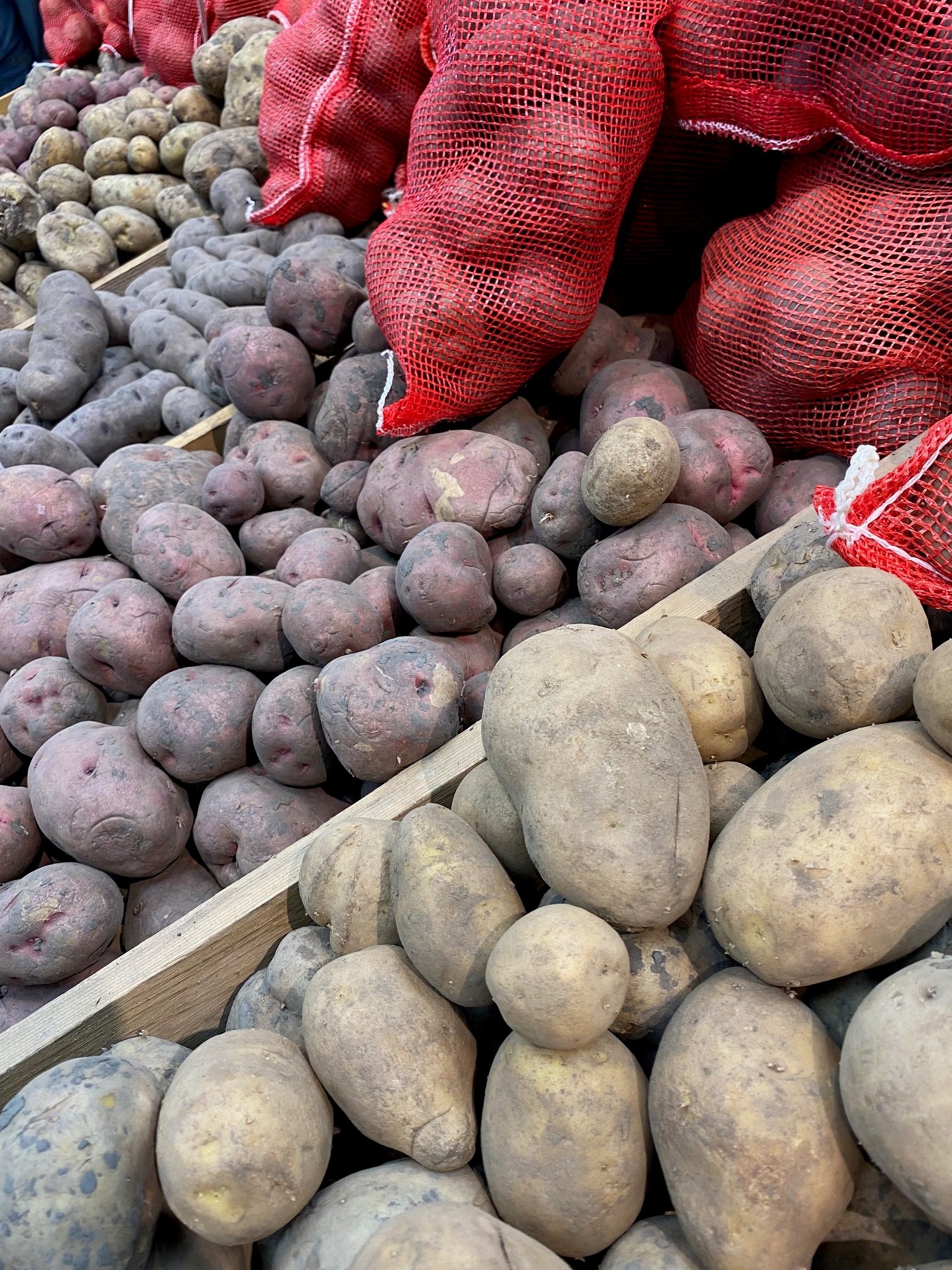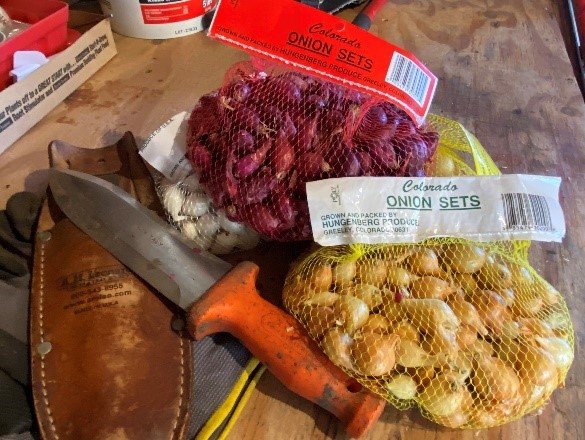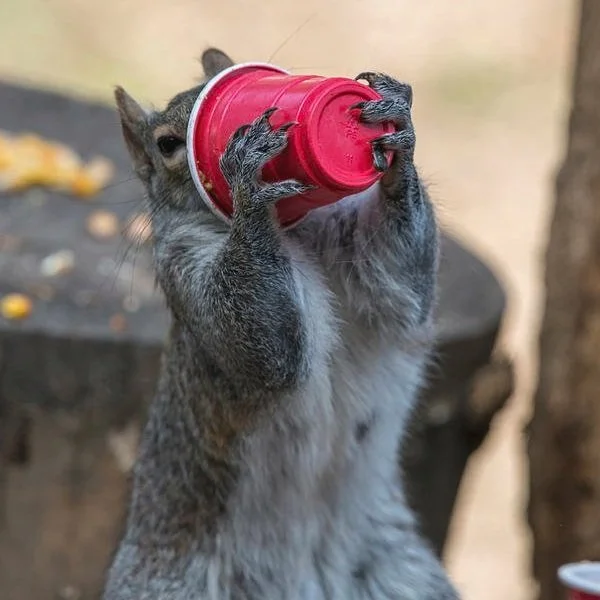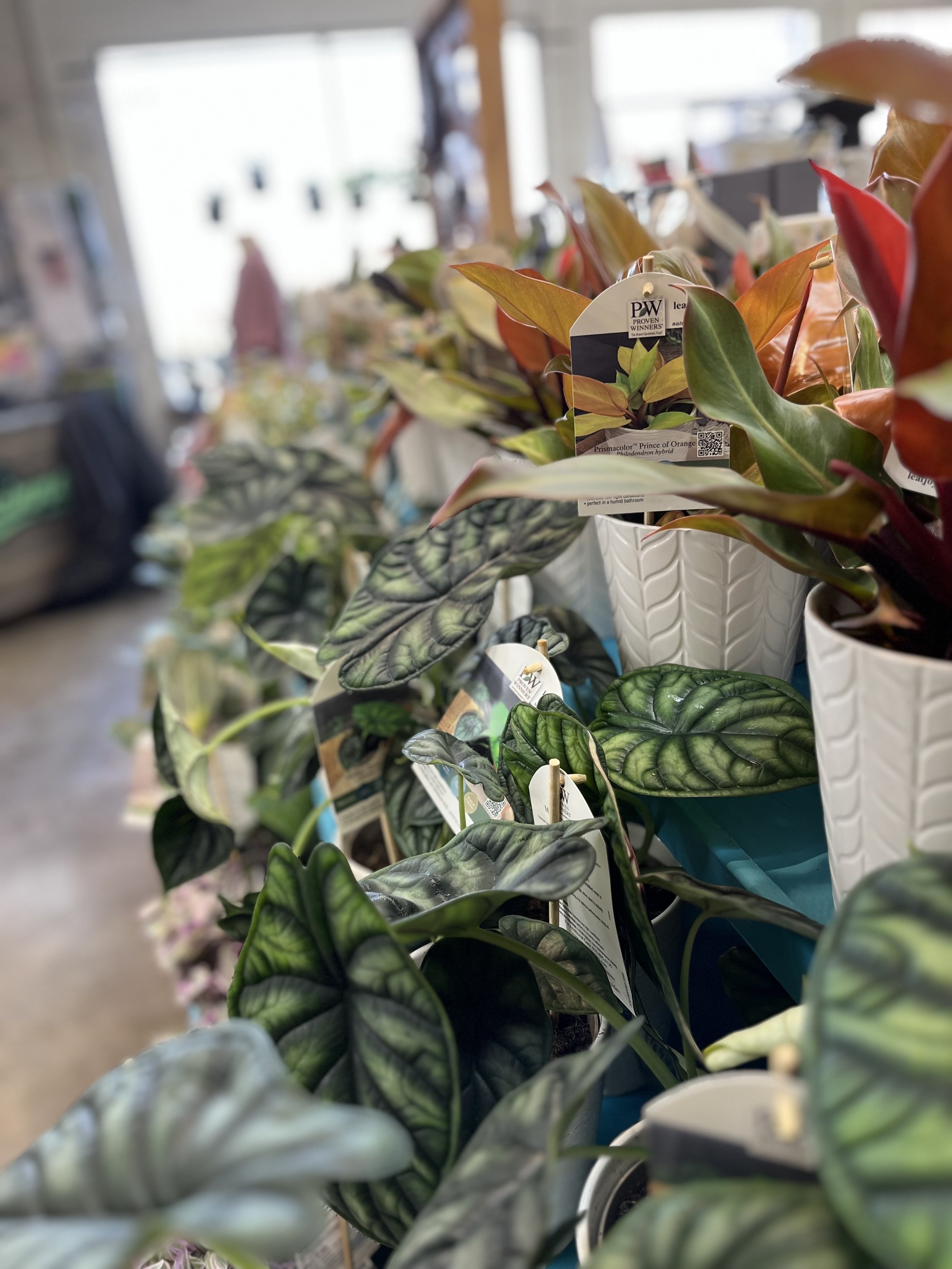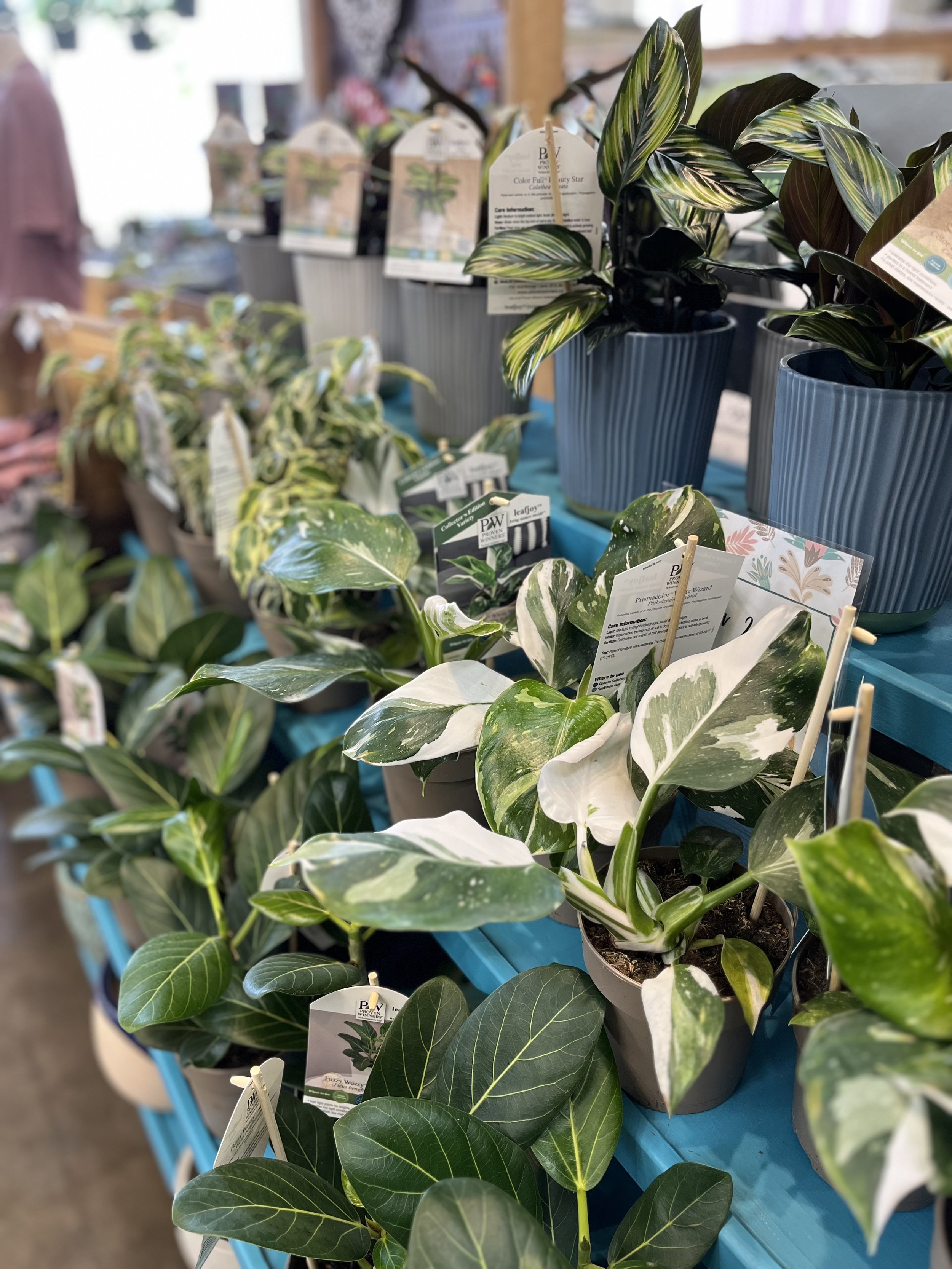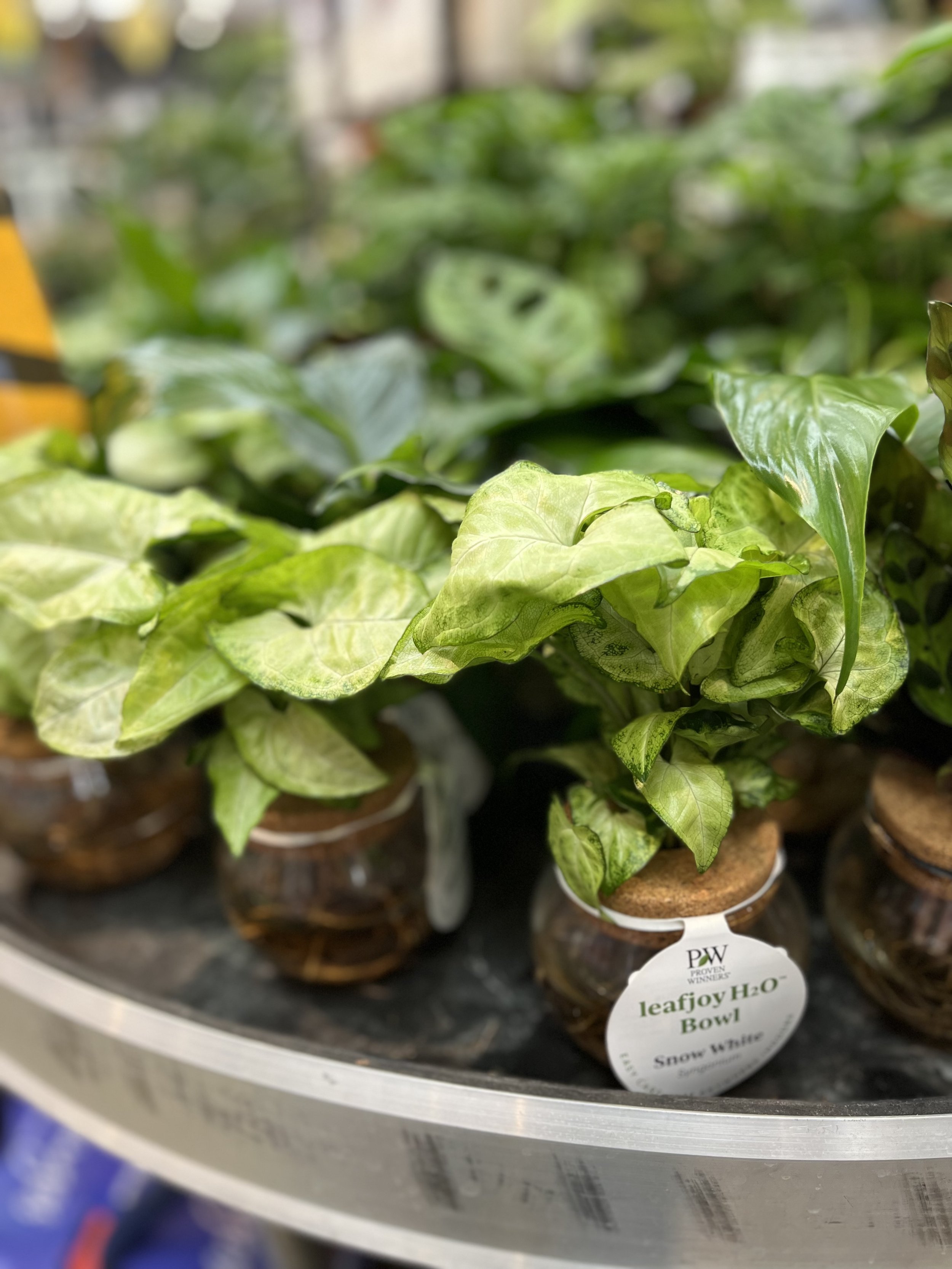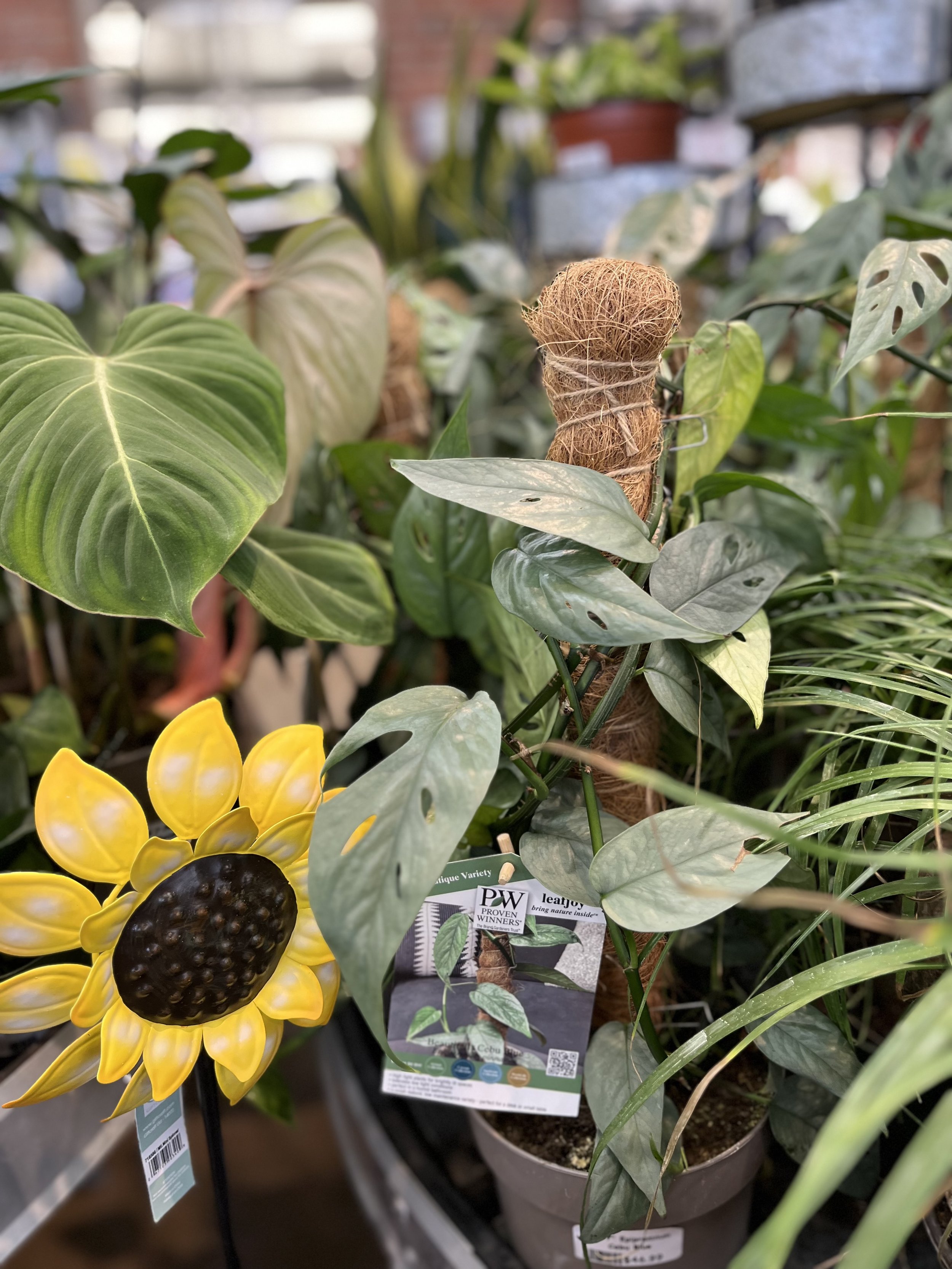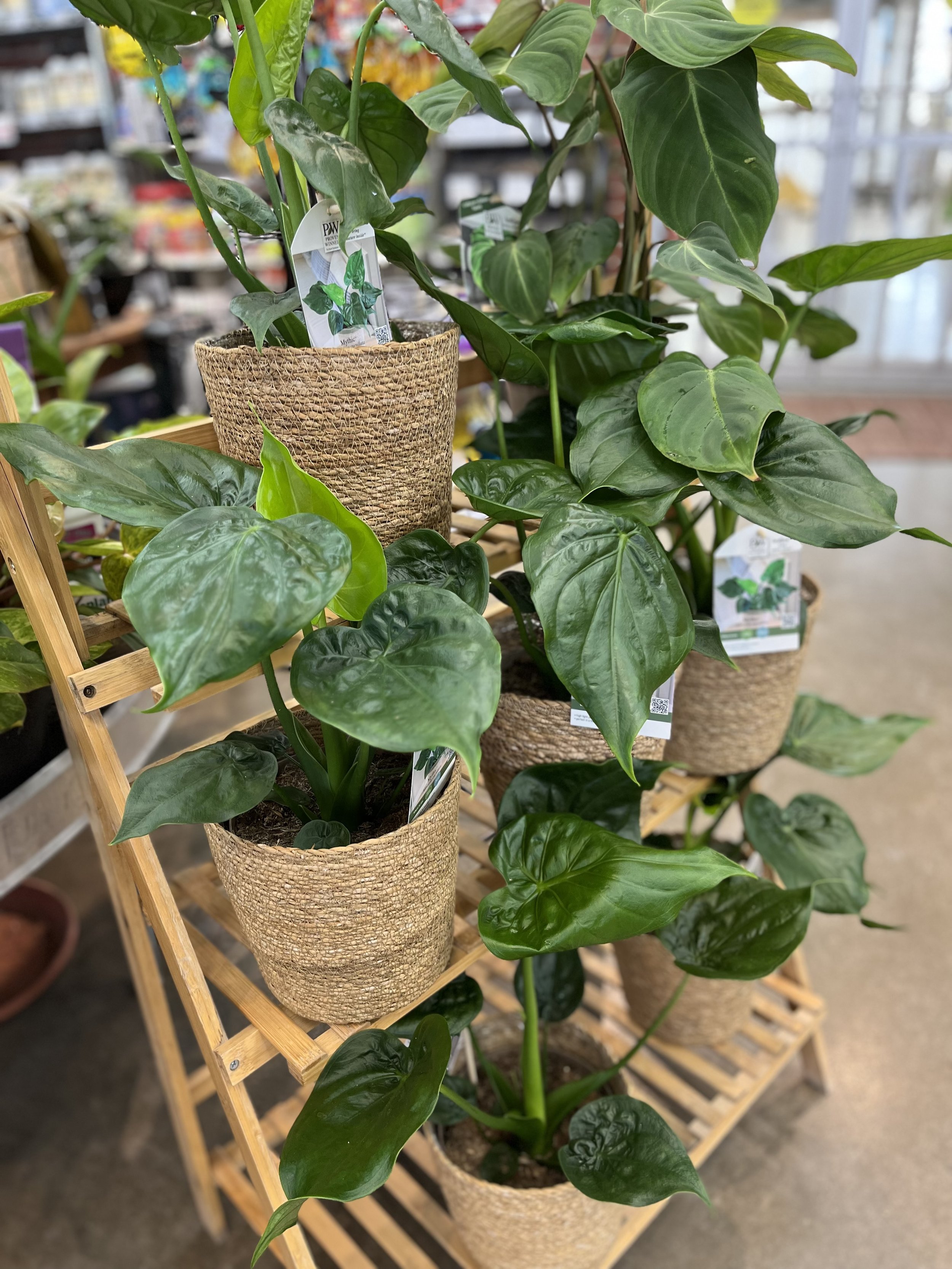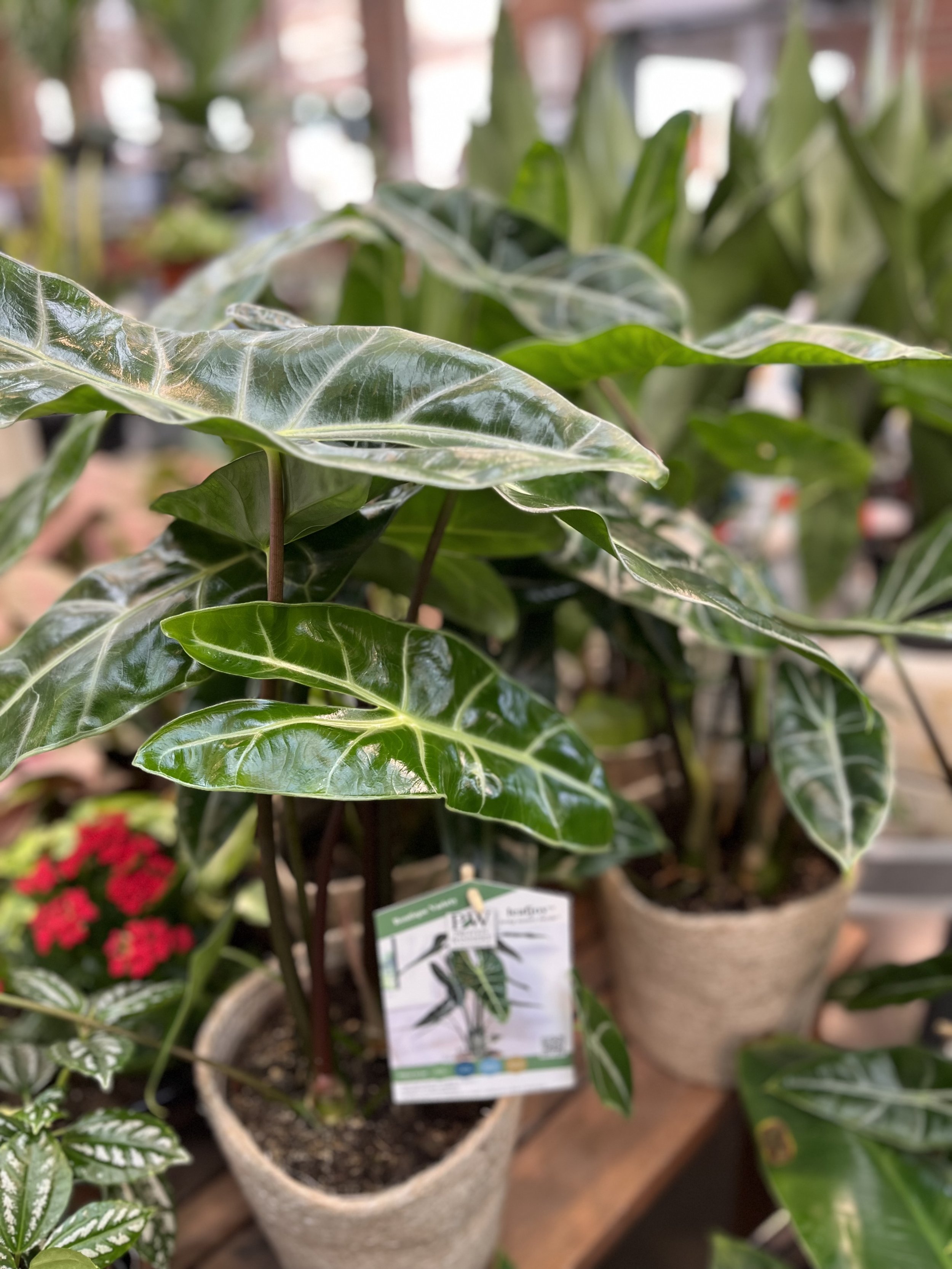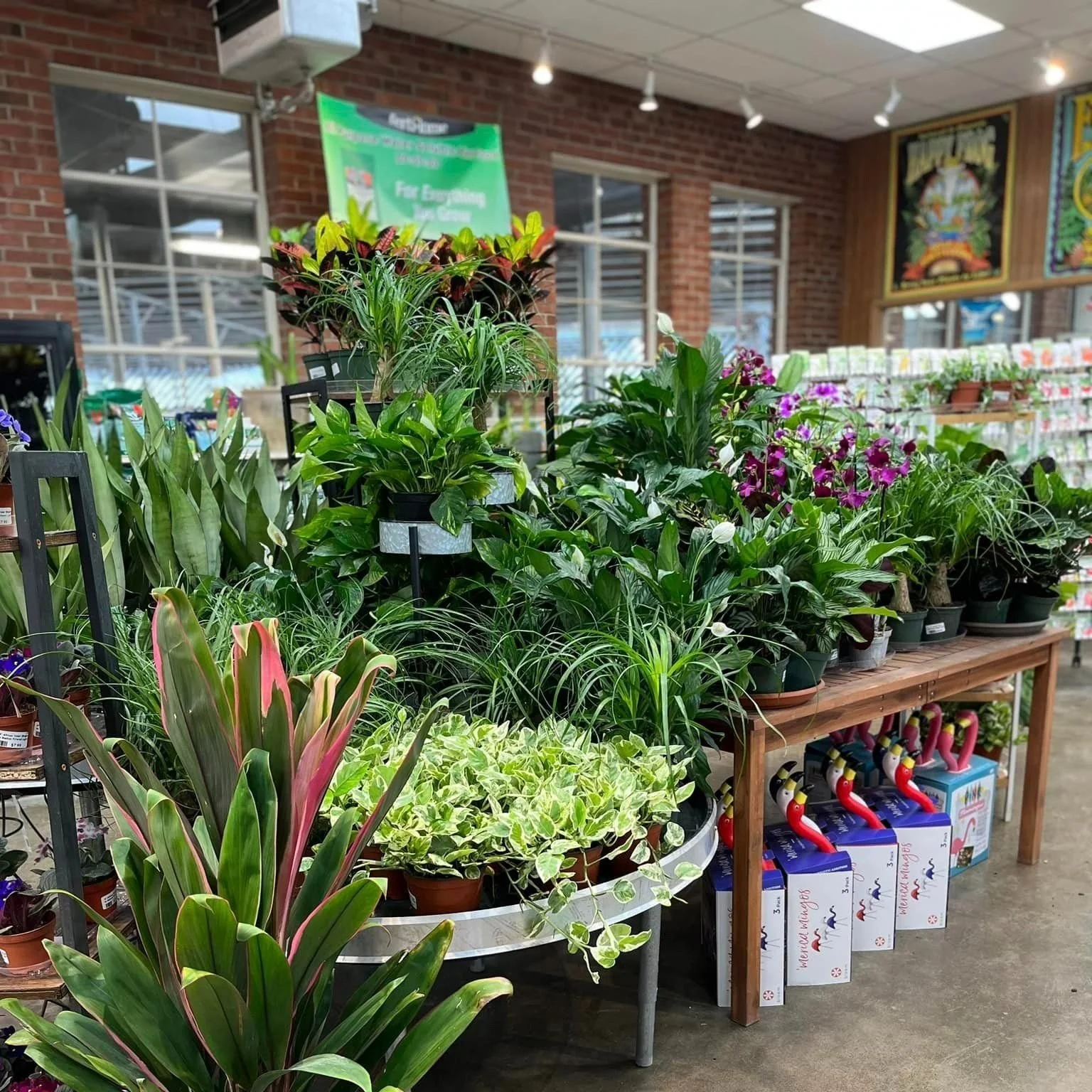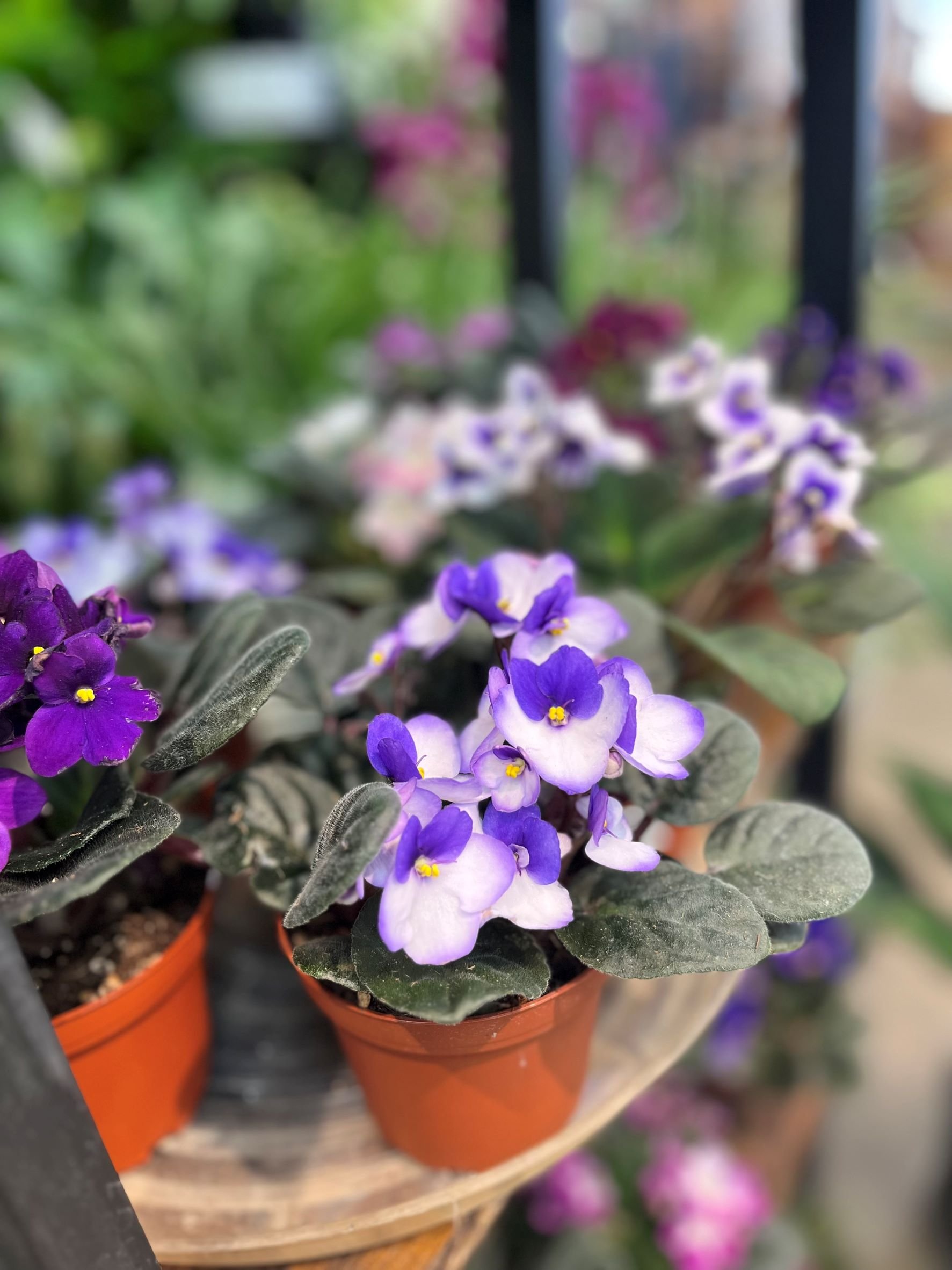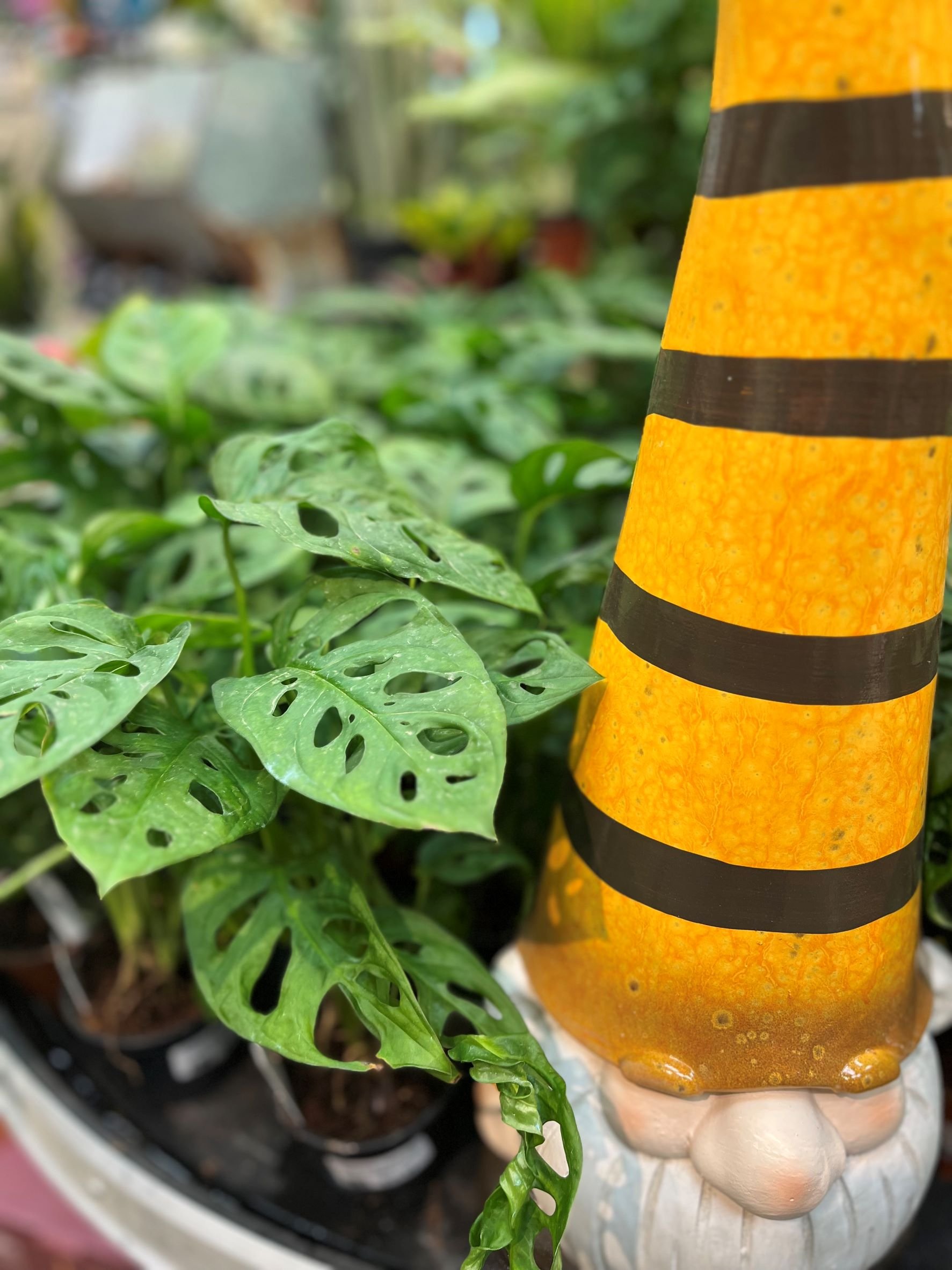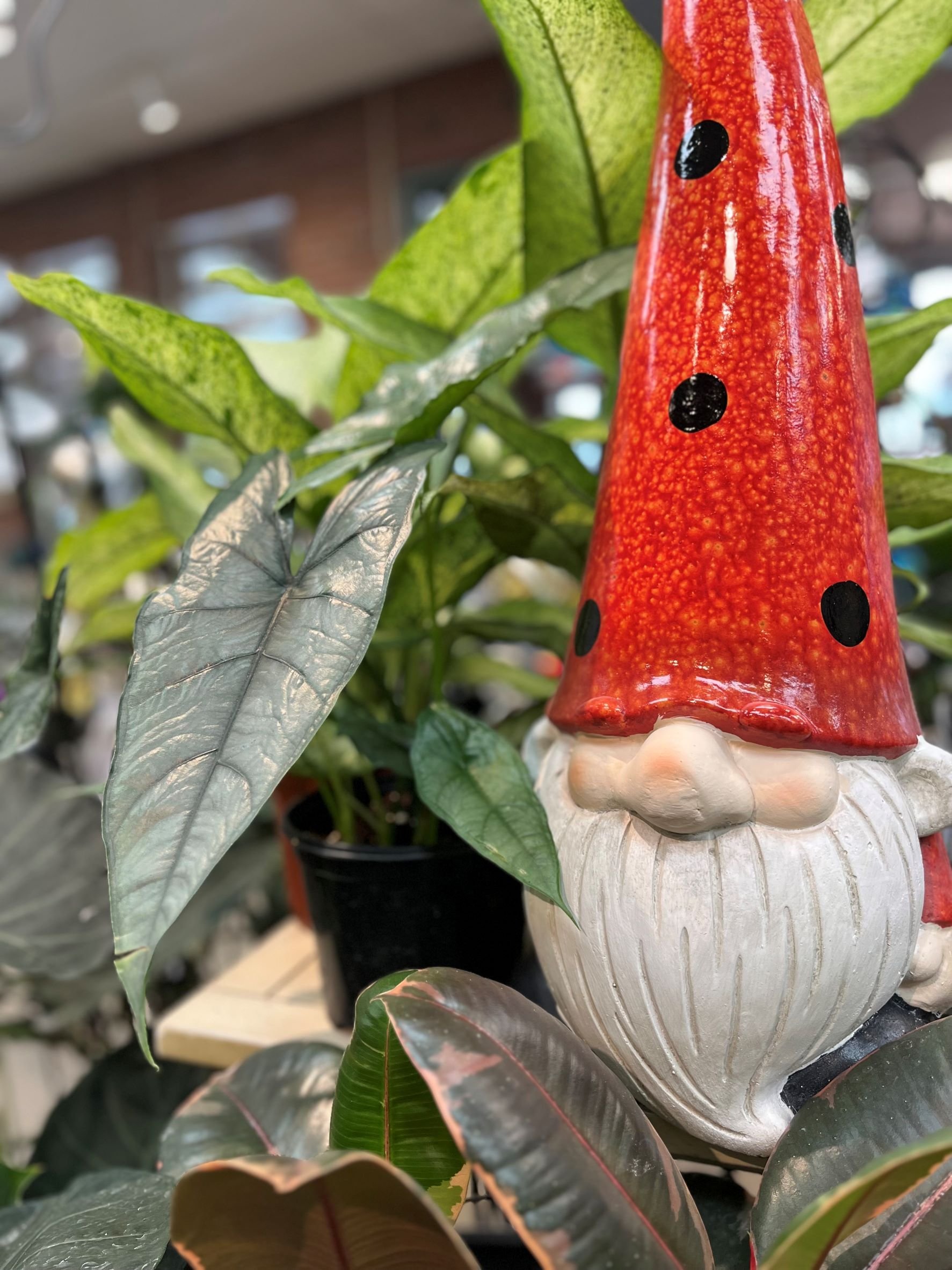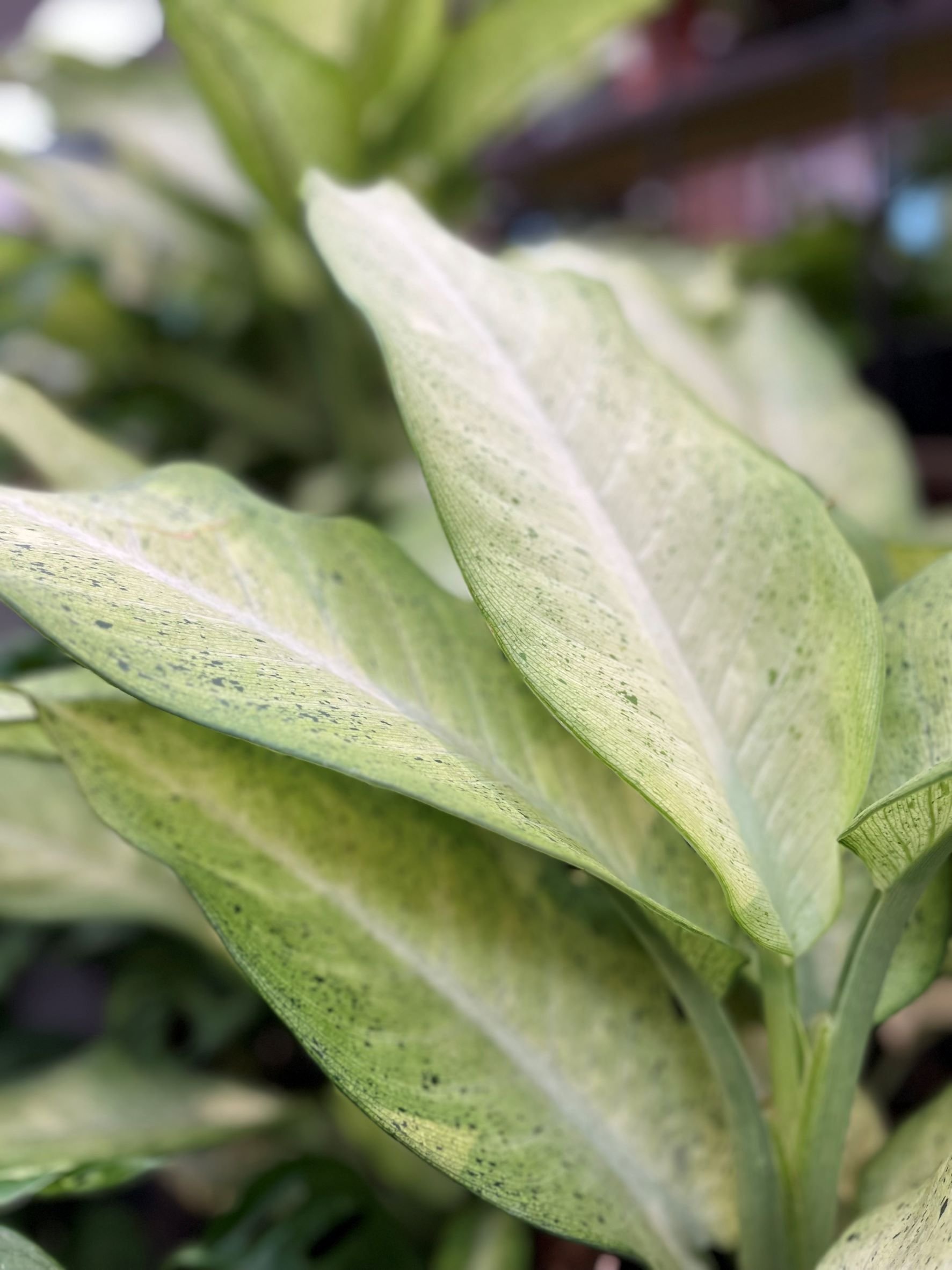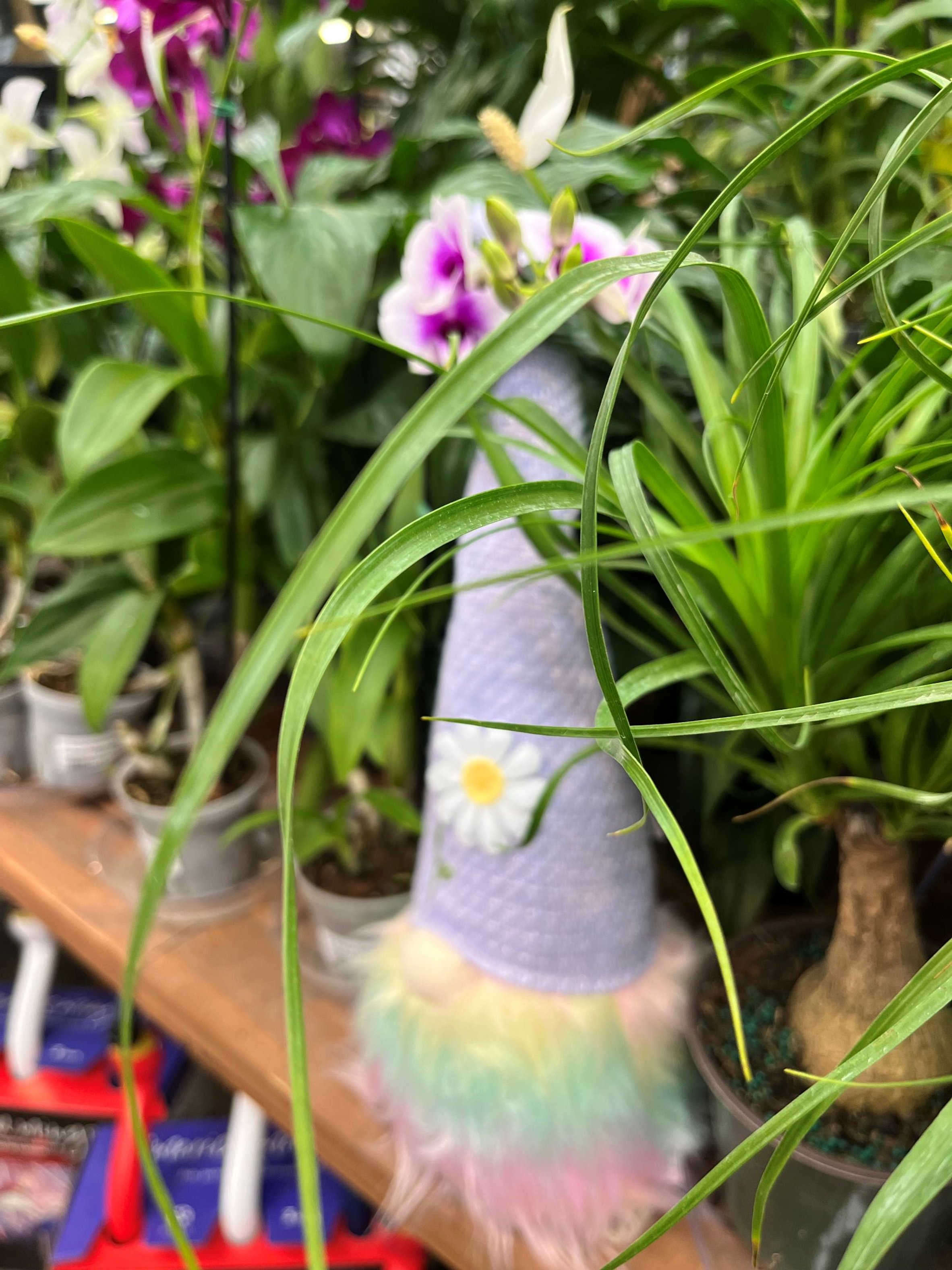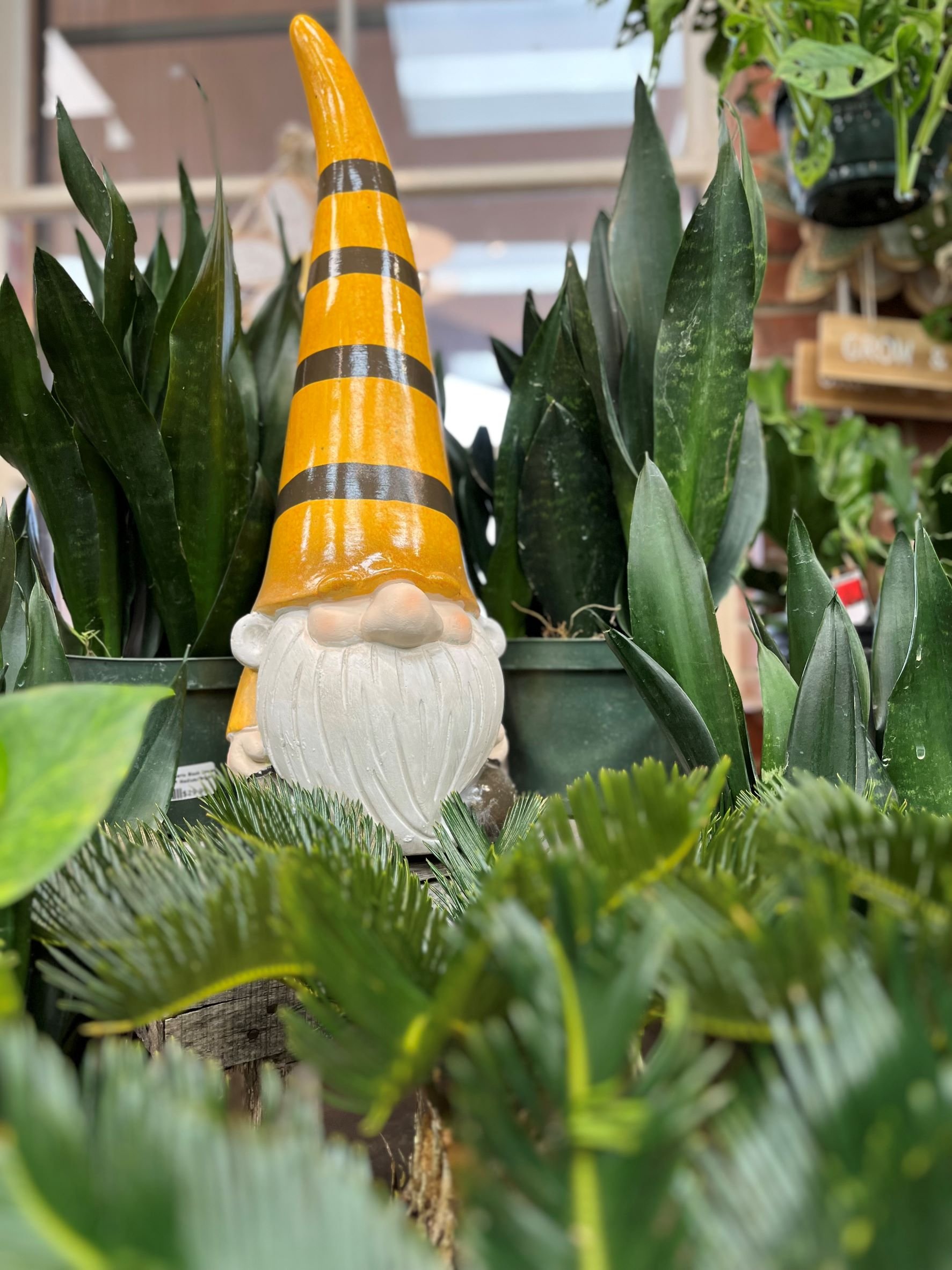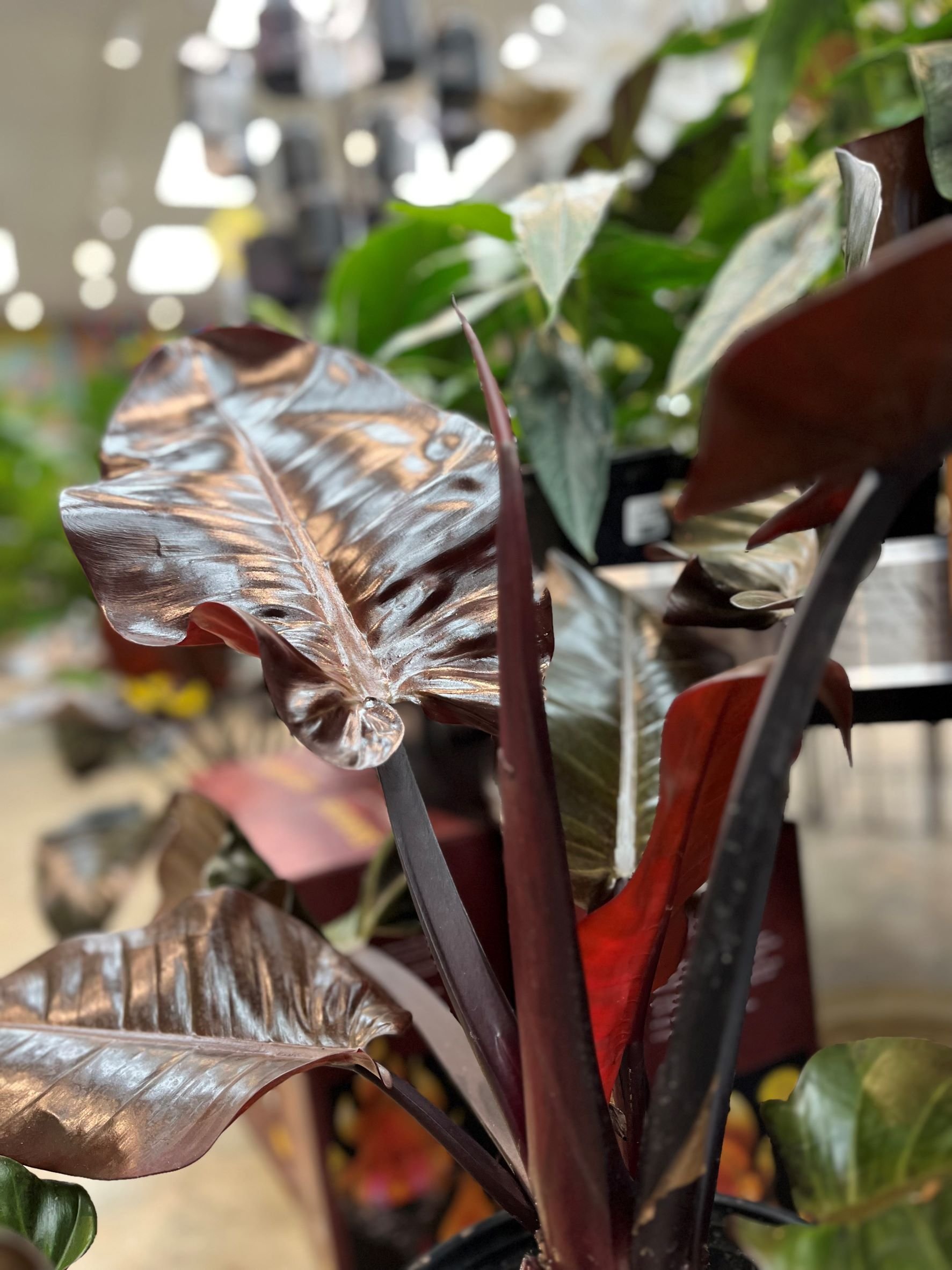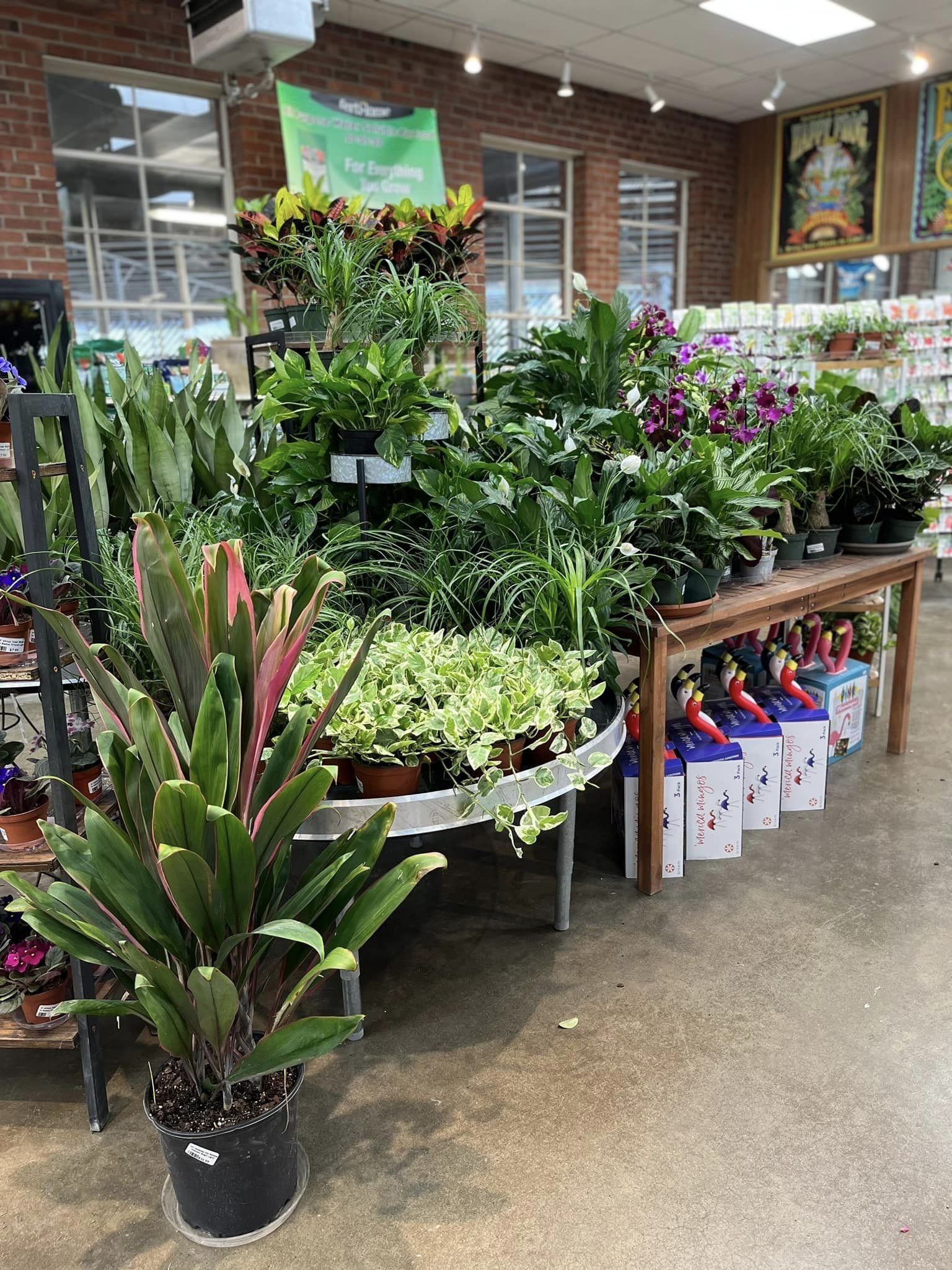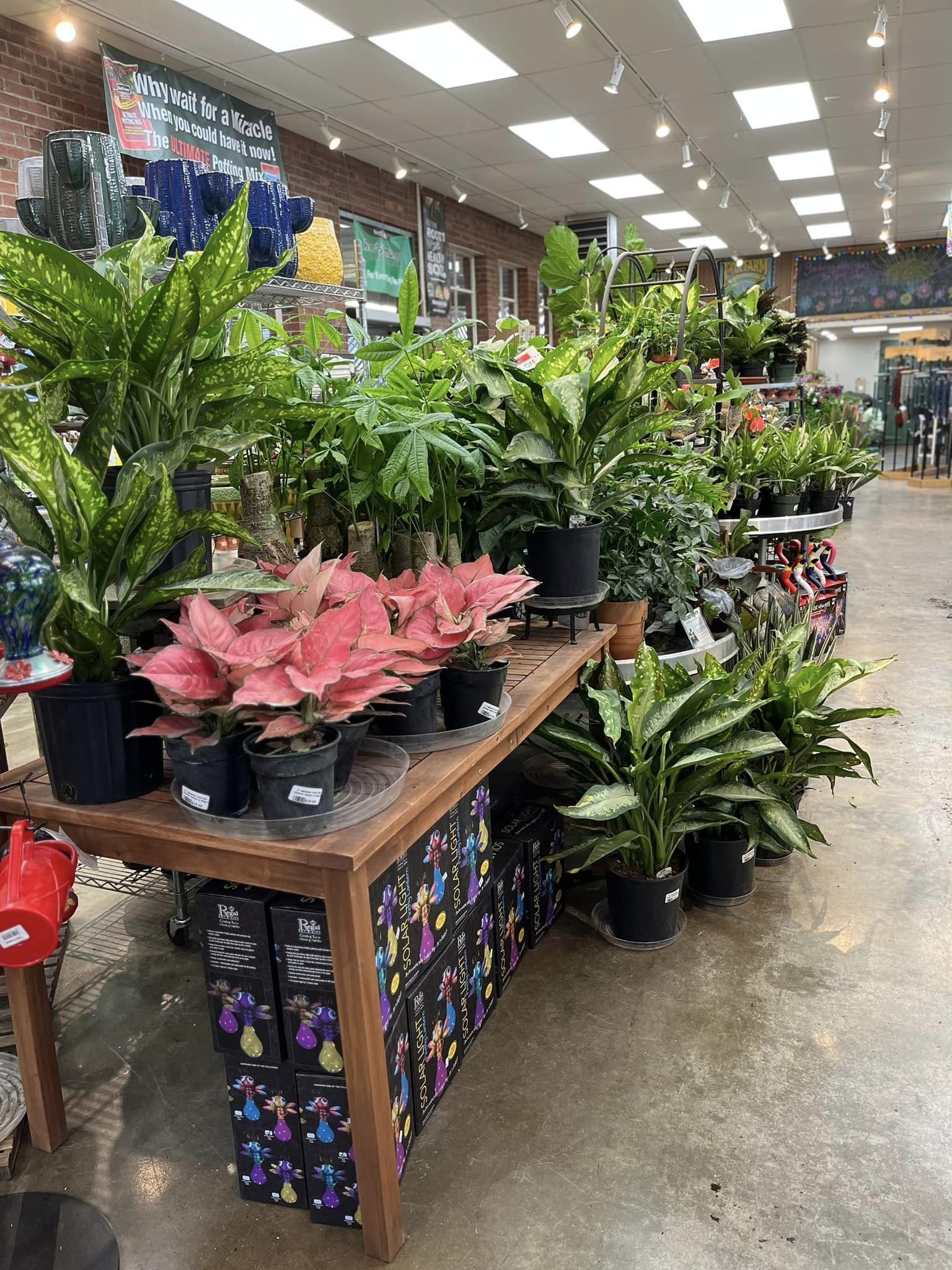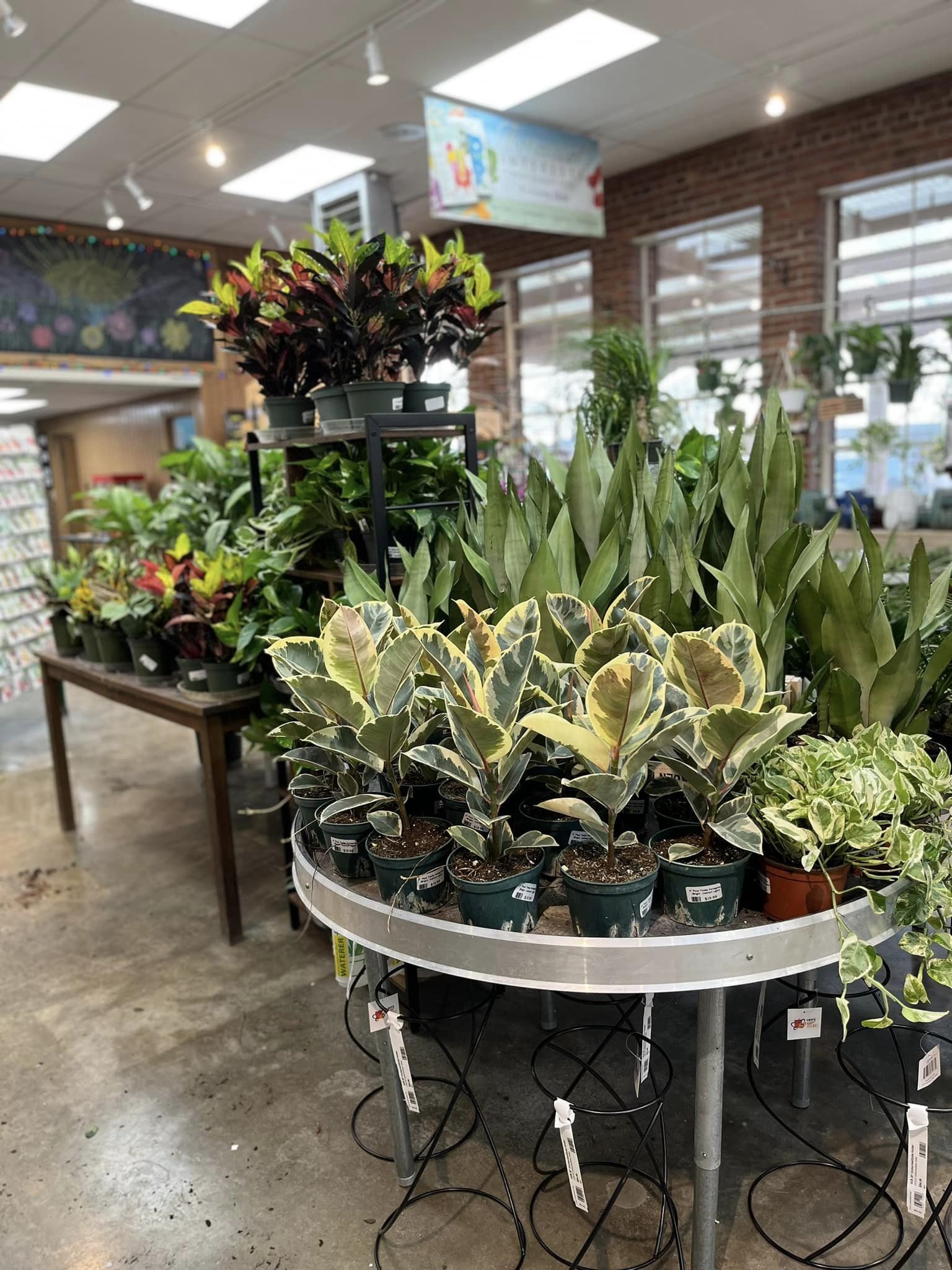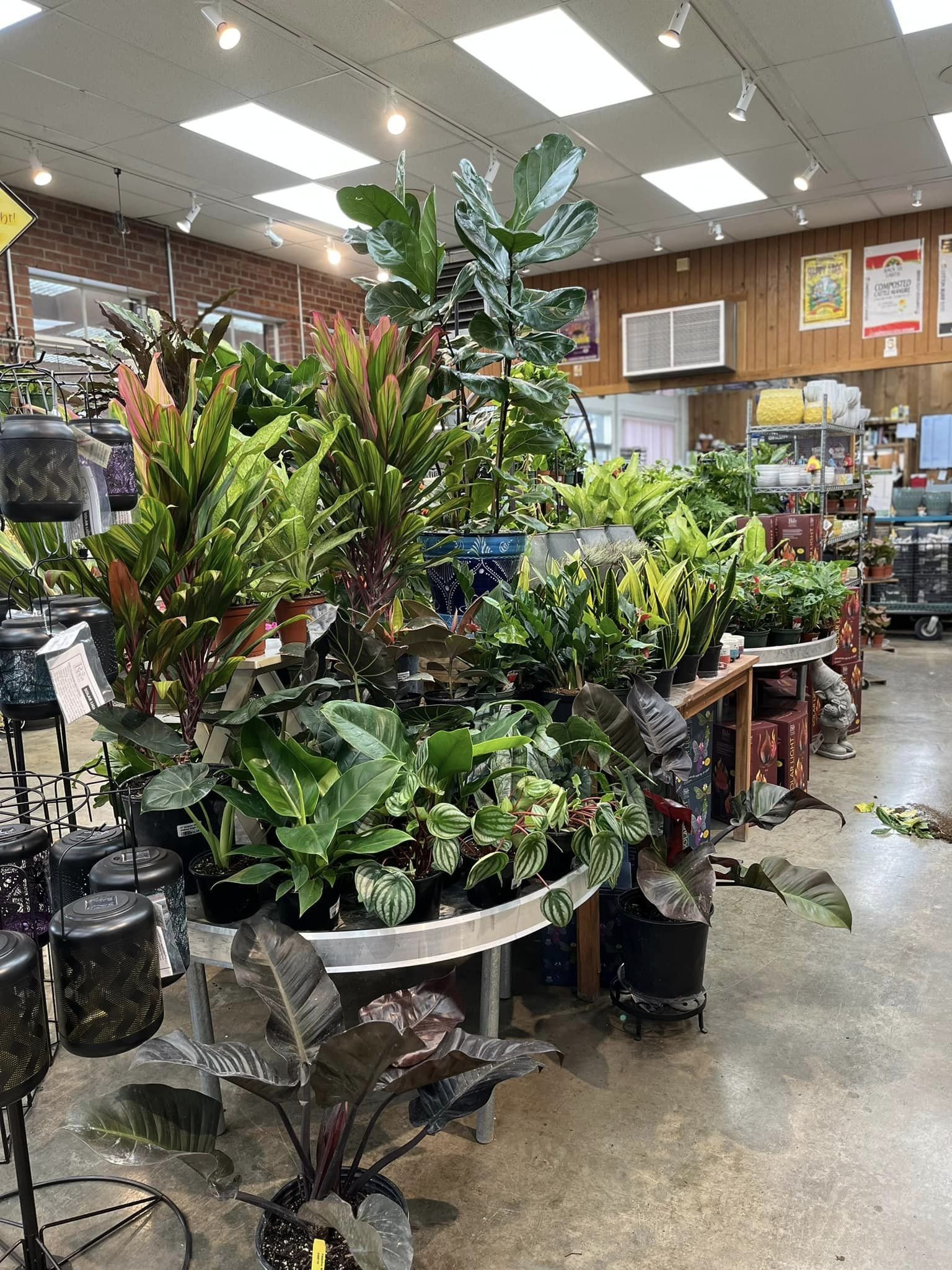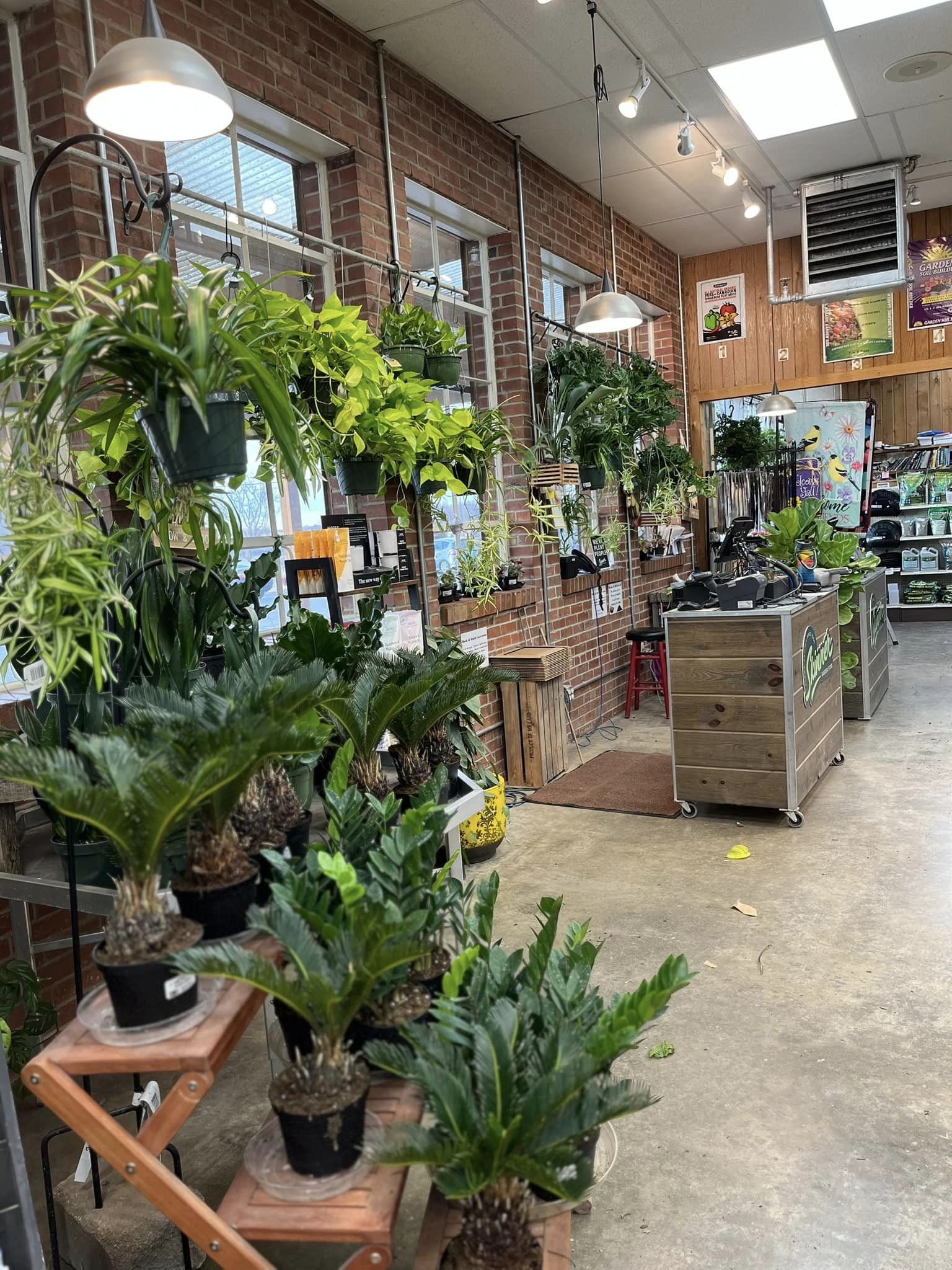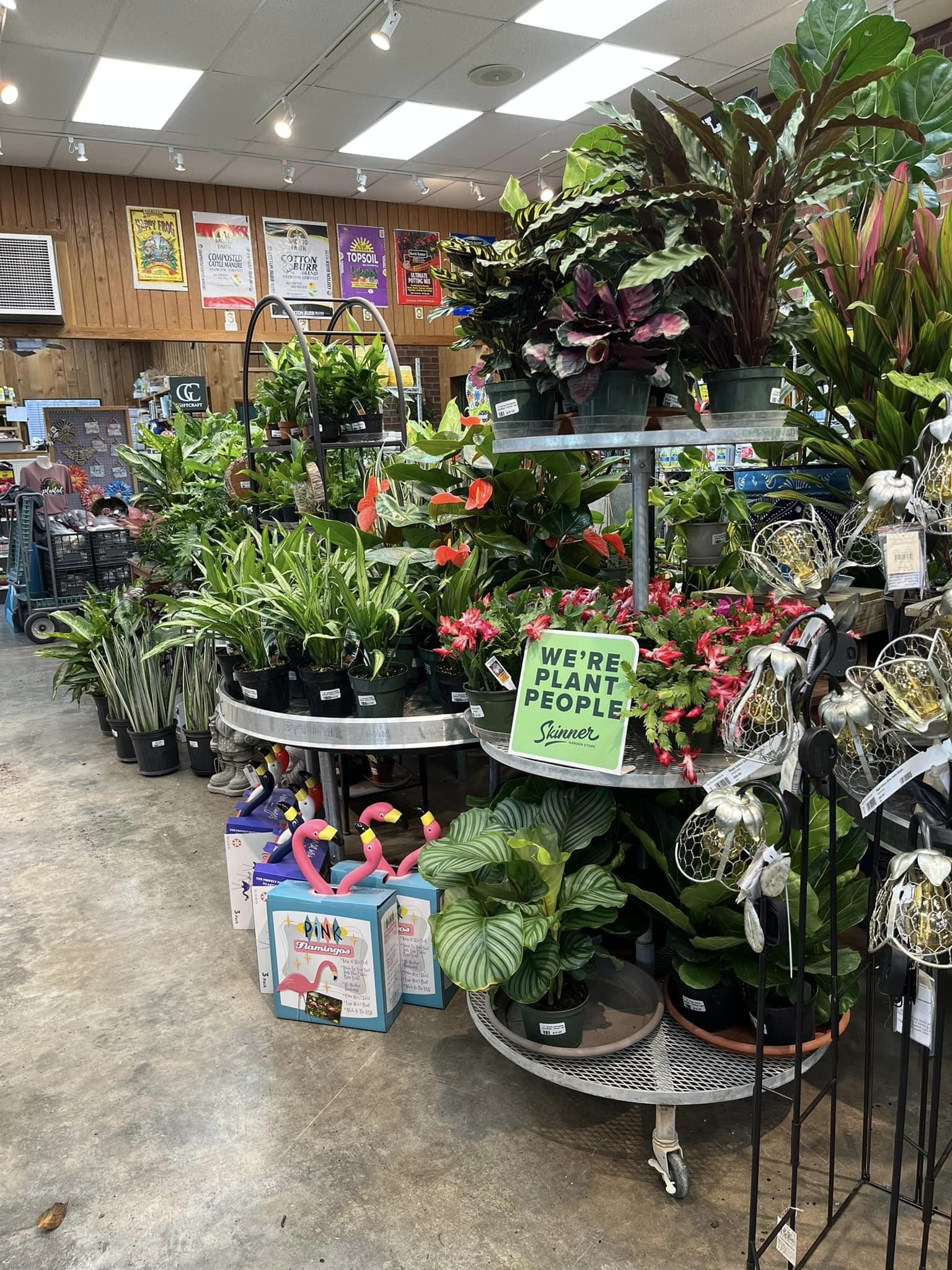rain man
Water, water, water.
That’s been my motto the last few weeks.
Water, water, water.
That’s been my motto the last few weeks.
Lately, my garden activities have been more about dragging hoses and setting up sprinklers that it has been much of anything else. It’s dry out there!
I’ve still been doing a little planting... I can’t ever stop that. However, the shift from “garden creating” to “garden care” has definitely taken place.
And by care, of course, I mostly mean watering.. and lots of it.
With the dry spell we’ve been having, I’ve had the opportunity to have a lot of conversations with folks about proper watering. It goes well beyond just the act of applying water itself (although that’s definitely a critical part!) and includes soil preparation, mulch, proper landscape design, proper plant selection and proper planting... but, that’s a discussion for another day.
Today, I just wanted to make a few comments about applying water.
It doesn’t matter how you tackle your watering projects, as long as you do them and do them well.
That means you watered with enough water—and for a long enough period of time—to allow water to soak down through the root zone, thoroughly saturating it in the process.
There are two parts to that equation... volume and time. One means nothing without some knowledge of the other. In the end, if the root zone hasn’t been thoroughly soaked, it wasn’t enough, regardless or the volume or time. Figure out what watering thoroughly looks and feels like and then do it every time.
There are lots of ways to get watering done.
I used hundreds of feet of garden hose, numerous sprinklers, lots of drip hose and an old Rain Train watering tractor left behind by the previous homeowner. It’s one of my favorites! Each hose run is controlled by an inexpensive, in-line water timer. Those are pretty sweet, too. They allow me to turn things on and not worry about being around to shut things off.
I tend get busy and forget things. (My wife would probably agree with that!)
Those timers also allow me to turn a sprinkler on before I leave for work and not have to worry about being around to shut them off.
Very handy.
Cameron Rees, General Manager
Keeping everything properly watered takes some time, but I’ve figured out a way to make it easy to do… and that’s the key. And, my garden keeps looking great all summer!
It’s been dry out there. It’s summertime, there’s likely a lot more of that to come, so be ready. Watering is the key to success at this time of the year. Stay on top of it.
If you have questions about watering, or othering things in your garden, just stop by and ask!
—Cameron
What’s New?
native perennials
by Misty Brown, Lath House Manager
Why plant natives? Once established, natives are less dependent on watering, fertilizing and insecticide use. Natives will be heat and drought tolerant and adaptable to our Kansas soils.
When planting natives, be mindful that you choose the right one for your location. Just because they are native doesn’t mean they will grow wherever you plant them. Watch the light requirements and heights on the plant.
Two popular natives are Milkweed and Wild Geranium. Butterfly Milkweed is a favorite among most native gardeners. This plant is a host for the Monarch Butterfly and had bright orange flowers in summer. Wild Geranium had cup-shaped, pink to lilac flowers in spring and are loved by bees and butterflies. Another native that is worth mentioning is Obedient Plant. These natives have pink snapdragon-like flowers in the summer and attract hummingbirds, butterflies and bees to your garden.
Come see what we have in store!
—Misty
skinner Buck$
summer redemption period ends monday, July 3
Our Summer Skinner Buck$ Redemption Period wraps up Monday, July 3. The next redemption period is in October.
If you want to use them now, you’d better hurry!
“Thymely” advice
japanese beetles
They’re here!
Actually, they’ve been here all along, but they’ve only recently emerged from the ground. That’s where they spend most of their life, living below underground as white grubs.
Now, they’re making their appearance in our gardens in their adult form— shiny metallic green beetles; beetles that love to feed on many of our landscape and vegetable garden plants. Not good!
Control is recommended if you want to avoid damage.
There are a number of products that will do the job. Fertilome Spinosad Soap is a good one, as is Hi-Yield Garden & Farm Insect Control and Hi-Yield Bug Blaster Bifenthrin 2.4. They all work. Take your pick. The key is picking something and using it.
They’re going to be around for a while... probably close to a month... so, spraying won’t be a one-time event. Unfortunately, they are very good at flying. You can get rid of the ones doing damage, but over time, others will move back in and take their place. Just follow the label directions as reapply as recommended until the problem goes away.
And one more important tip. Read and follow the label! That’s always recommended, but during hot weather, that’s especially important. Many products have the potential to cause foliar burn when temperatures are high, the humidity is high and/or sunlight is intense. That’s a lot of our summer days. In most cases, it is going to be advisable to spray late in the day, after the sun has started to set and temperatures have started to cool off for the night.
Also, pay attention to what you are spraying and what product you are using. There are many products that will effectively control Japanese Beetles, but only some of them are labeled for use on edible crops. Don’t use something labeled for only ornamental plants in your vegetable and fruit plantings.
This advice is worth repeating... read the label!
On a related note, if you’re wanting to protect your lawn from the grub stage of this pest as well, you’ve still got a few weeks to get an application of Hi-Yield Grub Free Zone III down and watered in.
If you have any questions, let us know!
Happy Independence Day
We’ll be closed for business on Independence Day, Tuesday, July 4. Enjoy the day and stay safe!
What would your wife say?
I’ve always felt like I was pretty good at loading a truck, but the other day, a customer showed me up!
I’ve always felt like I was pretty good at loading a truck; but the other day, a customer showed me up!
Now that’s a load of plants!
He had a pretty good drive back home, so he wanted to get it all in one trip. Well, he pulled it off! A total of 160 plants all loaded into one small Honda Pilot. Later, he reported back that not one plant was damaged during the hour+ drive home. Not bad!
He also mentioned that this was his wife’s car... so he said he also spent two hours doing a deep clean when he was done.
I wonder if he told her what he was going to do with it before he borrowed it?!
Cameron Rees, General Manager
I know my wife wouldn’t be the least surprised if I rolled into the driveway with my vehicle loaded down like this. I’m routinely hauling home loads of plants, mulch and other garden essentials. But, if I came home with her vehicle packed full like this… Well, let’s just say, it wouldn’t be pretty.
This guy owes his wife a very nice dinner!
It’s still great planting weather. We’re still bringing in a lot of nice plants and we have a lot of great specials going on right now, too. And don’t forget your Skinner Bucks! We’ll be redeeming those for a couple more weeks—through July 3.
If you need anything, come on out… Just ask before you borrow your wife’s car!
—Cameron
by Misty Brown, Lath House Manager
What’s New?
PHLOX
June is all about perennials! Big, tall, short, small, shade, sun and everything in between. Garden Phlox are one of my favorite sun perennials to recommend. They start blooming in the summer and come in an array of colors. Their sweetly fragranced blooms are a great addition to bring in hummingbirds, butterflies and bees. Most of the newer varieties of Garden Phlox are shorter in stature compared to the old-fashioned varieties you would find in the past. Flame Lilac Star is a gorgeous white variety that looks like it has brush stokes of bright lilac down the petals. Growing to only 16”, this Phlox would be great in a sunny border or even in a mixed container. We have many other colors to choose from to fit your style or needs. You can’t go wrong with Garden Phlox!
—Misty
skinner Buck$ redemption time
Our summer redemption period has begun!
Here's how it works:
For each $20 you spend at Skinner’s, you’ll earn a dollar in Skinner Buck$. Our exclusive store currency allows you to make money while spending money.
Skinner Buck$ can be generously used during three different redemption periods each year, and redeemed for up to 50% of your purchase.
Skinner Buck$ are not applicable for gift card purchases, but may be used in addition to gift cards for payment.
Start digging out those Buck$ - the summer redemption period ends July 3.
“Thymely” advice
Grub control now
If you’re seeing that grub damage in your yard is a regular occurrence, now is the time to get your grub treatment down.
You’ll want Hi-Yield Grub Free Zone III. It’s a granular product that you’ll apply with a lawn spreader and then water in—either with rainfall or irrigation.
An application now will get your protection in place for the new hatch of grubs taking place later this summer. Think of it like crabgrass preventer for grub worms.
You have up until early July to apply effectively, but don’t wait. The sooner you get things down, the better your application will be.
We’ve got all kinds of trees on sale 20-50% off! Not all the trees are on sale, but a lot are! This includes shade trees, ornamental trees, evergreen trees... there’s a lot!
The cone of shame
Potter is our dog, and he just celebrated a birthday. He attacked his day like any other day. He devoured his morning bowl of food as though eating it was a competition; and, then he proceeded to stare at us, longingly, like he had somehow been short changed. It’s pretty much the same routine at every meal.
After accepting that seconds weren’t in his future, he proceeded to find a place to take a well-earned nap. Let’s face it, eating takes a lot out of you!
He has a tough life.
Potter is our dog, and he just celebrated a birthday.
He attacked his day like any other day. He devoured his morning bowl of food as though eating it was a competition; and, then he proceeded to stare at us, longingly, like he had somehow been short changed. It’s pretty much the same routine at every meal.
After accepting that seconds weren’t in his future, he proceeded to find a place to take a well-earned nap. Let’s face it, eating takes a lot out of you!
He has a tough life.
This year was number fourteen for Potter. Do the whole dog-years thing, and it would be fair to say he’s old. I guess those naps are well deserved.
We get questions about his name for time to time. That story is pretty simple.
Our kids were in grade school when he joined the family. At that time in their life, Harry Potter pretty much outweighed everything else in their lives. (Do the math.)
Somehow, the name always suited him, although he clearly has no super powers.
He’s been a steady presence in our home ever since. I’m not so sure the kids aren’t more excited to see him than us when they come home to visit.
Okay, who am I kidding... I know they’re more excited to see Potter!
He’s an integral part of the family. I’m sure anyone with a pet understands. That’s why he had us all scared this past winter.
We woke up one February morning to find him just not quite himself. It was obvious he just didn’t feel well. Eventually, he ended up at the vet’s office.
Several weeks later, we were road-tripping to Manhattan, headed for surgery at the Kansas State Veterinary Complex. Other than driving by the building during our college days, that was our first experience with the Vet Clinic. We couldn’t have been more pleased. They took great care of Potter and took all the time with us that we needed. They were amazing!
Cameron Rees, General Manager
And the best news, after a few days with them, a couple of weeks recuperating post-surgery and sporting the “cone of shame,” he was back to his old self. He’s just as ornery as ever!
Life at the Rees home is back to normal.
Out at the garden center, things are still hopping. Recent rains have been welcome and will prove to be a big help keeping the spring planting season going.
We’re still restocking on a regular basis. If we can help you with anything, come on out!
—Cameron
What’s New?
flame thrower redbud
If you like color, this one’s for you!
This relatively new introduction has taken the foliage color of redbud up to a whole new level.
Leaves emerge a deep blood red in color, gradually transitioning through purple, burnt orange, bronze and eventually gold. The result—a tree canopy covered in a stunning combination of colors.
Spring blooms are a great show as well with lavender-pink flowers emerging before the leaves. It matures in the 15-20’ range, both in height and spread.
skinner Buck$ start Soon!
Just a reminder... our summer Skinner Buck$ redemption period starts Monday, June 12.
Start digging out those Bucks!
How do Skinner Buck$ Work?
For each $20 you spend at Skinner’s, you’ll earn a dollar in Skinner Buck$. Our exclusive store currency allows you to make money while spending money.
Skinner Buck$ can be generously used during three different redemption periods each year, and redeemed for up to 50% of your purchase.
Skinner Buck$ are not applicable for gift card purchases, but may be used in addition to gift cards for payment.
watch for bagworms!
It’s that time of year again... bagworms.
This is generally about the time they start hatching; and as soon as they do, they start feeding... aggressively!
They’ll be small at first, about a quarter inch or less, so you’ve got to look closely, and they’ll be hiding inside a tiny little bag. Watch for subtle changes in the way things look and slight movement when things ought to be still. When something catches your eye, go in for a closer inspection.
And if you find something, address it quickly!
The good news is, bagworms are relatively easy to deal with. There are many products that provide good control, including some highly effective organic options. Fertilome Spinosad is one of the best, but we have others and can explain your choices if you have questions.
Be on the lookout!
fertilize planter
Misty Brown, Lath House Manager
Most of you have your porch pots already potted or are getting ready to. There are a couple things to remember while potting and going into the summer.
If you haven’t potted your planters up make sure you are using a good POTTING SOIL! You can’t use DIRT from your yard or anywhere from the ground. You want to use potting soil so that you have adequate drainage—which is key to having a successful container.
The next thing, and this is what so many people miss, is that you need to feed your flowers to keep them looking healthy and blooming, especially through the summer months. We alternate Ferti-lome Blooming & Rooting and All Purpose 20-20-20. This is a water-soluble plant food that you dissolve in water and pour onto your plants, once a week is a sufficient amount for most plants. Geraniums and petunias are high nitrogen feeders, so to keep them blooming throughout the summer fertilize them twice a week. If you need help getting a planter put together, we are always here to help!
Celebrating the finish Line
Our youngest, Cooper, graduated college this past Saturday. It was a fantastic weekend full of ceremonies, celebrations, friends, family, eating...a little drinking...and some reflection.
And that reflection I’m referring to, was by me.
For the past 26 years, my wife and I have been raising our kids. It got easier over the years, but none the less, there were still responsibilities. Well, it hit me Saturday, we’re done!
Our youngest, Cooper, graduated college this past Saturday. It was a fantastic weekend full of ceremonies, celebrations, friends, family, eating... a little drinking... and some reflection.
The reflection I’m referring to, was by me.
For the past 26 years, my wife and I have been raising our kids. It got easier over the years, but nonetheless, there were still responsibilities. Well, it hit me Saturday, we’re done!
I get that you’re never really done. We do love our kids, but you know what I mean. We’re no longer riding on the “raising kids train.” We have arrived at our final destination.
I guess our next step is... grandkids? Wow, where did the time go?
I’m still trying to wrap my head around it!
Cameron Rees, General Manager
Anyway, last weekend was a blast! We got to spend a lot of time together as a family, and we got to attend the college graduation ceremony together. That was cool, because unfortunately, this was the only college graduation ceremony any of our kids got to have. (I had kind of forgotten about that part.)
Our girls both graduated college during the height of Covid, so their chance to trek across the stage and capture a brief moment in the spotlight didn’t happen. That really sucked for them, as well as a whole lot of others.
We all missed out on a lot over through those years...but times are better now!
I know there are a lot of others celebrating graduations out there this spring as well. Congratulations to all of you! And a belated congratulations to all those, like our daughters, that had to sacrifice celebrations due to Covid. I wish you all the best.
And to our son, Cooper...
We’re proud of you!
—Cameron
What’s New?
Chinese Fringe Tree
This one isn’t exactly new, but it has been a few years since we’ve had anything bigger than a seedling to offer... so I thought it would be worth talking about.
Chinese Fringe Tree is a beautiful, small to mid-sized flowering tree that’s best know for the amazing floral display it puts on each spring.
Blooms come on in May, a few weeks after the leaves have emerged. Flowers are pure white, lacy and envelope the canopy with their display. They’re easy to grow, tough and durable, and best yet—they’re show-stopping!
Now here’s a little local back story, as I know it. It involves a horticulturist, giraffes and the Topeka Zoo.
Back in the 1930s, at the time when the Topeka Zoo was being developed, the Topeka Park Department had a nursery growing area located within Gage Park. The new zoo was to occupy that area.
At least some of the trees growing in that nursery area were left in place, including several Chinese Fringe Trees. They became part of the old giraffe exhibit we all knew as kids.
Thanks to a wise horticulturist that worked in the park department for many years, seed was routinely collected from those trees, grown out, and ultimately transplanted into park areas across the city. You can see evidence of his dedication to this amazing tree each May when blooms unsuspectingly erupt in unexpected places all over town.
One of the best displays is located in Gage Park, between the swimming pool and the rose garden. There, the blooms of two large groves of Chinese Fringe Tree can be enjoyed each spring. I look forward to it every spring, and it just happened. It was quite a show!
We’re doing what we can to keep this lineage going. Each fall, we collect seeds from those trees. We plant them up in growing crates... and then we wait.
The seeds of Chinese Fringe Tree have what is known as a “double” dormancy. That means they need to go through two winters before they start to grow. So, we plant them, and then we wait... for TWO years!
The newest ones are coming up now. (These were planted in the fall of 2021.)
We try to have a new crop to offer each year. That doesn’t always work out, but we do our best to make it happen. These seedlings will spend the rest of this year, and maybe next, gaining size before we harvest them and pot them up for retail.
This is a cool tree with an even cooler “local” story, and we want people to be able to enjoy them for many years to come.
The Chinese Fringe Trees at Gage Park
“Thymely” Advice
Keep weeds under control
Weeds are always an issue, but when crops are young, they’re especially problematic. Their competition can stunt or even choke out the plants you’ve worked so hard to plant. Don’t let them!
Now that new gardens have been planted, stay on top of things.
Cultivate — Control weeds growth by lightly cultivating or by pulling regularly. Going out shortly after a rain while the soil is still soft helps with both.
Mulch — Mulch crops to cut down on weed growth to begin with. Alfalfa mulch or straw work well in the veggie garden. Wood mulches are best for permanent plantings.
Herbicides — There are a variety of herbicide products, both pre-emergent and post-emergent, that can be used to control unwanted growth in the garden. If you need recommendations on those, just stop by and ask.
sweet potatoes
Misty Brown, Lath House Manager
Sweet potatoes…
Even though I am not a fan, there are millions of people out there that are. This is the time of year to get them into your garden so that you can enjoy them down the road.
A couple years ago a new variety of sweet potatoes were developed by Pat FitzGerald and Louisiana State University Ag Center. Together they developed the Treasure Island series that combines beauty and edibility. The colorful leaves will trail in your garden or planter and taste great in salads and smoothies. Five months after planting, the tubers can be cultivated and used in your favorite sweet potato dish.
It’s not that often that a plant comes along that is a triple treat! If your feeling adventurous, Treasure Island sweet potatoes are a great gamble.
Helicopters!
A friend of mine asked me a few weeks ago if I thought any of the frosty nights we’d been experiencing might have taken out the Silver Maple seed crop for the year.
I told him that was wishful thinking, and only time would tell. Well, a little time has gone by and I think we’ve gotten our answer...
A few weeks ago, a friend of mine asked me if I thought any of the frosty nights we’d been experiencing might have taken out the Silver Maple seed crop for the year.
I told him that was wishful thinking, and only time would tell. Well, a little time has gone by and I think we’ve gotten our answer...
Nope!
Recent winds have done a great job distributing this year’s crop. My yard and my driveway are full of them. Yours probably are, too. It looks like we’ll all be pulling out unwanted volunteer maple seedlings again this season.
And, I’ll probably be cleaning out clogged gutters soon, too! (Remember what happened last time?!)
A lot of people complain about all the Silver Maple seeds. Unless you’re interested in planting a few thousand new trees, they’re basically an unwanted nuisance... unless, you’re into this...
If that’s the case... well... you’ve got hours of play time ahead of you!
The man in this picture is Bob.
Cameron Rees, General Manager
Bob and I both worked as college interns many years ago at an arboretum on Long Island—The Planting Fields Arboretum. It’s an amazing 400-acre estate garden in Oyster Bay, Long Island. (Maybe I’ll tell some stories about that in the future.)
He shared this bit of horticultural knowledge with me that summer. He told me it was something he’d learned during one of his plant material classes.
A good education pays off in so many ways!
So, while you’re out there cleaning up all those Silver Maple seeds off the driveway, grab a few and stick them on your nose. Your kids, grandkids or neighbor kids will get a good laugh. Your spouse on the other hand...
The garden center is hitting on all cylinders now. If you need anything for your lawn, landscape or garden—come see us!
— Cameron
What’s New?
Pop Star Bigleaf Hydrangea!
This is the latest introduction from the Endless Summer collection. It’s a compact plant, with a strong reblooming tendency. Flowers are lacecap in structure and pink to blue in color. Its short stature makes it a good choice for foundation plantings and containers.
“Thymely” Advice
It’s time to fertilize
For many things, it’s all about the timing; and, this is definitely true when it comes to your landscape.
The trees, shrubs and evergreens we grow in our landscapes benefit from fertilizer—if it’s applied at the right time.
There are two target dates, late-fall and mid-spring.
The late fall application goes down around late October or early November, and it’s the most important. It’s what helps things produce stronger growth in the spring. Mark your calendars now and don’t forget it!
The mid-spring application helps keep things growing nicely into the summer and should go down right now, especially if you didn’t fertilize last fall.
We use Fertilome Tree and Shrub Food for both. Just follow label directions, scattering it on top, and let rainfall take care of the rest!
Mother’s Day
Misty Brown, Lath House Manager
It is that time of year again, people! Time to show your mom, mother-in-law, step-mom, grandma, or that special lady that helped raise you just how much you love and appreciate her!
Mother’s Day is Sunday, May 14 and Skinner’s is here to help!
We have beautiful hanging baskets bursting with color and patio containers with an array of foliage and flowers. We are filled to the brim with amazing houseplants, too! Air plants are another unique gift to give—low maintenance and easy to take care of for that super busy mom! At Skinner’s you can always customize any container you find to make that gift even more special.
Stop by today and we will help make your mom’s heart melt…
Garden Roses are Ready
Every kid should have a garden.
I had several. I know... I’m a plant nerd!
One was a flower bed. Each spring, I got to plan it, plant it and care for it. My mom would help, but the responsibility for its success (or failure) was mine. It taught me a lot.
One was for veggies. The veggie garden was dad’s domain, but he always let me help him and always gave me a corner to experiment with. I learned so much from him.
The other was a rose bed.
But why a rose bed?
I started my time here at Skinner’s as a young kid looking to earn some gas money. One of my first jobs back then was restocking the garden rose display. That meant hauling cartload after cartload of garden roses from the growing houses out back to the sales area out front.
That up-close interaction with garden roses made an impression on me. It also left my forearms looking like I’d been mauled by a mountain lion! Despite the thorns, the rainbow of colors and intoxicating fragrances were hard to resist. It wasn’t long before dad was carving out a space next to the patio for me to plant my very own plants.
And I’ve loved roses ever since.
Each spring we grow a new crop of garden roses—a diverse mix of hybrid teas, floribundas, grandifloras, and climbers... and they’re budded up and ready to go.
It’s time to pick out your favorites!
-Cameron Rees
that foot is me!
It’s started. Springtime has slowly returned. It’s brought nice temps, spring flowers, a little too much wind...and some unwanted visitors... moles.
It’s started.
Springtime has slowly returned. It’s brought nice temps, spring flowers, a little too much wind...and some unwanted visitors... moles.
Or, maybe it was just one unwanted visitor... only one mole. It’s hard to say for sure, but I can tell you that since “dealing” with the “uninvited” guest, the disruption has gone away. Problems solved... at least for now.
I’m sure that will change.
If you’ve ever battled moles in your own yard, you know what I mean. They tend to have friends. And getting rid of one only seems to open the door for the next one. More unwanted guests!
Unfortunately for them, I have a very low tolerance of party crashers. I reacted quickly to this one, dusted off the mole traps and got them into position. Two days later, I came home to find one of them sprung. Game over.
Now I’m on the lookout for fresh activity, and when I see it... watch out!
Cameron Rees, General Manager
Moles, I’m waiting for you. I’m watching for you. Consider yourselves to be on double secret probation from this point forward.
“It’s time for someone to put their foot down, and that foot is me!” — Animal House
You’ve been warned.
— Cameron
“The best time to plant a tree was 20 years ago. The second best time is now.” — Chinese Proverb
“Thymely” Advice
Crabgrass control — what if I missed the red bag?!
We spend a lot of time in February, March and April talking about “The Red Bag.”
The Red Bag is Fertilome For All Season’s Crabgrass Preventer. It does a great job preventing crabgrass, if you put it down in time. And, “in time” means before now.
So, if you missed your chance at “The Red Bag,” what do you do? Well, time for Plan B!
Plan B is Hi-Yield Turf and Ornamental Weed and Grass Stopper.
This crabgrass preventer is unique. It not only prevents crabgrass from coming up and becoming a problem, it can also be used to take out young crabgrass early in the season. This ability to both provide pre- and post-emergent control means you’ve still got a crabgrass solution for a few more weeks.
Just follow the label directions with your application and then get it watered in as soon as you’ve got it applied. It can effectively take out crabgrass up to 4 weeks after crabgrass germination, so you’ve got a little more time... but not much!
Pest Control on Fruit Trees
First, you get blooms. Next, come the fruits. Then, come pest problems.
Keeping fruits intact so you can enjoy them at the end of their season sometimes takes a little extra work.
There are a variety of different insect and disease problems that can crop up each season, and for pretty much all of them, prevention is the solution.
But knowing what to put on and when can be confusing—to say the least. All crops are a little different, and a lot of the problems they face are also different. Add to that, pest control products are less broad spectrum than they used to be, so knowing which specific product to use and when to apply can be challenging.
Having a little resource info at your disposal can be a big help.
Kansas State University Extension has some good publications that can help. There are a couple listed below, but there are certainly more. Just hit Google for the topic you’re looking for and include Kansas State University Extension in your search.
Both of these do a good job describing the various problems that can arise and the best control timing to prevent it. However, even with all this information, knowing exactly what to do can still be confusing. That’s where we can offer some additional help.
Come on in and talk with us. We’ll do our best to explain your options and get you going in the right direction.
Good Luck!
opening day?
What a great day!
A couple of weekends back, we celebrated our Spring Kick Off. There were hot dogs, there was beer from Norsemen Brewing Company, there was phenomenal weather... and there were LOTS of people. It was so much fun!
I don’t think we could have scripted a more perfect day… and I needed it.
Winters get long out here. Day after day of dreary weather and limited retail activity, leave me longing for springtime and the crowd it brings. It’s kind of like anticipating the first blooms of spring... I can’t wait for our customers to return.
The weekend didn’t disappoint.
I was blown away by the crowds! It’s nice to see the nursery full of plants again, and it was great to see customers walking through. Thanks to everyone that came out and made the weekend special. I hope you enjoyed it as much as I did.
On a different note, but still focusing on spring...
I snuck over to the Ward-Meade Botanic Garden the other day to check things out. There are a couple big events coming up there over the next few weeks that you don’t want to miss, Tulip Time and Tulips at Twilight, and I wanted to see how things were coming. The tulips weren’t blooming yet, but other things were. It was a beautiful walk.
Even though the tulips weren’t blooming yet, it was obvious an impressive show is on its way. Things start up out there this weekend. Take my advice and check it out.
And, Happy (belated) Easter!
—Cameron
Cameron Rees, General Manager
No Sad Tomatoes
Mother Nature is going through another mood swing this spring. Up and down temperatures with rain, snow and freezing temps with an occasional nice day thrown in. It’s those nice days that get you in the mood to start thinking about your garden. When it comes to putting vegetable plants in, keep those up and down temperatures in mind. Crops like cabbage, broccoli, cauliflower, spinach, lettuce and brussels sprouts are great for these conditions. Seeding radish and turnips at this time is also ideal. There is also time to get your seed potatoes in along with onions, rhubarb, asparagus and strawberries.
Misty Brown, Lath House Manager
Now, the important part of this article….what NOT to plant at this time. You will be tempted to get a jump start on those tomatoes… DON’T.
Even though we may get some really nice days in the 70s and 80s, the night temperatures can still dip into the 30s and 40s. These temperatures will not kill your plants, but they will damage and shock the plant which leads to little or no growth until the temperatures are constantly warmer. Soil temperature is also another very important factor when planting tomatoes, peppers and other warm season vegetables. The soil temperature needs to be at least 55 degrees. Cold soil will have the same effect on your plants as the air temperature.
Long story short… planting your tomatoes outside when air temperatures and soil temperatures are not prime will not get you a bigger tomato faster. Waiting till the temperatures are prime will get your tomato growing rapidly and would catch up quickly to the ones you would have planted early!
the bark is back
We’ve been out since last season, but it’s back in stock… All Bark Cedar Mulch.
“Thymely” Advice — Rust Control
If your trees have had a rust problem in the past, get ready.
Rust is a fungal disease that plagues certain types of apples and pears. It causes numerous rust-colored legions on the leaves, resulting in sever defoliation during the summer. It can also leave damaging legions on the fruits.
Prevention is the key.
Think of preventing rust like preventing a sunburn. You apply sunscreen before a day at the beach, not after. If you want to prevent rust, you need to do the same... apply your rust protection before leaves get infected.
And much like sunscreen, it’s not a one-time application. Sunscreen wears off or washes off, right? Well, the same is true with fungicides used to prevent rust. Your trees protection will wear off over time, and it will need to be reapplied to keep your tree protected.
Rust can be devastating, so prevention is critical to keep trees—and the fruits they are carrying—healthy.
You have two choices...
Do nothing and live with the consequences. Bad choice.
Tackle the problem with a preventative fungicide program. Much better choice!
A fungicide program is just that. It’s a series of preventative sprays to protect foliage and fruits from this disease. That means spraying more than once.
Just like the sunscreen example, a one-time application won’t do it. The product you apply will degrade in the sunlight, it will wash off with spring rains, and new growth will develop after a spray application and that will be unprotected. It will take multiple applications from now through the end of May to protect things.
Here are two ways to tackle the problem.
The first is a traditional approach with a fungicide by Fertilome called F-Stop. Start applying it in early April, after the trees are done blooming, and continue through May, following label directions, repeated as directed.
The second option is a more organic approach, using two Fertilome products, Fungicide 5, a fairly new fungicide that utilizes beneficial bacteria, and Copper Soap Fungicide, a long-time garden fungicide. Alternate applications, following label directions and the recommended spray intervals.
Here are a few additional tips...
Make sure you thoroughly coat all leaf and fruit surfaces when you spray. Remember, your application is a preventative coating. Just like that sunscreen, if you miss areas, you’re going to get burned.
If you are tank mixing, make sure you add in the Hi-Yield Spreader Sticker. It will greatly enhance your spray application while at the same time increase what stays on following a rain.
Stay on schedule! Follow the recommend reapplication timing found on your product label. If it says to spray every 7 to 10 days, then you need to reapply in 7 to 10 days. Remember, you are applying a protective coating on leaf and fruit surfaces and that coating must be maintained. If your protection wears off, infection can occur, even if you’ve been doing a good job up to that point.
As always, if you have questions, just ask!
—Cameron
Free beer!
Spring is here... at least I think it’s mostly here!
The calendar now says it’s spring and the weather is looking better, so I’ll take it! The grass is starting to green up, and the flower buds on trees are swelling up... a few are even showing some color. We’re headed in the right direction.
We’re bound to see a few cool nights yet; it’s still too early to think we passed all that. Our average last freeze date is mid to late April, so we still have some time yet before we start planting summer crops like peppers and tomatoes, but as for everything else... it’s time to go for it!
Over the last few weeks, we’ve been starting new crops and receiving loads of new plant material. With the colder temps we just went through, however, we’ve held off bringing things out onto our sales lot. That’s all changing this week!
We’re going through a major transformation right now, and plants are coming back out onto the lot... finally! Just like spring growth, our plants are starting to peak back out. And the timing couldn’t be more perfect, because this weekend is our Spring Kick Off Weekend.
Cameron Rees, General Manager
This Saturday and Sunday we’re celebrating the new season! There will be all kinds of great plants, all kinds of great gardening products and lots of staff on hand to answer questions and offer inspiration. We’ll have some snacks to enjoy, and our friends from the Norsemen Brewing Company will be on hand on Saturday serving up some of their finest... that would be beer. And trust me, they brew great beer!
There will be some weekend specials, free issues of our new Garden Guide catalog, and we’ll have lots of things for the veggie garden — like asparagus, strawberries, onions, potatoes and early spring transplants, as well all kinds of garden seed. There will be a lot to check out!
We’re excited spring is here, and we’re looking forward to celebrating this weekend. We hope you can join us.
Cheers! 🍻
-Cameron
What’s New?! Hellebores
Misty Brown, Lath House Manager
As I’m writing this, we are coming off of a day where is rained then proceeded to snow. Today it’s 43 degrees and we just had a 2-minute snow shower and tomorrow night the low is 15. As your reading this now it is probably 70 degrees outside, maybe some rain… Mother Nature sure is a strange lady when it comes to spring in Kansas.
Anyways, spring even though the weather is crazy it does bring some beautiful blooms. One in particular is Hellebores a.k.a. Lenten Rose a.k.a. Winter Rose a.k.a. Christmas Rose — which, actually, isn’t a rose at all. It is a shade perennial that shows up in early spring with gorgeous cup shaped flowers. Some flowers are upward facing while some hang like bells off of the stem. Lenten Rose come in shades of pink, white, lime green and, sometimes, near black. They make a great addition to any shady garden and add a pop of color when everything else is just starting to wake up.
“Thymely” Advice
Low Maintenance Landscape Beds
Springtime is garden clean-up time. And just like any other gardening project, there are easier ways to do things and harder ways to do things… I’m a big fan of easier!
Through years of gardening, I’ve picked up a few tricks. I’ve also learned some ways are easier. Some ways produce better results. And, if I can accomplish both at the same time... well, that just makes good sense!
So, here are a few things that make my gardening work easier while also producing better results.
Chop and drop.
Springtime brings a lot garden “clean-up.” Ornamental grasses and perennials are being cut back and that creates a lot of debris. Don’t throw that away! In my garden, all that material—along with all the tree leaves that have blown in—go right back onto my landscape beds to function as mulch, eventually recycling back into the soil and feeding my plants. I chop it up small so it filters down into place. Sometimes I even bring my push mower in if the project is big enough. My spring clean-up is quick and easy, and my garden grows better because of the process.
Touch up mulch.
Even with the “chop and drop” method above, I still have areas in my garden that need a little more. Aim for about 3” of shredded wood mulch. That keeps weed growth down to a minimum, dresses things up, eliminates mud in the garden, and makes plants happy. Mulch should be in place year-round, but from time to time, it will need to be top-dressed as it decomposes. This time of the year is a good time to give your mulch a spring “tune-up” if needed.
Apply a pre-emergent.
If you want a little extra help with weed prevention, use a pre-emergent in your landscape beds. Hi-Yield Turf and Ornamental Weed and Grass Stopper—applied now, following label directions,—is the help I use. Applying it late winter/early spring and again in late summer/early fall provides an extra layer of weed protection, and fewer weeds means less maintenance.
Feed plants.
I like to fertilize landscape plants late in the fall and then again in the spring, like now. Use Fertilome Tree and Shrub Food for all your woody plants and Fertilome Gardener’s Special for your perennials.
Fill in gaps.
If you have areas that still need to be planted, get them filled in. Spring is a great time to plant as well as a great time to divide and replant perennials. Remember, the fewer gaps you have, the less weed pressure you’ll be fighting. If you need help figuring out what you should plant, come ask us!
Prune things.
If trees or shrubs in your landscape need some corrective pruning, do that now before new growth starts. Nothing grows exactly the way you need it, so plan on pruning, and plan on doing it on a regular basis. All gardens need a little “adjustment” from time to time.
There you go, those are my tips for making my spring clean-up a little easier and a lot more successful. Now, give them a try in your own garden.
Good luck!
-Cameron Rees
Red Bag Reminder!
*
Red Bag Reminder! *
Don’t forget to get your “Red Bag” — Fertilome For All Seasons Crabgrass and Weed Preventer, applied and watered in soon... unless you like crabgrass!
I found you!
I’m excited to see some colorful signs of spring!
A few daffodils came into bloom in our yard over the weekend; and, right next to them, the swollen buds on some creeping phlox were beginning to crack open and show some color, too.
It’s only a few things , but I’m excited nonetheless. It’s starting to happen!
The upcoming weeks will bring a lot of changes. As nicer days continue to win out over colder ones, more and more will wake up, and spring colors will be much easier to spot.
Cameron Rees, General Manager
If you haven’t already done it, it’s time to head outside and get things cleaned up. Grasses and perennials need their old tops cut off... and don’t throw them away. Put them on your compost pile. (And if you don’t have a compost pile, it’s time to build one!) Roses should be cut back now, too, as should clematis. If you need to do any touch up pruning on trees and shrubs, you’d better get on that while there’s still time.
Here at the store, our spring planting season is under way, too. New plant deliveries have started arriving, and—little by little—the sales lot will be filling back up.
Things are changing... everywhere!
As always, if you need any help with anything, just stop by the garden center and let us know. We’re here to help!
—Cameron
*Please Note: We have transitioned back into our normal in-season business hours!
Monday-Friday: 8:30 a.m.-6 p.m.
〰️
Saturday: 8:30 a.m.-5 p.m.
〰️
Sunday: 11 a.m.-5 p.m.
〰️
Monday-Friday: 8:30 a.m.-6 p.m. 〰️ Saturday: 8:30 a.m.-5 p.m. 〰️ Sunday: 11 a.m.-5 p.m. 〰️
what’s new?
Onions & Potatoes
Seed potatoes and onion sets arrived this week, and rumors are that onion plants should be here by the weekend. It’s time to start planting that garden!
Thymely Advice
It’s time for the red bag
It’s that time of year... time to put down crabgrass preventer.
For most folks, that’s going to be Fertilome All Seasons Crabgrass and Weed Preventer—the one in the bright red bag. Just one application early in the spring provides solid crabgrass and weed control throughout the spring and summer season. It’s easy to apply and easy to use.
It’s also the first step in our 3-Step Lawn Program.
Just three easy steps—crabgrass preventer in the spring and two applications of fertilizer in the fall—and you’ll be giving your lawn the best chance to succeed.
Lawn care isn’t hard, but you’ve got to know what to put down and when. That’s key.
Here are a few additional lawn application tips.
Know your square footage. All lawn products are meant to applied at a specific rate for maximum effectiveness. Apply too much or apply too little, and the results will be disappointing. If you need help figuring out how much product you need, we can help.
Apply evenly. The best way to achieve an accurate, even application is to calculate the correct amount to be applied, then apply it a little bit at a time using multiple passes over the same piece of ground to even out skips, gaps and overlaps.
Water things in. Unless label directions indicate otherwise, no application is fully “applied” until it’s watered in. Most of the time rainfall will take care of that, but if extended dry weather is expected, start irrigating.
Clean things up. When you make an application, granules will end up on driveways, sidewalks and the street. Take time to clean hard surfaces off before watering your application in. A leaf blower works great for blowing lawn products back into the lawn where they belong. This helps prevent staining of pavement as well as reducing runoff into storm sewers, ditches, creeks and—ultimately—our rivers.
Ask for help. If you’re not quite sure what you’re doing, or you just need a little advice, please ask. Lawn care isn’t hard, but it can sure be confusing... and that’s why we’re here!
Beer & Nuts
Sometimes, weird things happen. This winter, I was taking advantage of a nice day to clean my gutters. Nothing too glamourous, nothing too unusual, just cleaning out lots of leaves, like I do several times a season. I was almost done, finishing up the last section of guttering on the side of the house, when I encountered a little more than dead leaves. I found a beer bottle — in my gutters.
Sometimes, weird things happen.
This winter, I was taking advantage of a nice day to clean my gutters. Nothing too glamourous, nothing too unusual, just cleaning out lots of leaves, like I do several times a season.
I was almost done, finishing up the last section of guttering on the side of the house, when I encountered a little more than dead leaves.
I found a beer bottle — in my gutters.
And not just any beer bottle, an Italian import “Peroni” beer bottle.
Dead leaves, acorns, maybe the random tree branch… that’s what I expected to encounter. A beer bottle? Not so much.
How it got there, I haven’t a clue. All I know is, it wasn’t me!
We do have some rowdy squirrels in the neighborhood, but I’ve never caught them throwing back a cold one from high on top my roof… or anywhere else in the yard, for that matter!
Like I said, weird.
But you know what isn’t weird? Spring!
I think it’s fair to say, spring is almost here. The nice days are starting to outnumber the cold days. The slow the grip of winter is starting to slip and the pull of spring is starting to win out.
If you haven’t noticed yet, things out in the landscape are starting to poke up out of the ground. And, although most plants still look pretty dormant, it’s obvious we’re headed in the right direction.
Things are ramping up here at the store as well. Little by little, changes are happening and we’re getting ready. The new season is upon us!
As always, if you need help with anything, come see us. And in the meantime… watch out for rowdy squirrels!
Cameron Rees, General Manager
How About a Home Orchard?
Fresh fruit from your own back yard starts with planting fruit trees.
There are a lot of popular tree fruits we can grow in our landscapes: apples, pears, cherries, peaches, nectarines, plums and apricots. There are also some great native choices like persimmons, serviceberries, paw paws and sandhill plums.
But, you can’t pick them if you don’t plant them!
All these fruit trees can be planted anytime the ground isn’t frozen, but spring and fall are always more popular. We stock most of these varieties throughout the year as potted trees, ready to be taken home and planted anytime you’re ready.
We also bring in many of the more popular varieties bare root, and offer them through much of March and April. Bare root trees are just what they sound like, trees with bare root. More specifically, these trees have been harvested while they were dormant, removed from the soil, then stored in large refrigerated warehouses under cold temps, high humidity and frequent watering to keep the roots moist.
Early in March, our growers ship these trees to us on refrigerated trucks, and then we store them in our own cold storage facility keeping them cold, dormant and properly watered until they are ready to be taken them home and planted. Bare root fruit trees transplant readily, establish more quickly, save you money, and are a lot easier to transport home.
We have potted trees ready for planting now and our bare root trees should be arriving around mid-March.
Keep in mind our bare root fruit trees are a one and done crop. We bring in one order of bare root fruit trees each spring, and when they’re sold out, that’s it until next year. So, if you’re wanting to take advantage of the benefits of planting bare root, don’t wait too long.
If you’d like more information about our fruit trees, as well as other edible fruit and nut crops for your garden, check out our catalog.
As always, if you have questions about fruit trees or any garden plants, just ask!
What’s New?!
Cool Houseplants from Proven Winners!
A lot of you know the brand Proven Winners; they are known for their line of annuals, perennials and shrubs.
Did you know though that they also have a line of houseplants?
We were at a show in Kansas City last year and Proven Winners had a booth and I knew that I needed to bring this houseplant collection to our customers. I’m pretty excited about it and the plants looks amazing!
Misty Brown, Lath House Manager
Mudbugs, Beer and a Bib
We recently traveled to New Orleans. My wife and I went down there to watch K-State play Alabama in the Sugar Bowl. That game didn’t go so well, but the trip was a lot of fun.
We recently traveled to New Orleans.
My wife and I went down there to watch K-State play Alabama in the Sugar Bowl. That game didn’t go so well, but the trip was a lot of fun.
We had some travel companions on our trip: our son and two of his close friends, one of his roommates and one of his cousins. Together, we experienced the Big Easy for the first time.
Here are some quick observations…
It rains a lot in New Orleans.
Bourbon Street is a little crazy,.
And, crawdads are a mess to eat… but they sure do taste good!
While we were there, I shared a platter of these rare treats… crawdads, that is… with my nephew.
My nephew is originally from back here in Topeka. However, for the last few years, he’s been down in Tuscaloosa attending college at the University of Alabama. (That’s why he’s in ‘Bama gear in the pictures below instead of sporting the much more attractive purple and white. 😊)
During his time down south—besides developing a love for the Crimson Tide—he’s also discovered he really loves crawdads.
That’s why, when I saw them on the menu, I knew we had to get them. And guess what? They were amazing!
There’s not a lot of meat on a crawdad, so you really have to work for what you get. There’s a lot of pulling and cracking and digging to get to get to the good parts. Plowing through our platter was a slow process, but it was good,—and it was messy! Everything was dripping in an amazing spicy, garlicy butter sauce… there was a reason the meal came with a bibb!
In the end, it was worth it. They were amazing! We didn’t finish the whole platter; but, despite the doubts of the rest of our table, we got pretty darn close.
What a treat!
The rest of the trip was fun as well. There was more amazing food, an exciting Sugar Bowl parade and of course, Bourbon Street. And, take my word for it, that place is crazy.
The game didn’t go as well as we had hoped, but it was still a great experience, and the them spent in New Orleans was a lot of fun.
Back here at the shop, it’s still pretty quiet, but that’s changing a little more every day.
The store is starting to fill up again. We’re starting to reset the back patio and it won’t be too much longer before we start to see plants coming back out onto the lot.
We’ve has some pretty nice days recently. We all know winter is far from over… but it’s getting close. It’s only a matter of time.
If you any help getting ready for a spring that will be here soon, stop by and see us.
- Cameron Rees
What’s New?
When Should I Cut Things Back?
That’s one of the most frequently asked questions we get. And while there is no one right answer, here’s my advice…
The best time to cut most things back is late winter. That’s normally going to be sometime in March, maybe late February, it all depends on the weather.
So why wait until the end of winter? First, it’s always a good idea to leave the tops of perennials and ornamental grasses intact until the worst of winter is behind us. Top growth, even though it is dried up and dead, helps provide winter protection for overwintering crown and roots.
Second, these tops also provide visual interest to our winter landscapes. Our winters can be rather drab and bleak. It’s amazing how a few clumps of ornamental grasses and some dried up seed heads can add some “life” to a garden during the dead of winter…especially when you add a little snow into the picture.
Lastly, the seedheads of many plants serve as valuable winter food source for birds. And what better way to add a little touch of color to a winter landscape than drawing colorful songbirds into the garden!
Get those pruning tools ready!
-Cameron Rees
Where Have We Been?
We’re hiring a Store Manager. Houseplants and gnomes. Tips on keeping your houseplants alive Seed starting and veggies.
You may have noticed it’s been a few weeks since we’ve sent out a newsletter. I think it’s been over a month! I’m sorry about that, but we’ve been working on some things in the background that have disrupted our normal schedule. That work is now completed and we’re back into production.
Specifically, we’ve been working on our website. I won’t go into everything that had to be done, but it was a lot as far as I’m concerned. Then again, building websites is not my area of expertise. I’m better off staying in the garden. Fortunately, we work with an amazing individual that really knows her way around this stuff. The rebuild is now done, everything seems to be working again, and the new website looks great. I hope you like it!
One thing you may notice right away - in the little pop up toward the bottom - is that we’re searching for a new person to add to our team. We’re looking for a new Store Manager. Just follow the links to get more info about what we’re looking for and what the position includes. If it sounds like something you might interested in, please apply! I’d love to hear from you.
Now, if being a Store Manager is a little more than you’re looking for, but working at a garden center is still something you think sounds interesting, stay tuned. With the promise of spring not too far off, it will soon be time to start staffing back up for the upcoming gardening season. We’ll be looking for folks that love to work with people and love to work with plants, and if that’s you, please let us know! We’re always looking for a friendly smile and a green thumb to add to the team. Watch the website over the new few weeks for more details.
In the meantime, as always, if you need anything keep us in mind! Our current hours are Monday through Saturday 9:00 a.m. - 5:00 p.m.
-Cameron Rees
What’s New? Houseplants and Gnomes!
Tips on Keeping Your Houseplants Alive
Becoming a houseplant owner can be a little daunting to some people but don’t fret, we are here to help.
Watering! – Water on an as-needed basis, schedules just don’t always work for houseplants. On average, when the top 1” is dry, give it some water. Make sure to let the soil dry between waterings. Cacti and succulents will need less water and prefer an even dryer soil where flowering plants may need a little more. Underwatering is better than over watering, it’s harder for your plant to come back from too much water!
Fertilizing! – The best time to fertilize your houseplant is when they are putting on the most growth which is Spring and Summer. And like watering, don’t over fertilize your houseplant. Read your label for recommendations.
Repotting! – If the roots of your houseplant are going around in circles in the pot it may be time to move it to a slightly larger (1-2” larger) pot. At this time, you can also divide it down if you wish. The best time to repot is Spring and summer.
Pests! - Houseplants are susceptible to many insects including mealy bugs, spider mites and fungus gnats. A weekly inspection and treatment is best to keep populations down. Insecticidal soap will work on a good majority of pests. Fungus gnats start to appear when plants are overwatered. Larvae live in the soil. Let the soil dry out, repot with fresh soil. Insect granules placed on top of the soil and watered in will help also.
Disease! – Some disease can be caused by insects. Also look out for powdery mildew, fungal leaf spot (caused by overwatering and poor air movement) and root rot (caused by over watering). Keep houseplants clean of diseased, dying and aging leaves, avoid getting the foliage wet, apply frequent treatments of Neem Oil to help with the fungus.
We are always here to help with your houseplant needs!
Seed Starting / Veggies
We all know winter is not a busy time outdoors and in the garden. Cold weather and the addition of ice and snow can make it all but impossible to get outside and do things. But that doesn’t mean we can’t still garden. We’ve just got to shift our focus inside.
Houseplants are an obvious one. Tending to the plants in our home give me a much needed “green” boost this time of year. I think a lot of folks feel the same.
But I’m also thinking about more significant indoor projects that revolve around the vegetable garden.
While it’s too early to start planting things outdoors, it’s never too early to start planning for this next season. This is especially true if you’ll be growing things from seed. What seeds to plant, when to plant them, and where to plant them in the garden are all important decisions.
Many of the vegetables, herbs and flowers we enjoy in our gardens can easily be grown from seed. Many grow so quickly, they can easily be directly sowed into the garden when the time is right. (That means when it’s warmer!)
Some plants, however, benefit from being started indoors, when it’s still cold; then, transplanted outside later when conditions are right. The planting time for some of those crops is rapidly approaching.
The crops you want to be thinking about now are the ones that will go out into the garden first. Things like onions, broccoli, cauliflower and cabbage are good examples. There are certainly more and this K-State publication does a good job of highlighting many of them, as well as providing some good information on timing for other common garden crops.
Click on the images above to view larger or print.
And, if you really want to dig deep into it, this is a pretty good presentation from Kansas State Extension Horticulture on starting your first garden. After watching it, I was ready to start my own plans!
Check those out, and if you need any other help, come see us. We’ve got lots of seed to choose from as well as all the seed starting supplies you’ll need to get the job done… And, of course, we love to talk gardening!
Spring is coming. Be ready!
-Cameron Rees
I didn’t mean to scare you!
I might owe you an apology.
In our last newsletter, I shared a story about our dog and his broken heart when our kids come for a visit and then leave. But at first glance – with the headline and the picture – I heard from several folks that they thought the broken heart was mine, and that something had happened to our dog.
Rest assured, Potter’s fine. Sorry for if I scared you!
Cooler temperatures have finally arrived! (Thank goodness! I’m not a big fan of Indian summer.) Now it really feels like fall. That’s what I’ve been waiting for… bring on the sweatshirt weather!
October starts this weekend. That means our Fall Skinner Buck redemption period starts this weekend, too. For the entire month of October, you’ve got a chance to bring all those Bucks back in and spend them just like actual money, using them to pay for up to half your purchase… that’s up to 50% off your purchase! So, dig them out and bring them in.
Skinner Bucks are just one way we say thanks. Without you, we wouldn’t be here. We appreciate your business and hope you always know, we’re here to help. All you’ve got to do is ask.
I can see hints of the front end of fall color out there. Fall’s happening, so get out there and take it in!
Cameron Rees
General Manager
Plant Some Color This Fall
The easy decision is to plant a magnolia. The tough decision is… which one!
Decorate for Fall
It’s that time of year again!
Cool mornings, the scent of pumpkin spice EVERYWHERE YOU GO!! I will say, the only time of year I burn candles is fall. The smells of fall are so rich and decadent!
And with fall comes fall decorating, and who doesn’t love that!
We got our first shipment of pumpkins, gourds and squash in along with lots of mums and pansies. If your ready to get rid of summer and transition into fall we have what you need!
Misty Brown
Lath House Manager
Don’t Forget to Fertilize
Fall is the most important time to fertilize your lawn.
Lawns beaten up by summer are trying to recover, repair and regrow; and fertilizer helps that process.
We use a product from Fertilome called Lawn Food Plus Iron and it comes in a bright orange bag. We just call it the Orange Bag.
It’s time.
If you haven’t gotten yours yet, come on by and we’ll fix you up!






